DAY 1
We are in Hanoi. I went out to explore the evening city on my own. My husband agreed to accompany me only for dinner, and after that, I was on my own.
Not far from here is Hoan Kiem Lake (Hoan Kiem Lake), which I had read a lot about. The beautiful red Huc Bridge, or the “Bridge of Morning Sunlight.” Since there is no sunlight at night, the illumination makes up for it.
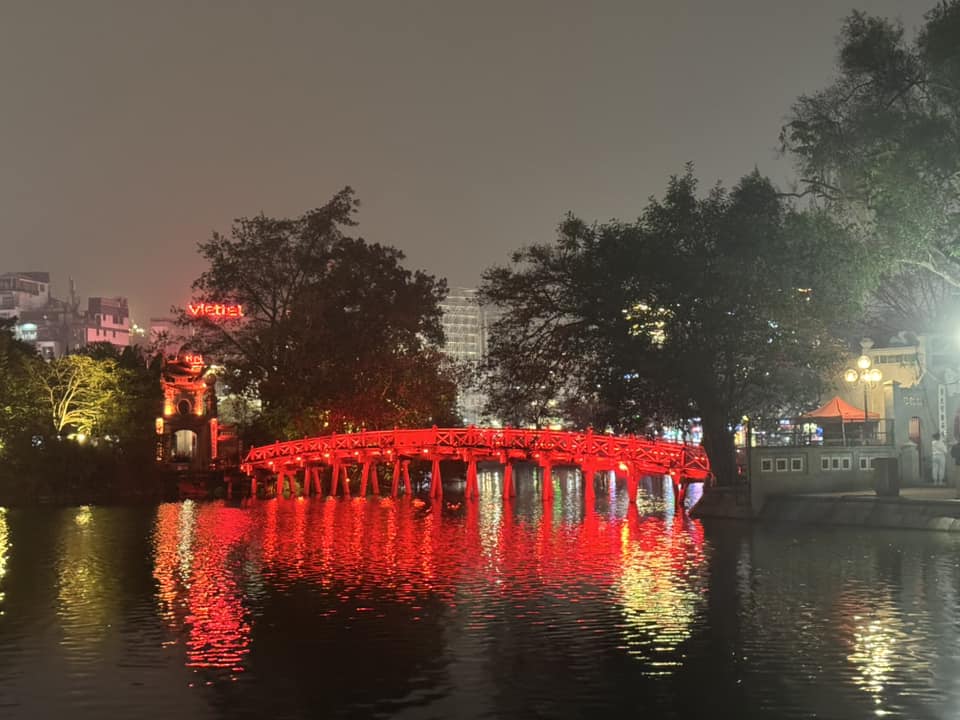
Locals and tourists stroll around the park, and some even dance. I got mesmerized watching them!
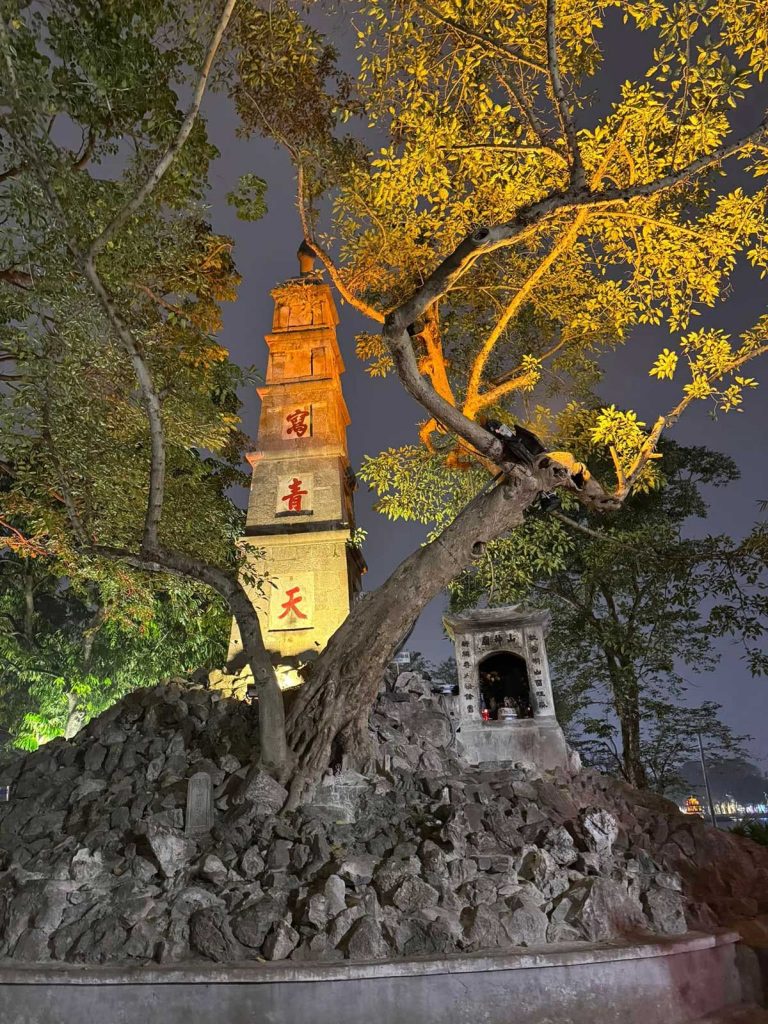
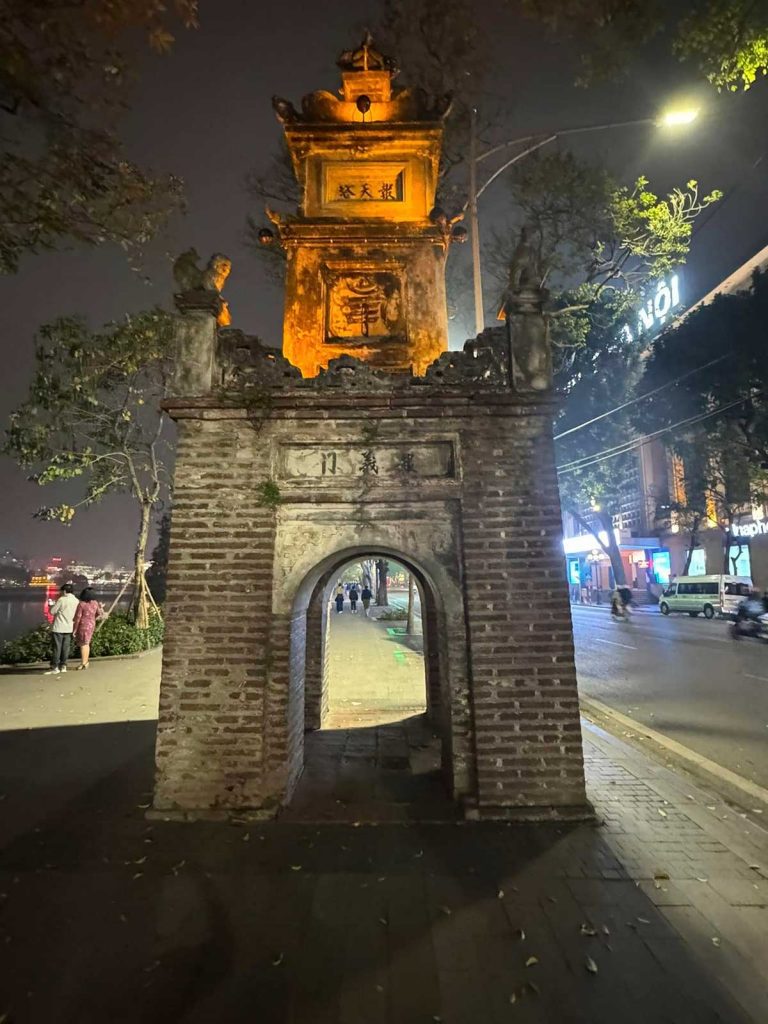
The evening city is buzzing with life, even on a weekday. Tourists truly love Vietnam and Hanoi.
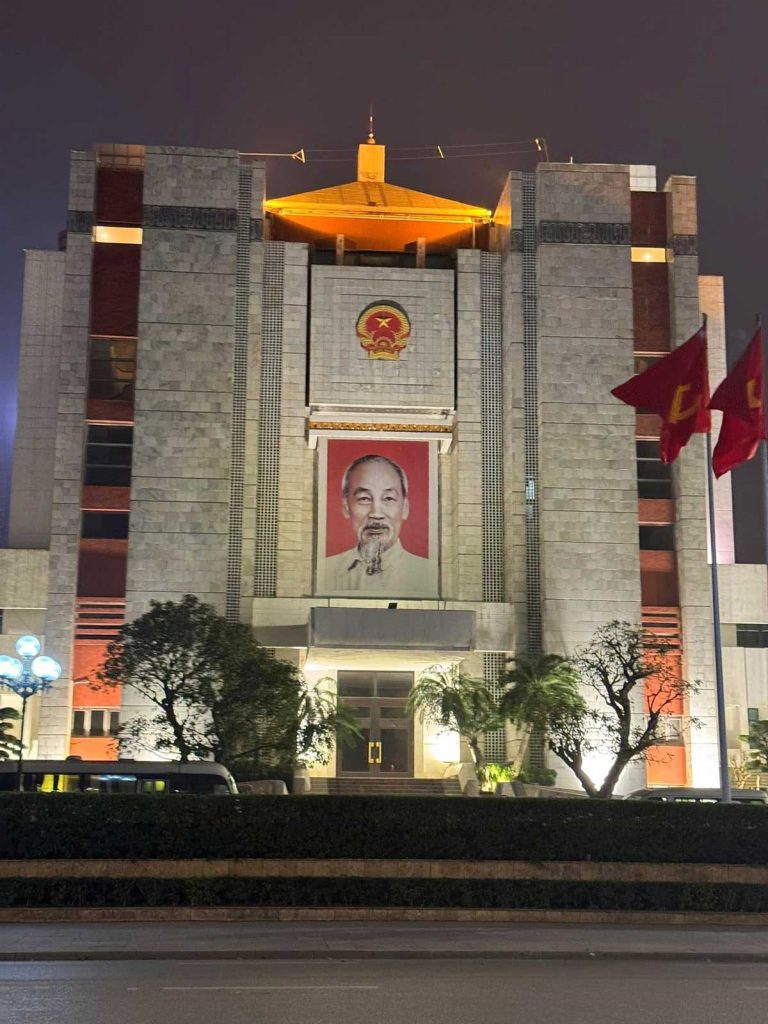
Tomorrow morning, we are taking a car and heading to Sa Pa to see the rice terraces. Though I fear the weather isn’t in our favor. It’s surprising—Laos is hot and sunny, yet after a 50-minute flight, it’s just 20°C here, covered in fog (or smog?). Oh well… But what can we do? Not go?
DAY 2
This is not how I imagined Vietnam. I mean, Hanoi – yes, pretty much as expected. Messy, noisy, typical Asian chaos. But heading north, the towns along the road were surprisingly neat and tidy. Well-maintained squares of rice fields. Okay, rice fields, I expected that. But these cute little houses? And then—Catholic churches?! Come on…!
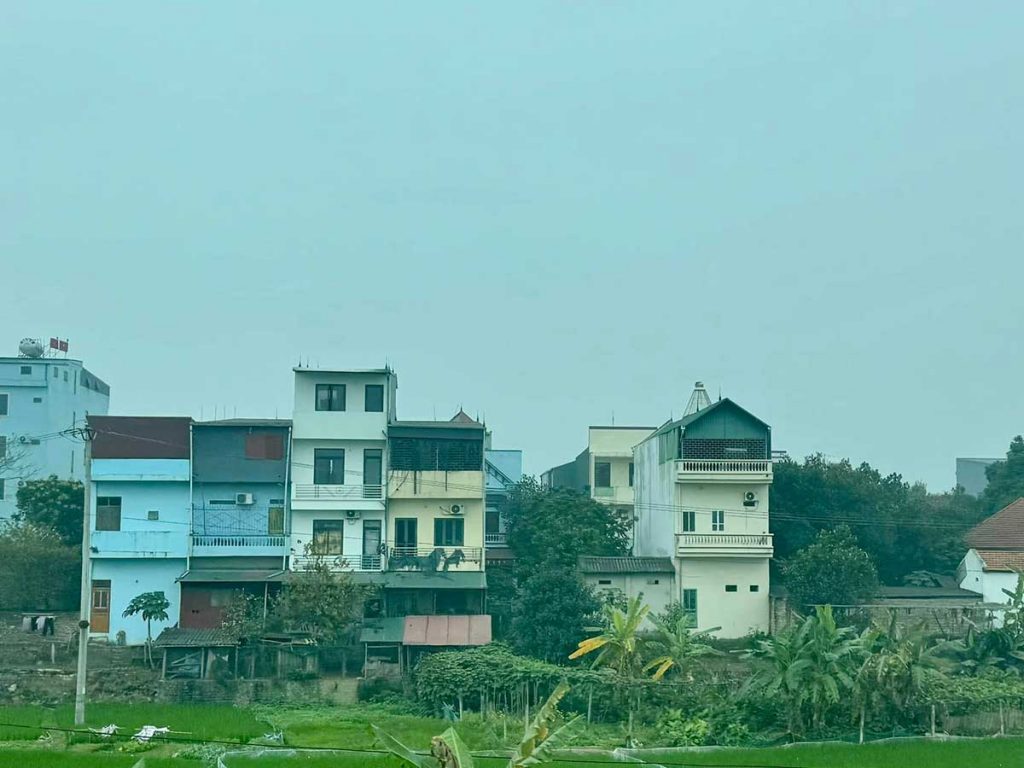
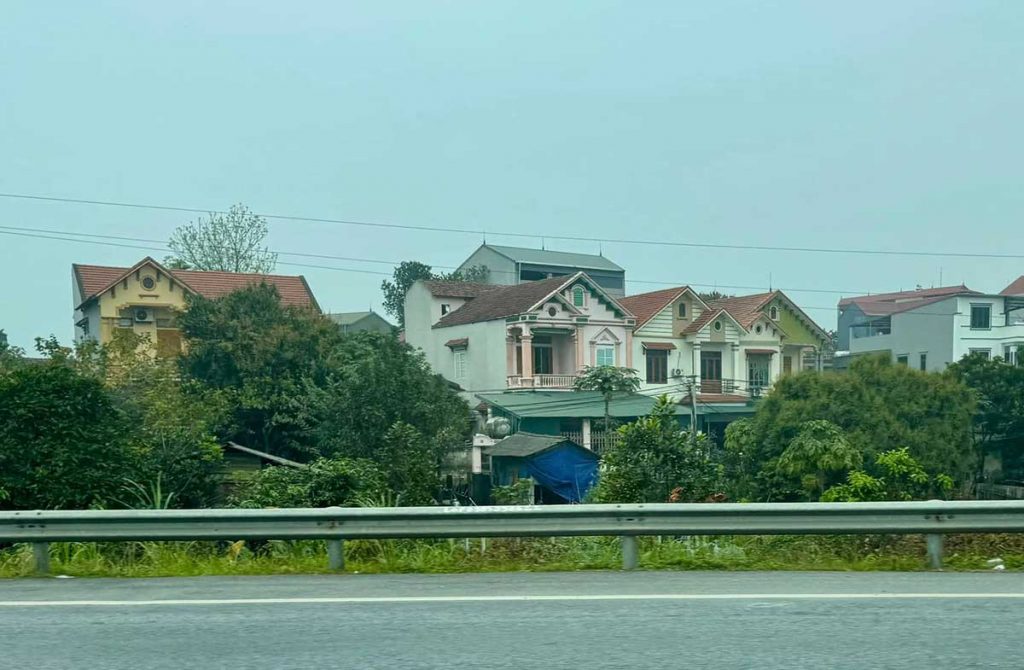
And the cemeteries along the way—now that was something unexpected. First of all, there were a lot of them, all right by the road. Secondly, they were… funny, sorry, but just so decorative! Managed to snap a couple of shots from the car.
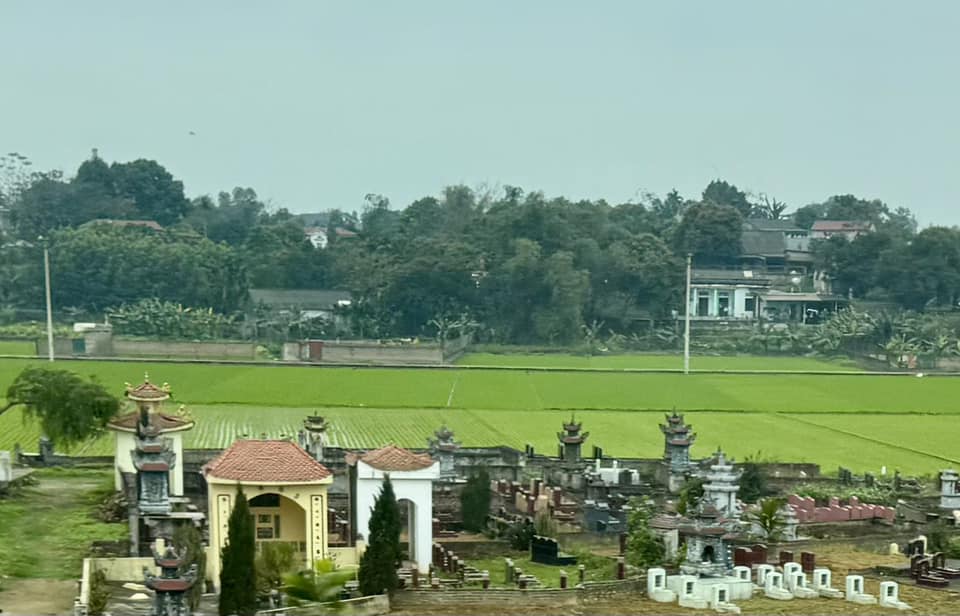
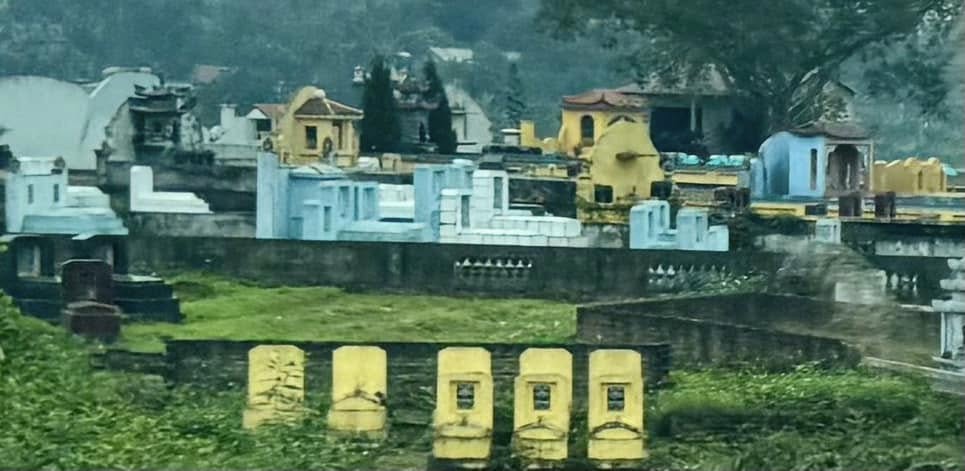
The road was great—such a relief after Laos. Well done, Vietnam. But the trash along the roadsides… Can’t escape that in Asia.
As we got closer to Sa Pa, the rice terraces began—absolutely stunning!
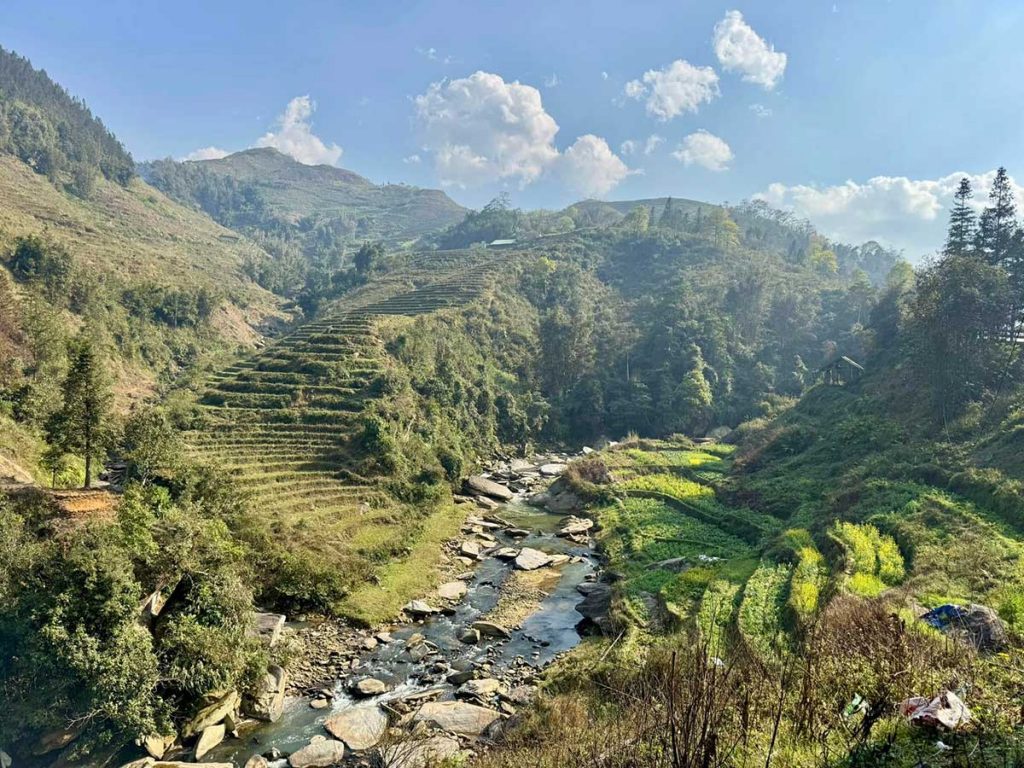
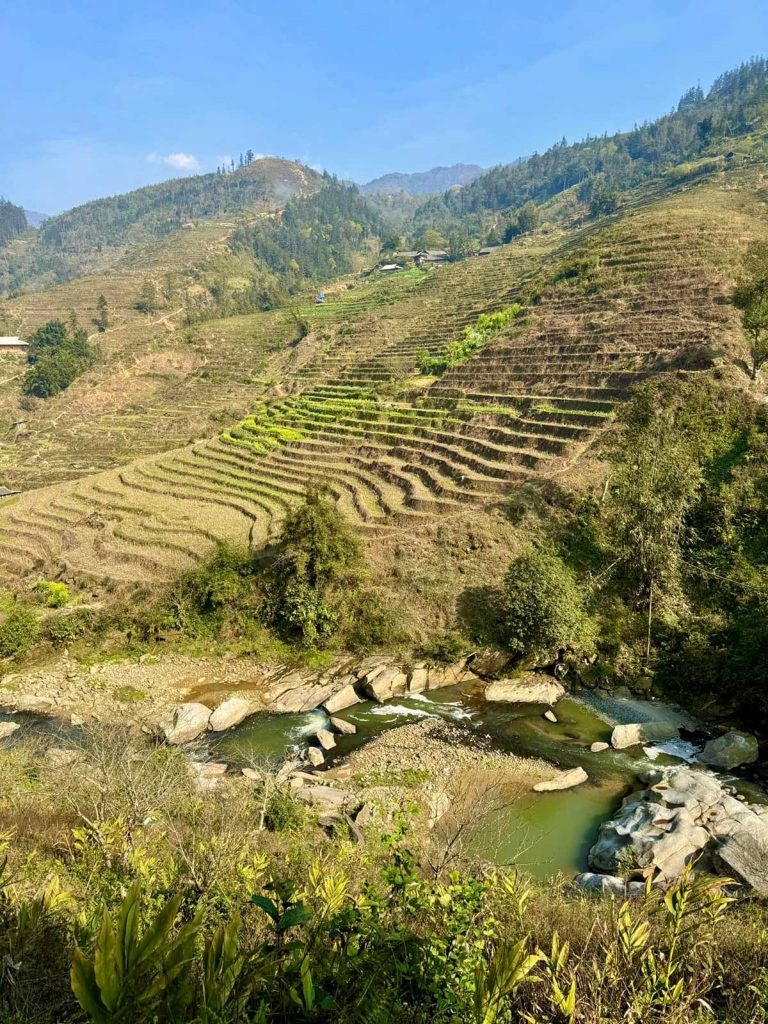
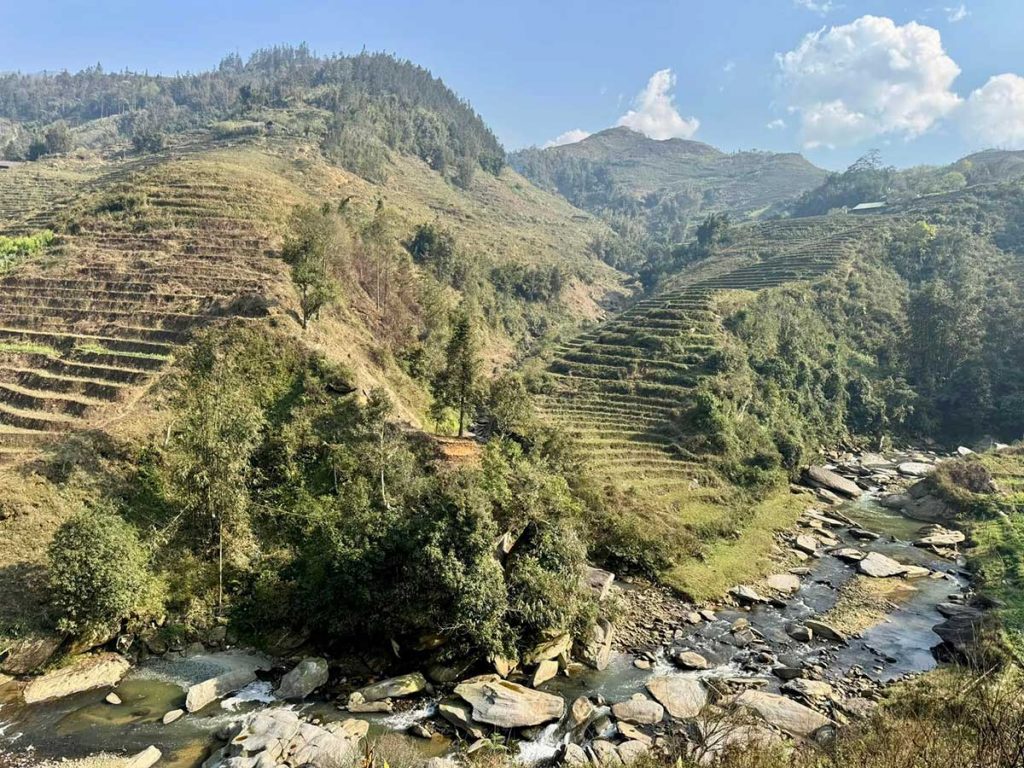
At the hotel, they treated us with unexpected respect for arriving in our own car. The guy at the reception was so surprised, he called his friend over to show her “the couple who drove here!” No idea why. The road wasn’t even difficult.
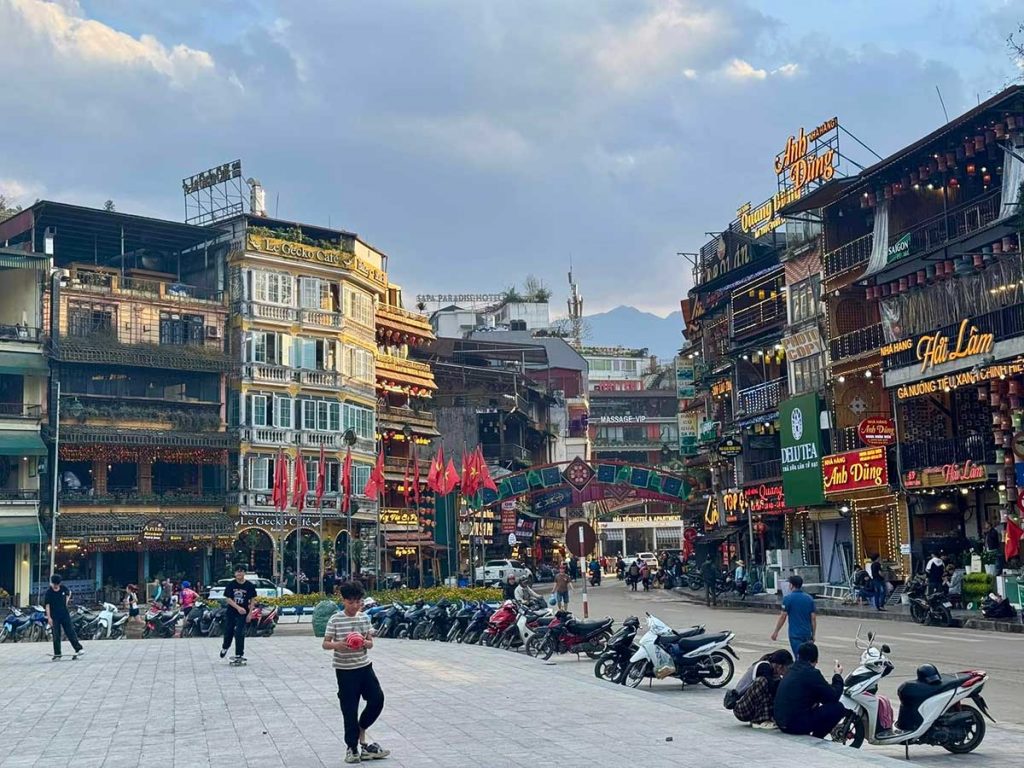
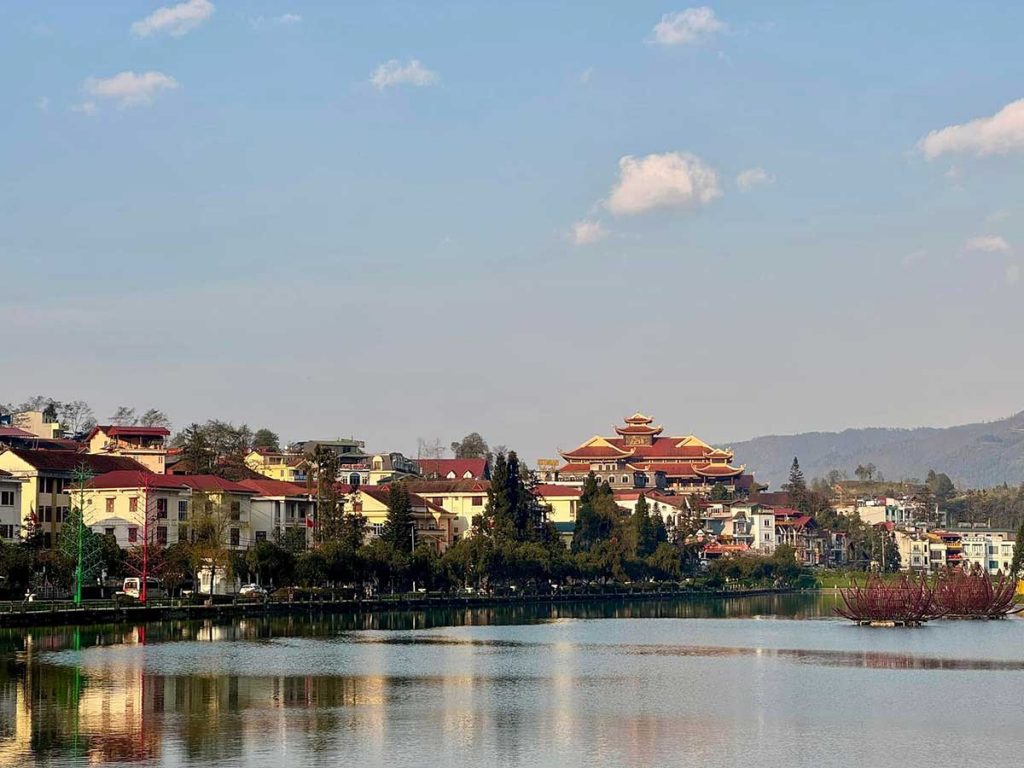
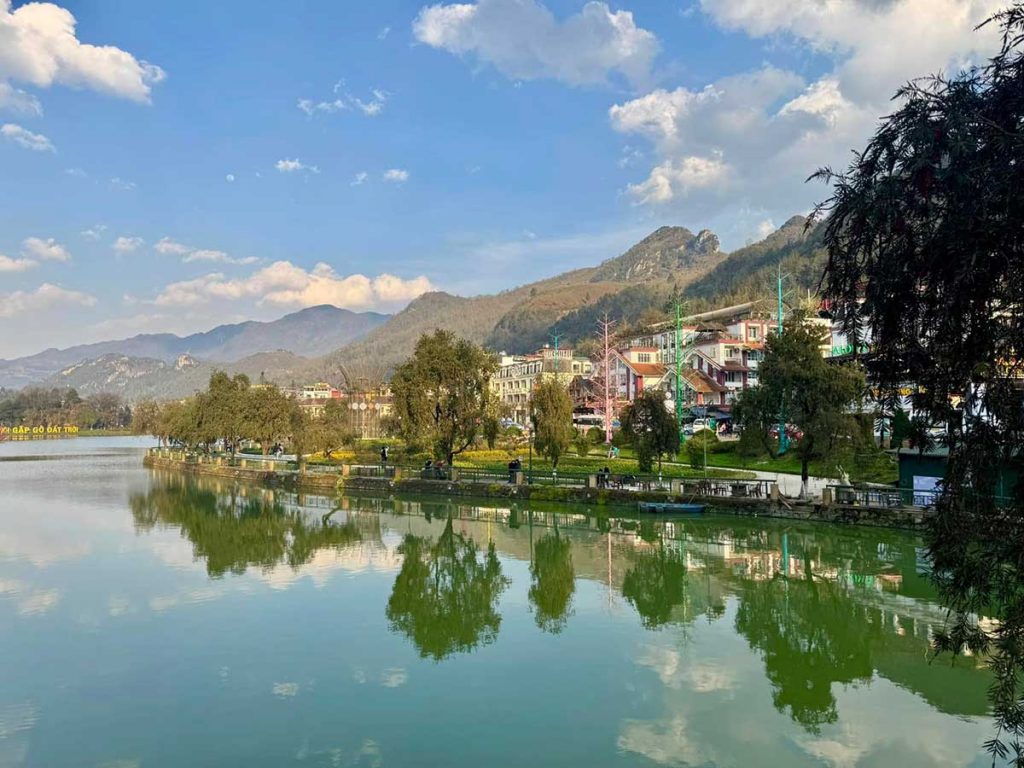
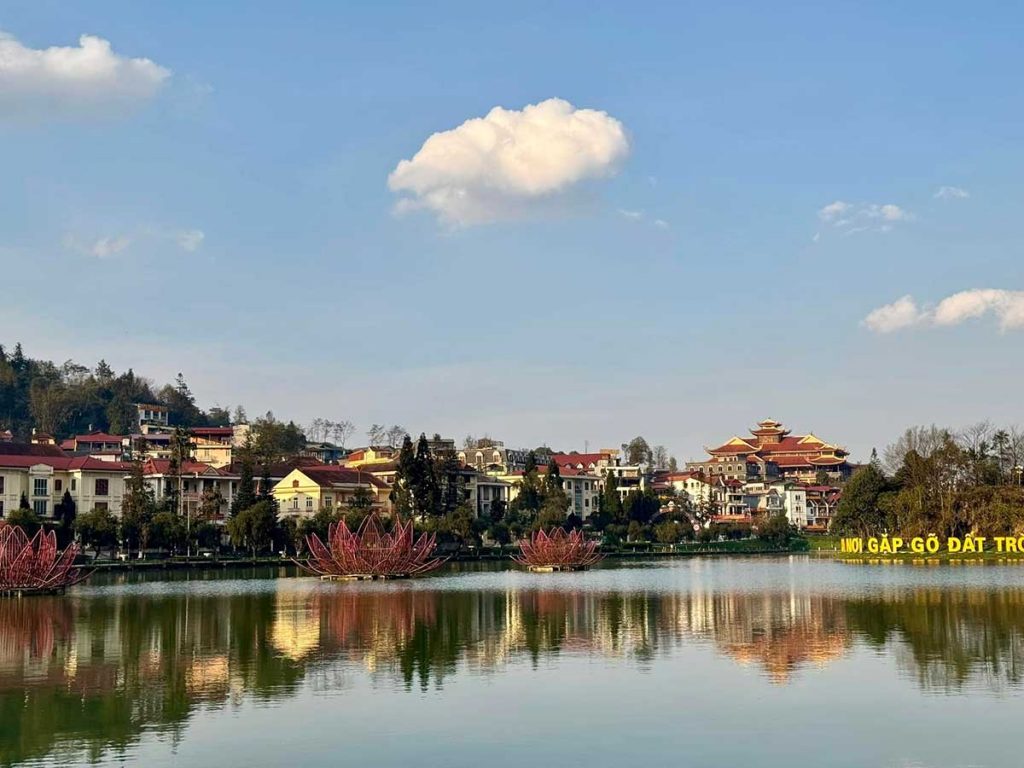
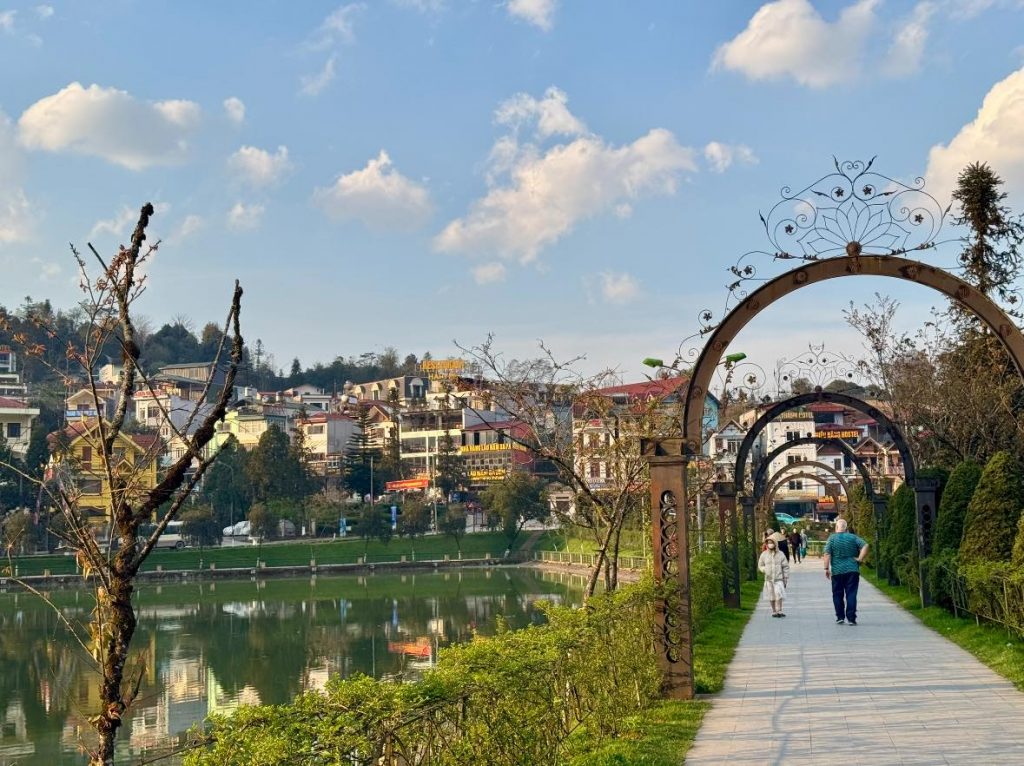
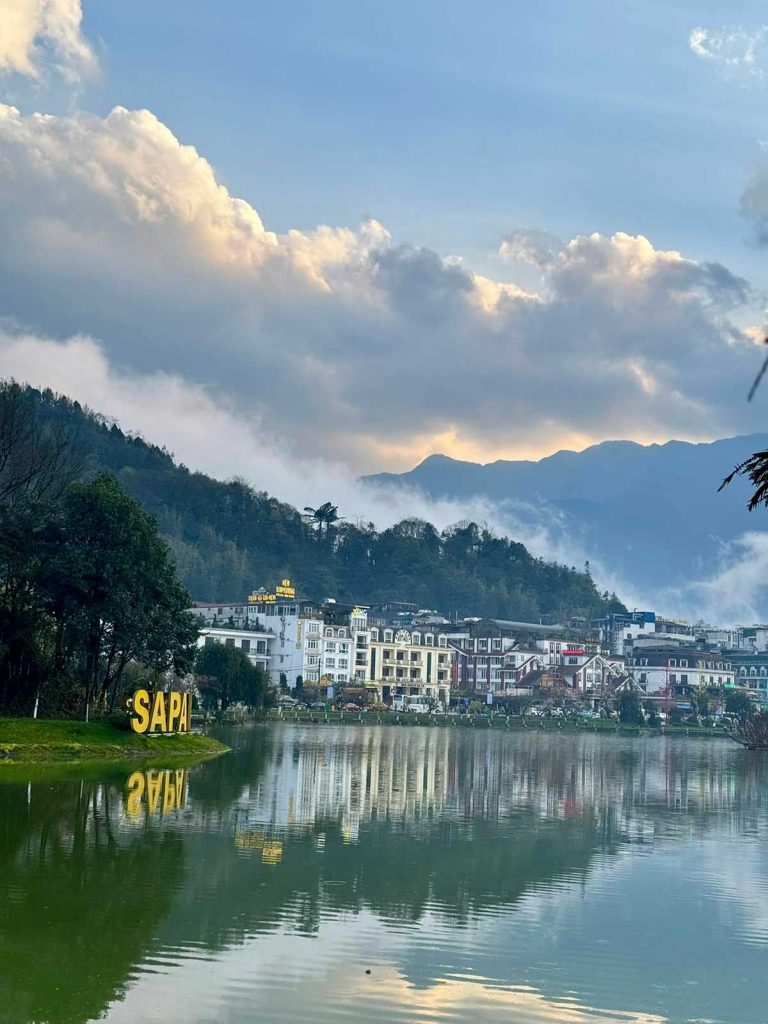
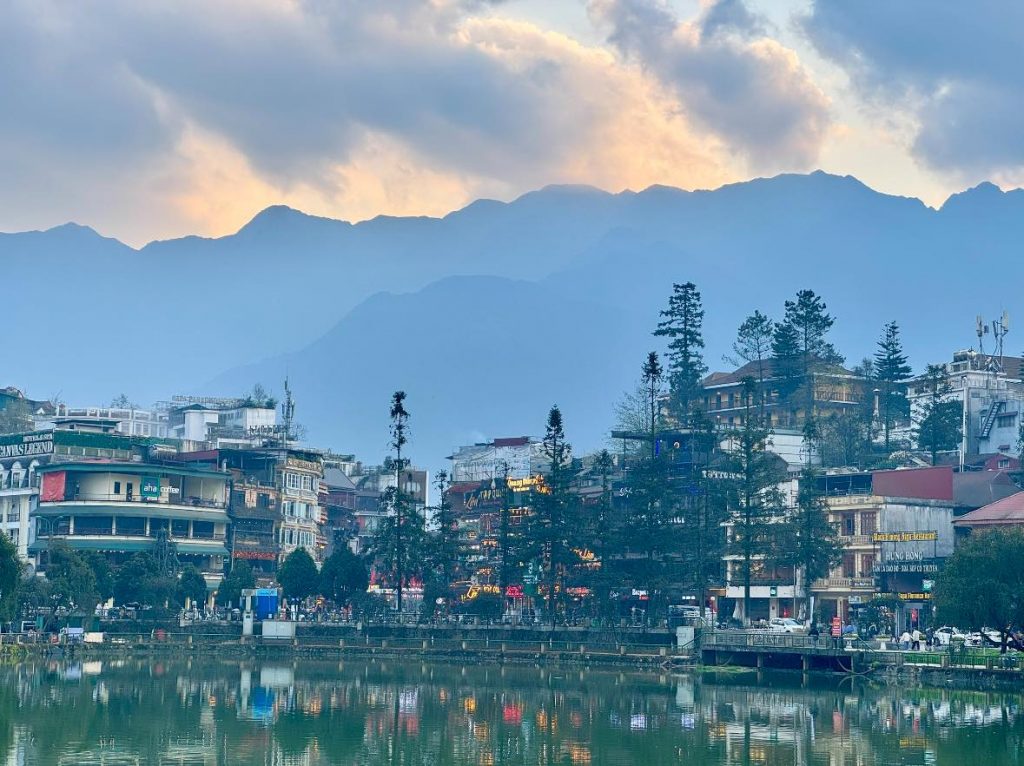
Sa Pa itself is absolutely lovely, very charming! We wandered through the town and then went back to the hotel to pray for good weather tomorrow. Though, technically, we should have gone to a temple to do that. But which one—Buddhist? Catholic? Oh well, fingers crossed, let’s hope for the best.
DAY 3
Well, today we actually got lucky. Woke up, looked outside—uh-oh, Sa Pa completely covered in fog. And we were supposed to go up Fansipan (3143m) by cable car. But the porter showed us a photo: “Look, it’s clear up there.” Okay then.
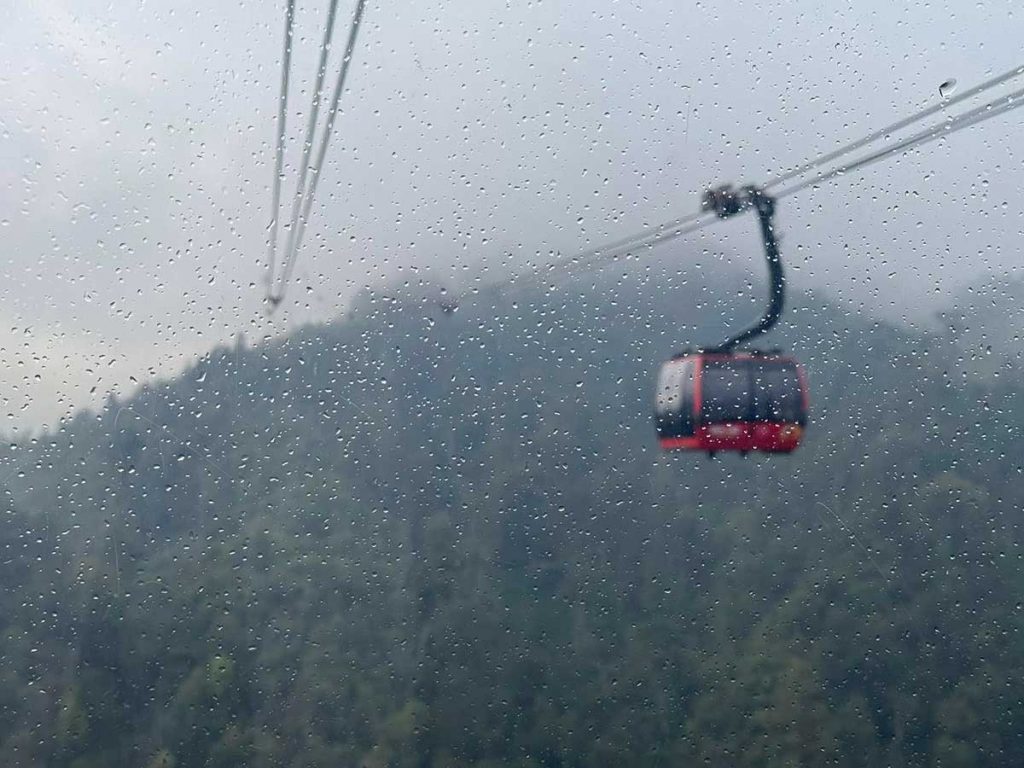
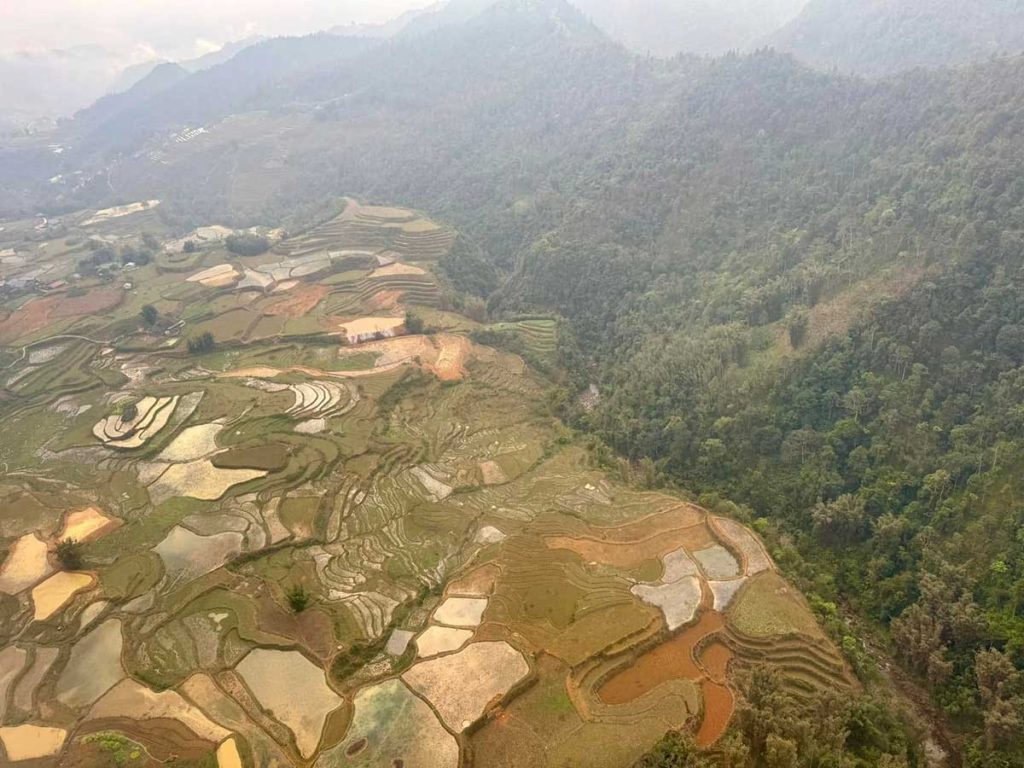
We ascended this highest peak of Indochina on one of the longest and steepest cable cars in the world. The views—breathtaking, even though everything was wrapped in mist. But the closer fields were clearly visible, and they were just something else!

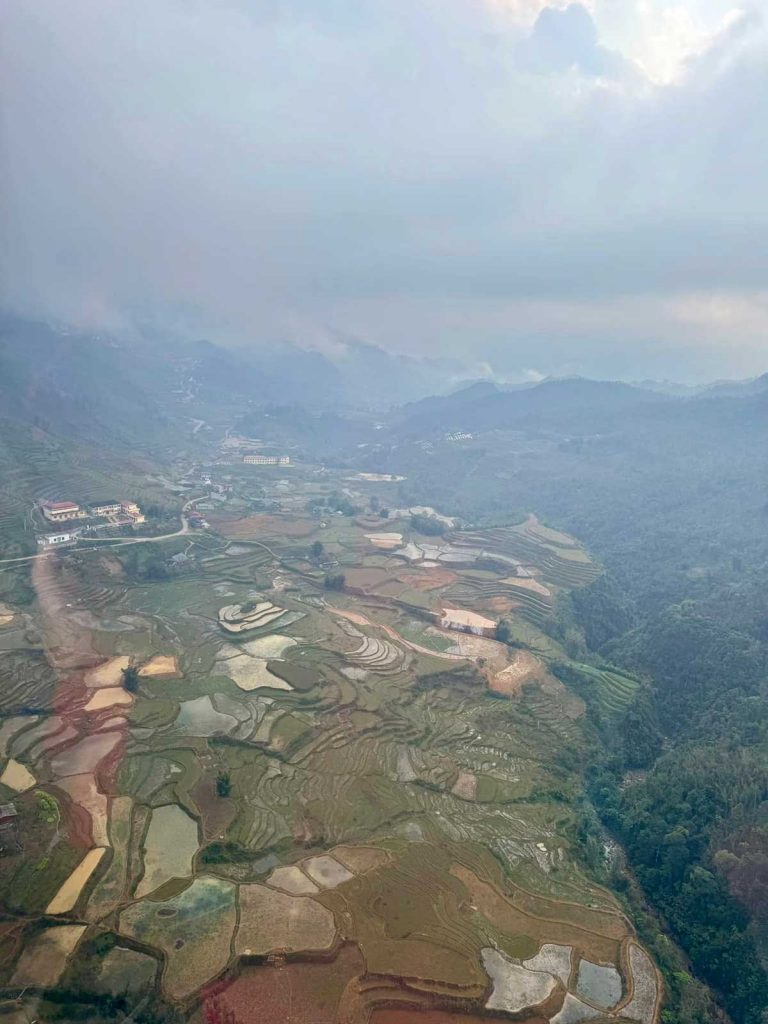
The cable car ride lasts a full 20 minutes, and in that time, the weather changes right before your eyes. One moment—fog. The next—sun! Then, fog again.
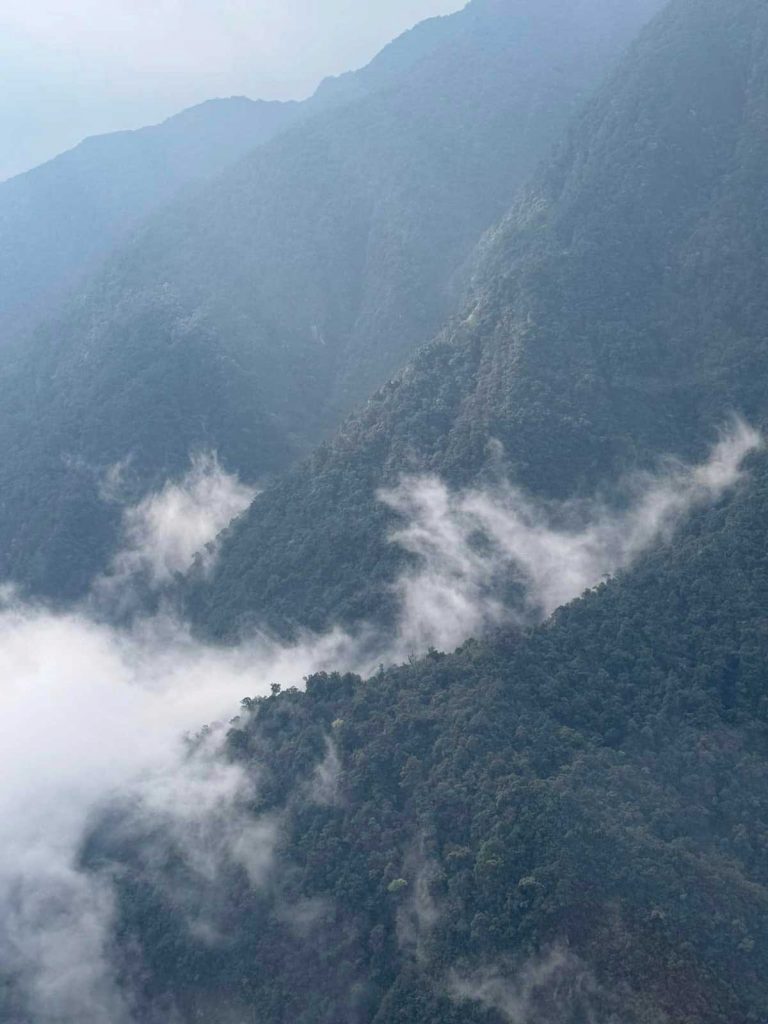
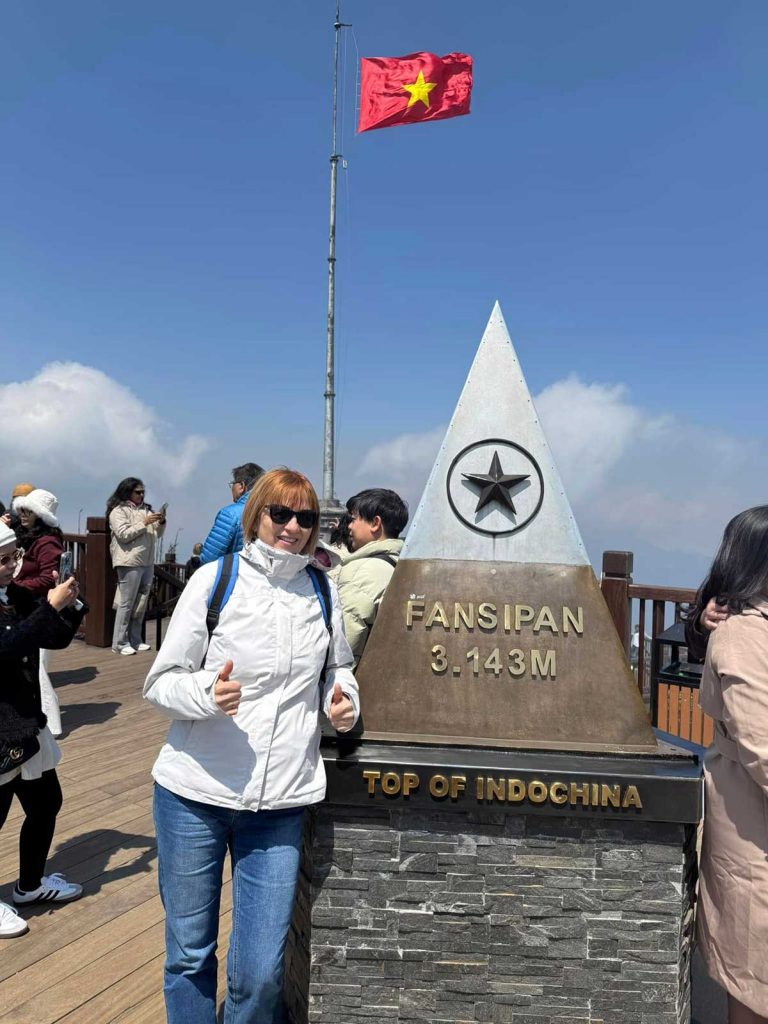
But! We stepped out at the top station—right into a cloud. Just great… (( Then we remembered the weather here changes hourly. Checked the forecast—need to wait an hour. The summit marker was installed by Soviet specialists who worked in Vietnam in the 80s and took part in an amateur mountaineering expedition.
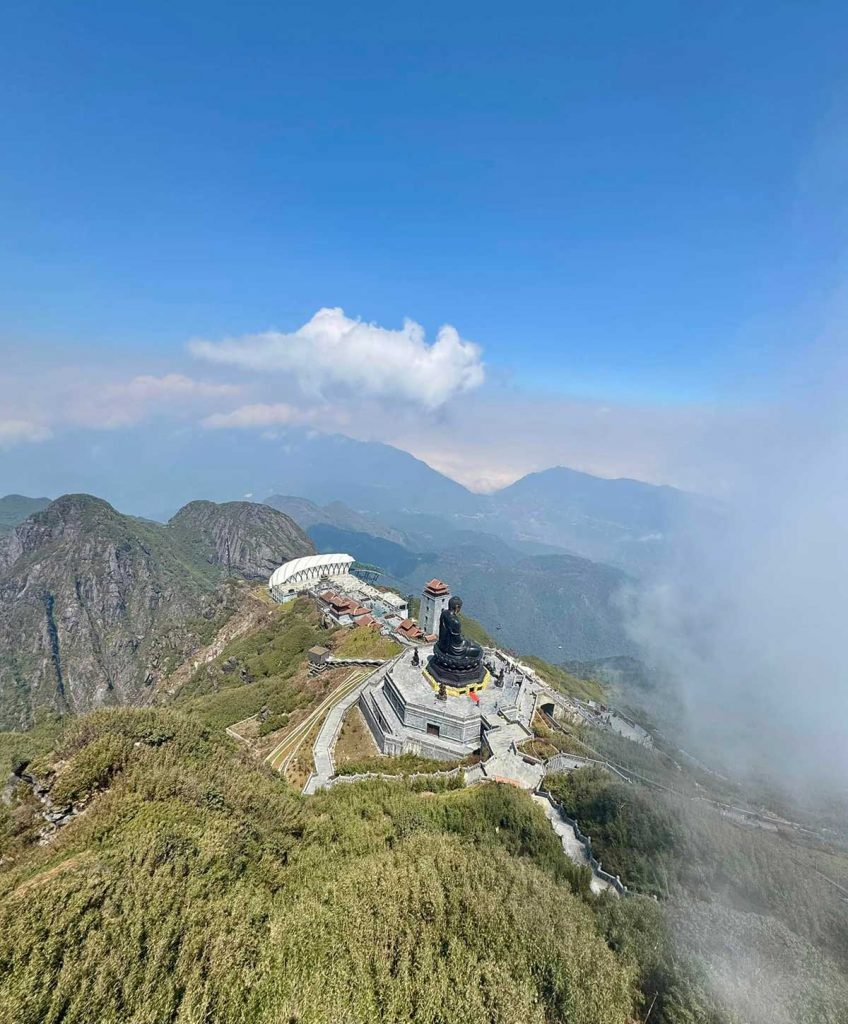
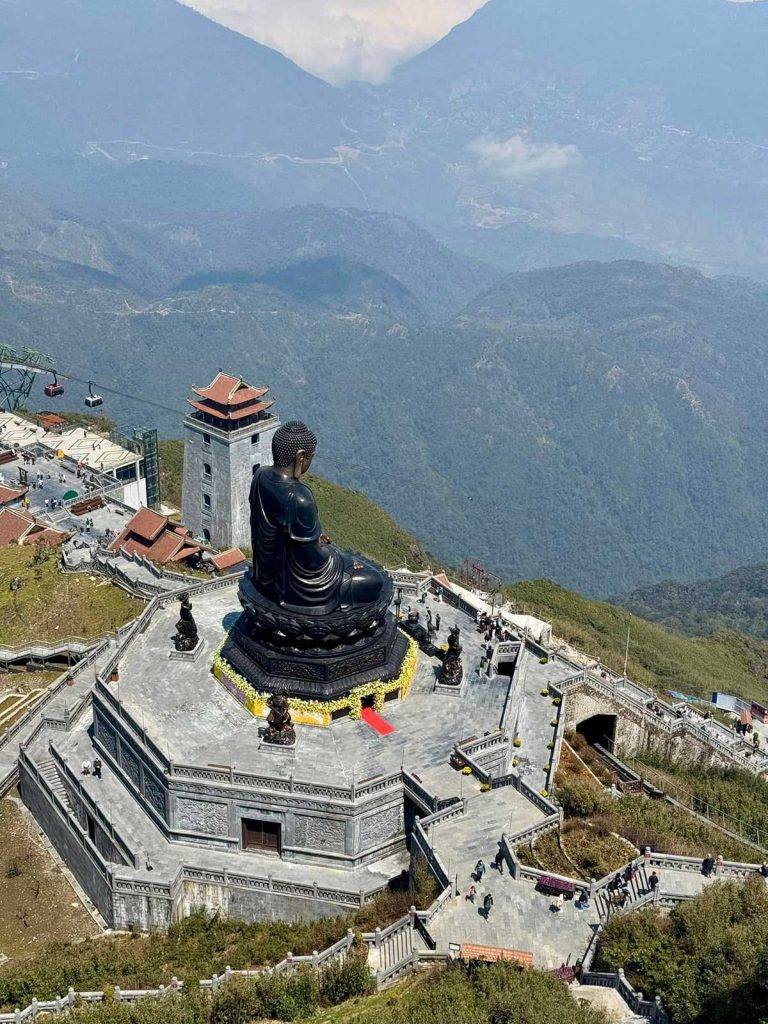
And sure enough! After an hour, the sky cleared, and we finally reached the summit, exploring the incredible temples, pagodas, and Buddhist statues. Sometimes mist rolled in, but it only added to the atmosphere. Absolutely incredible!
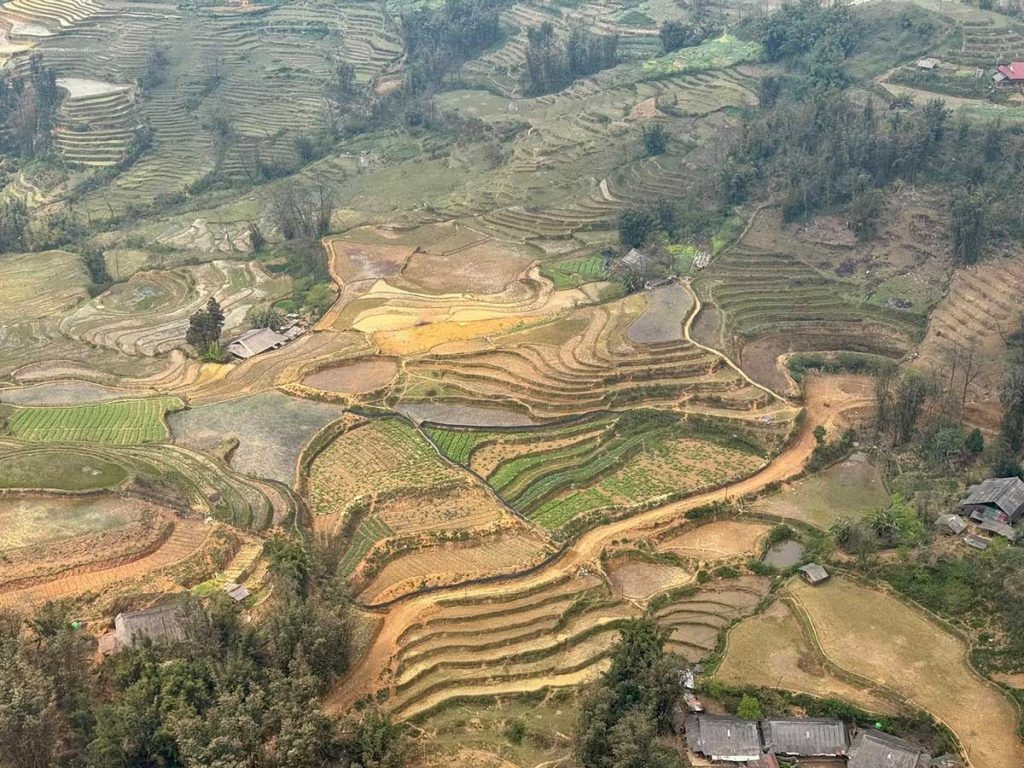
Coming back down to earth, we visited the Silver Waterfall, snapped some photos of the slopes, and—back into the fog! I managed to wander a bit above the rice terraces, but everything was shrouded in mist. Oh well…
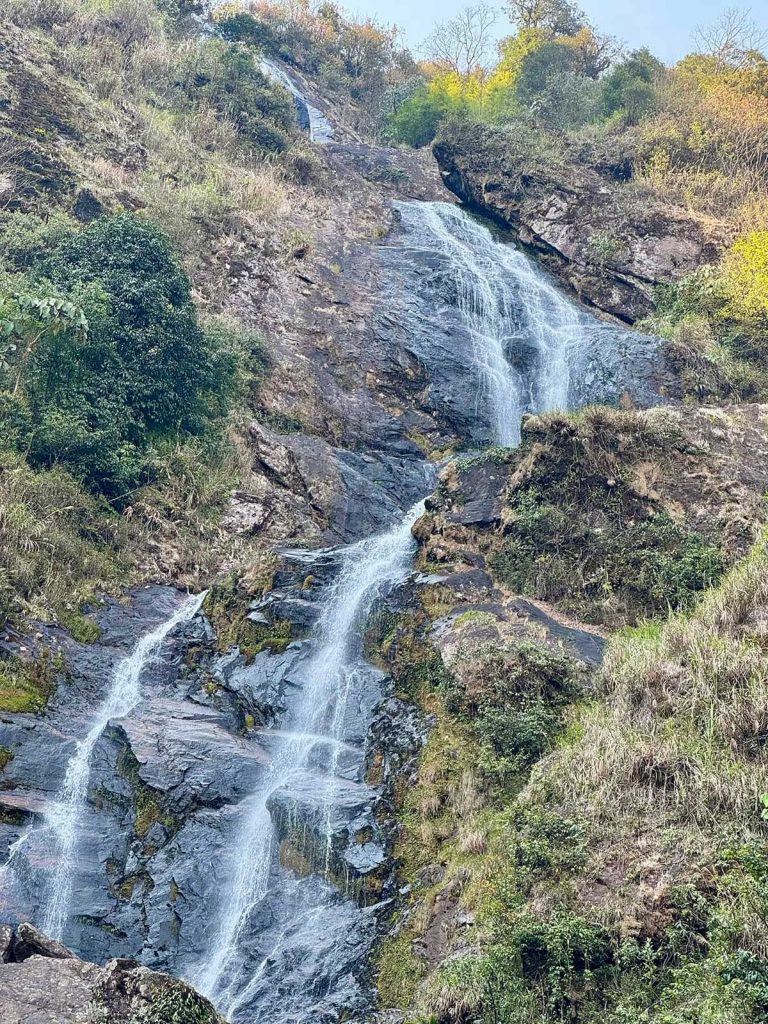
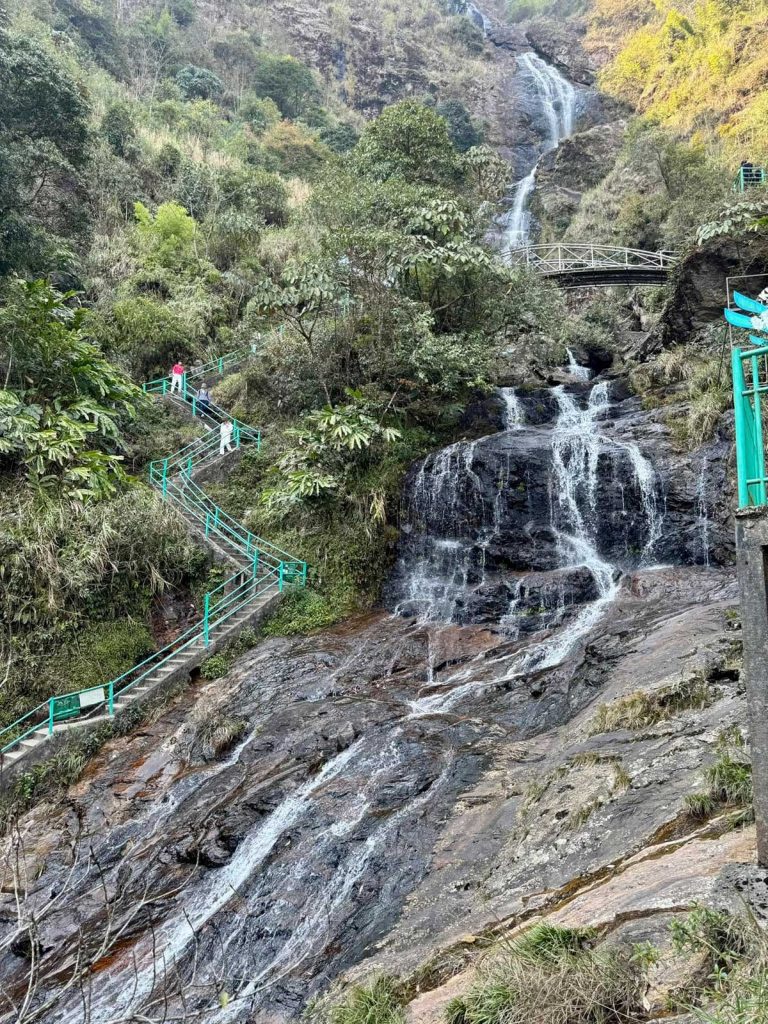
By evening, the entire city was wrapped in a thick cloud. We thought—how lucky we were to have captured all its beauty yesterday!

DAY 4
The rain was pouring all night outside the window. We thought—how lucky we were to have seen everything yesterday.
We left Sa Pa, but took a different road, not the main one. Needed to stop by another place along the way to see some ancient petroglyphs.
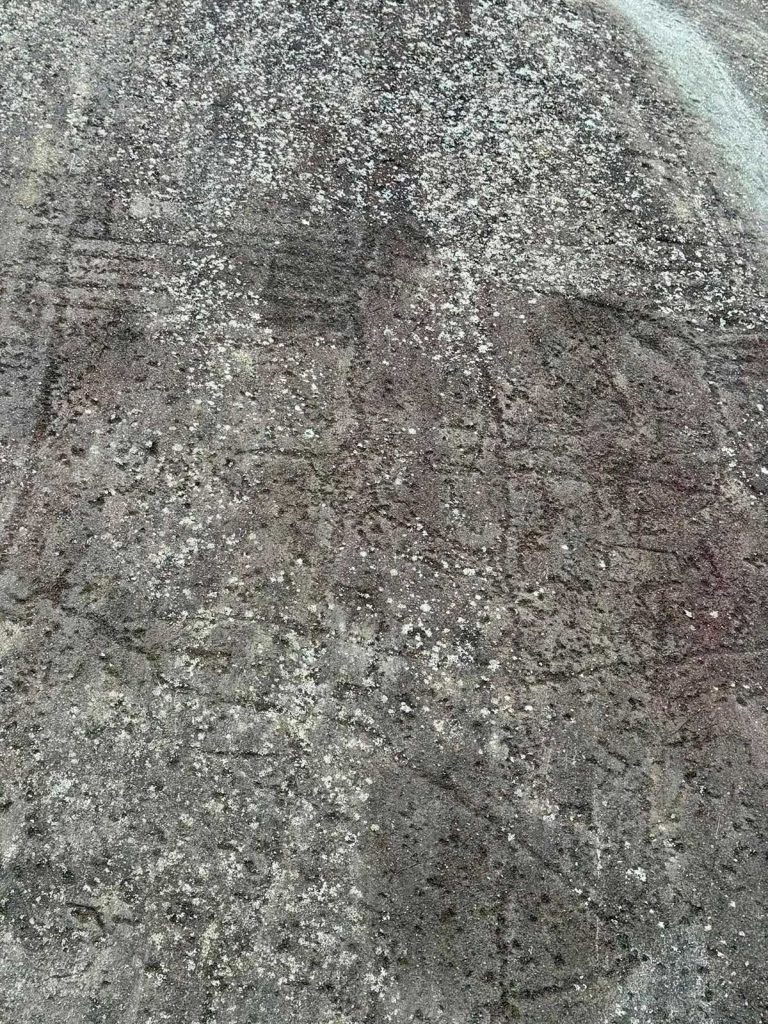
And then it happened. The celestial artist suddenly got generous and decided to put on a farewell art show just for us.
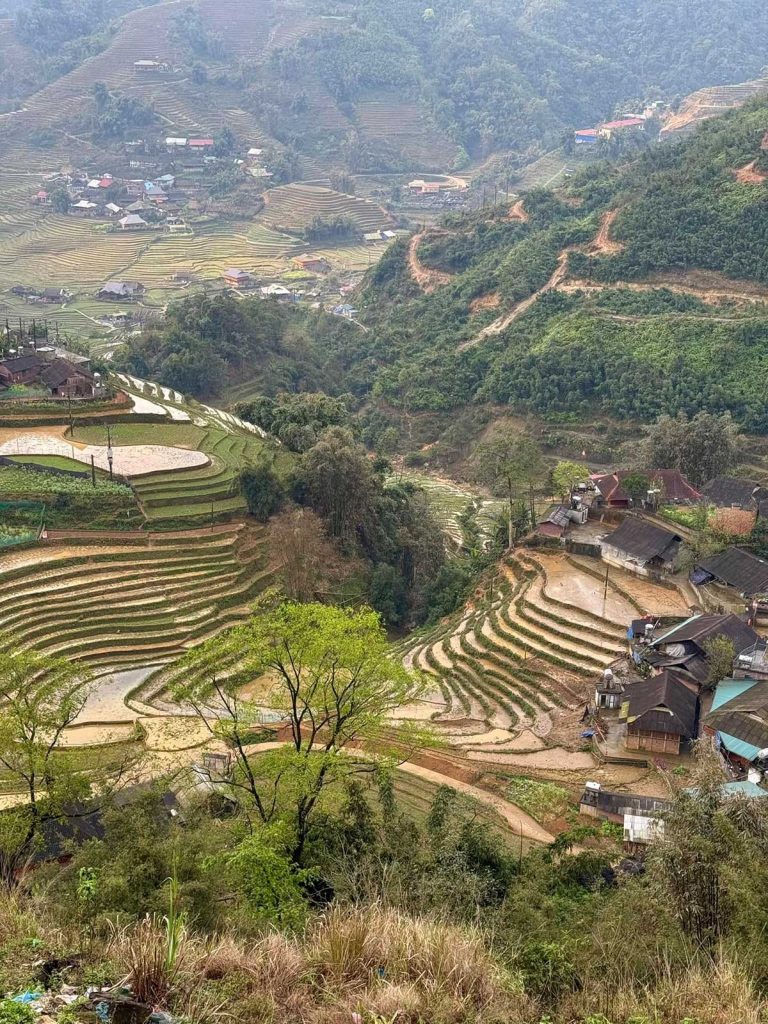
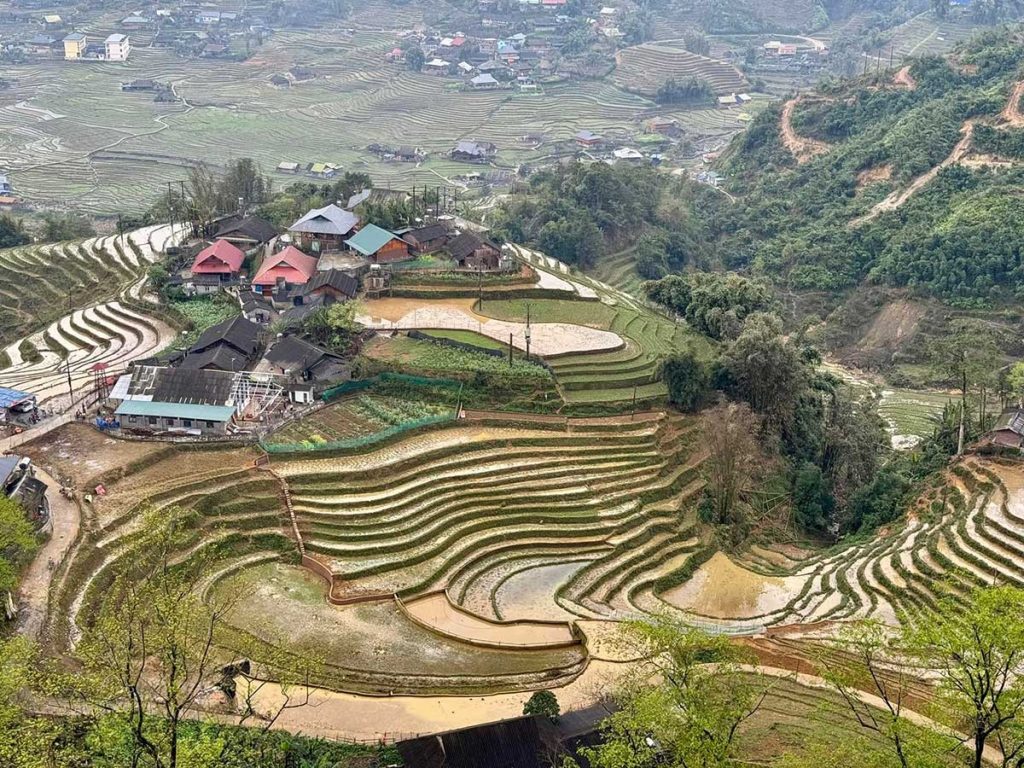

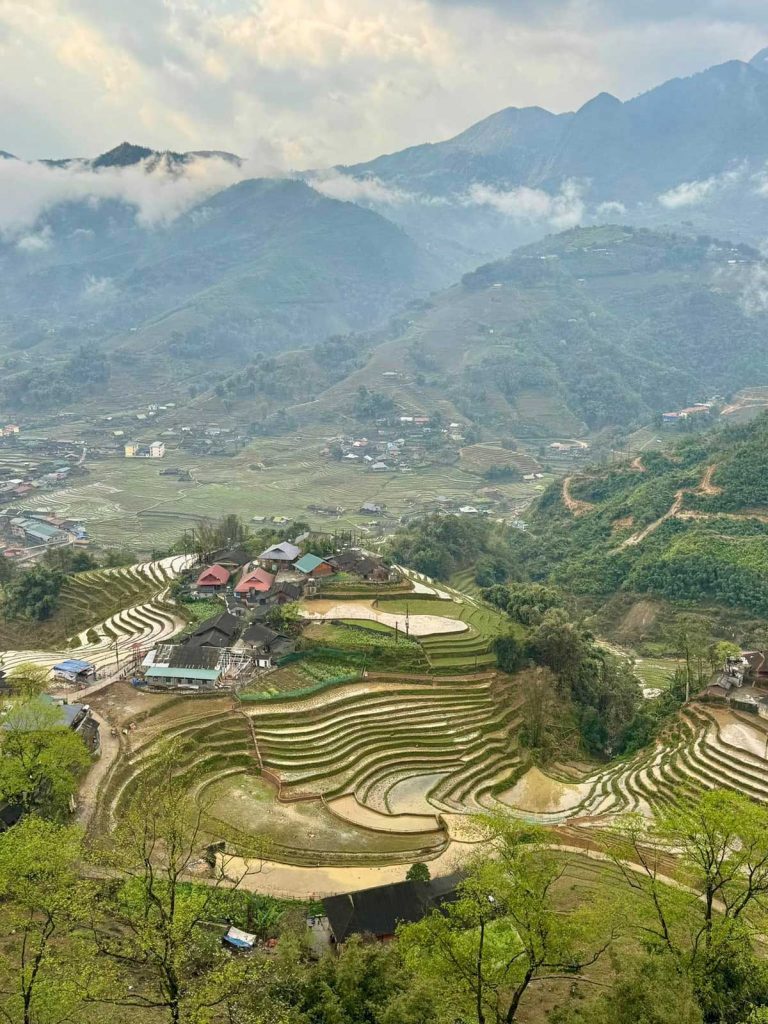
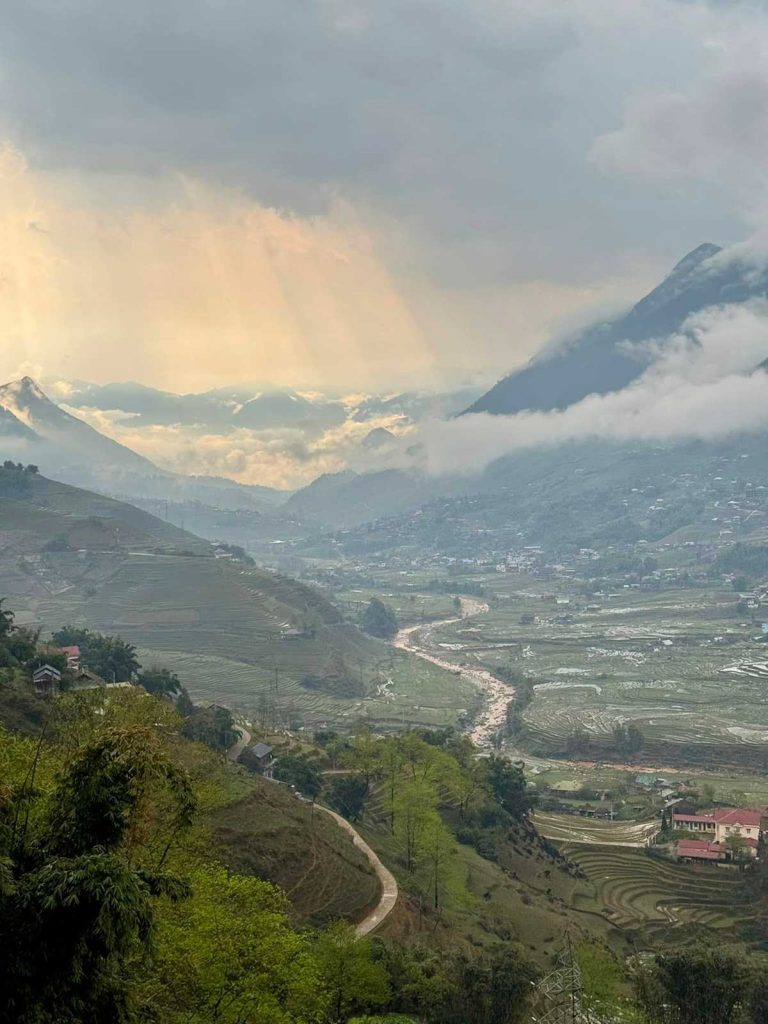
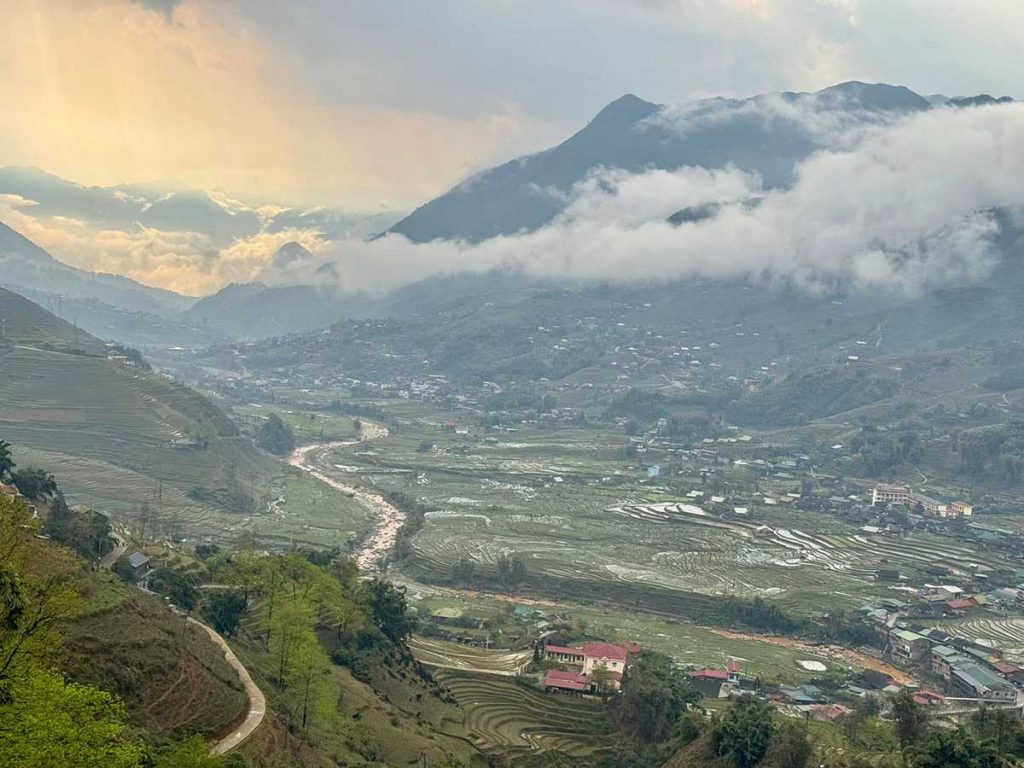
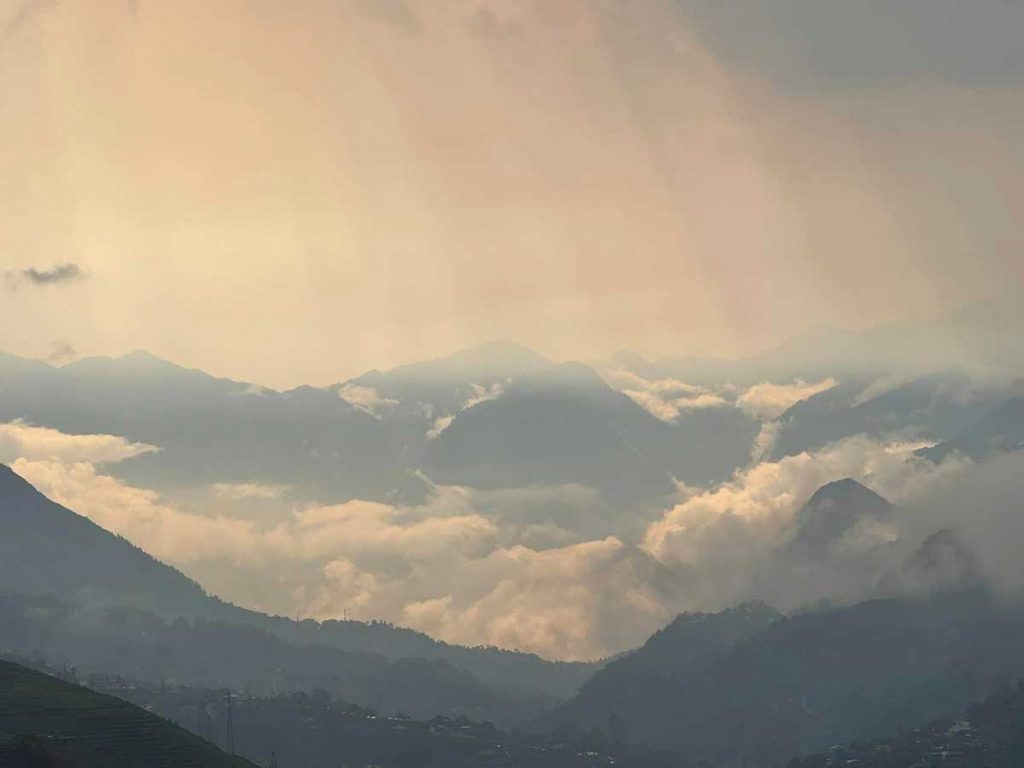
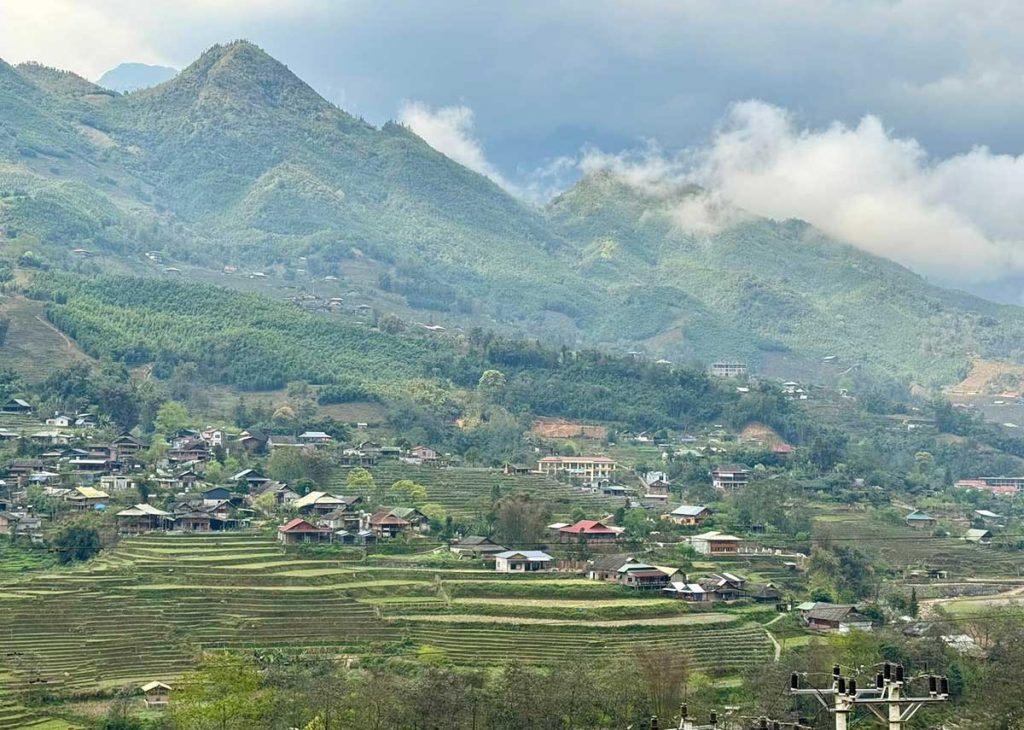
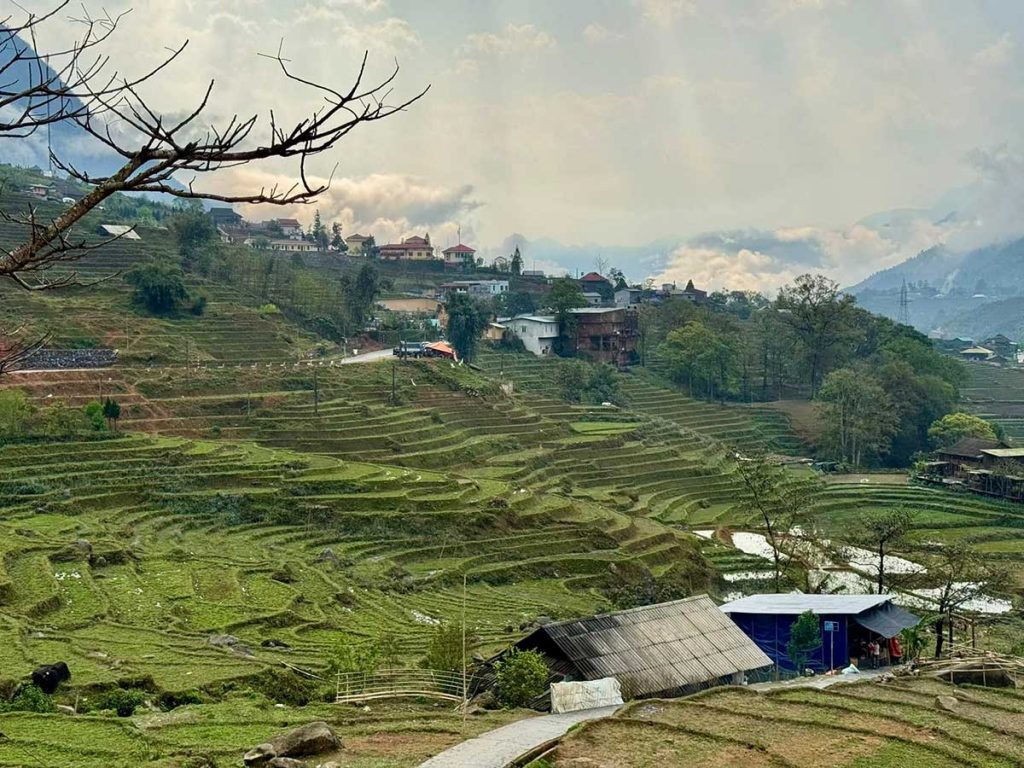
Want rice terraces? No problem. But let me add a touch of sky’s palette for you. A few sunbeams here. A cloud placed just right over there. Some misty haze in the corner. A few swirls—why not? That’s how I see it. Well? How do you like it?
The GPS took us onto some deep backroad, off the highway—probably trying to save us a toll fee. Seems like this area is all about plywood production. No cars, just motorcycles.
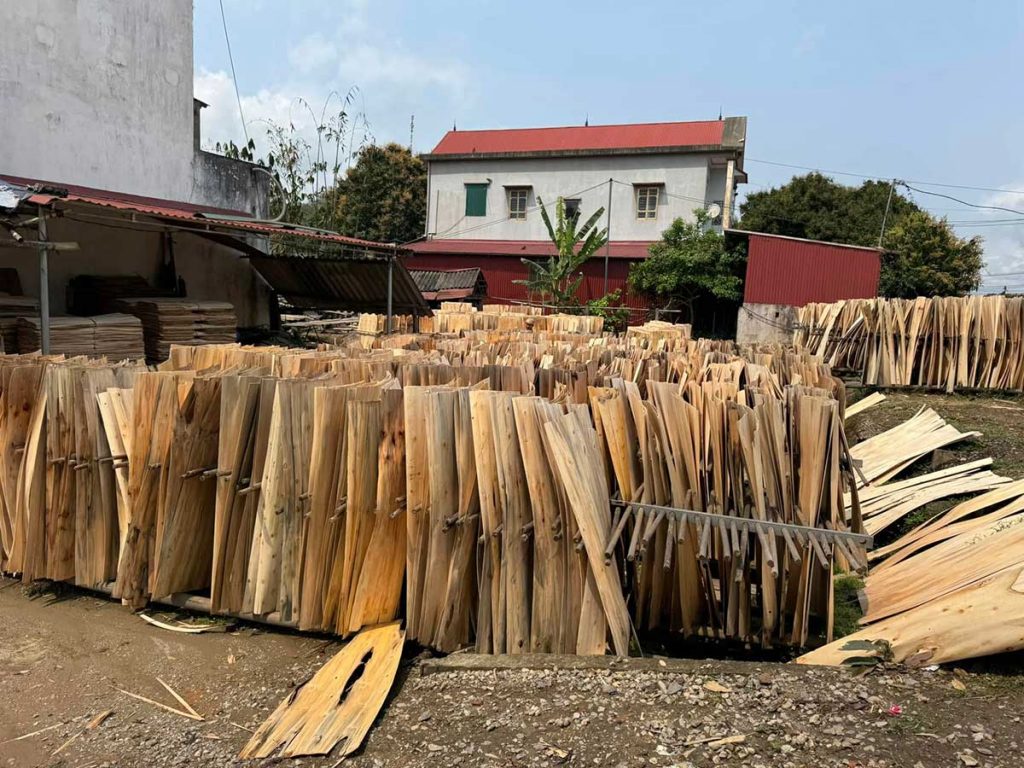
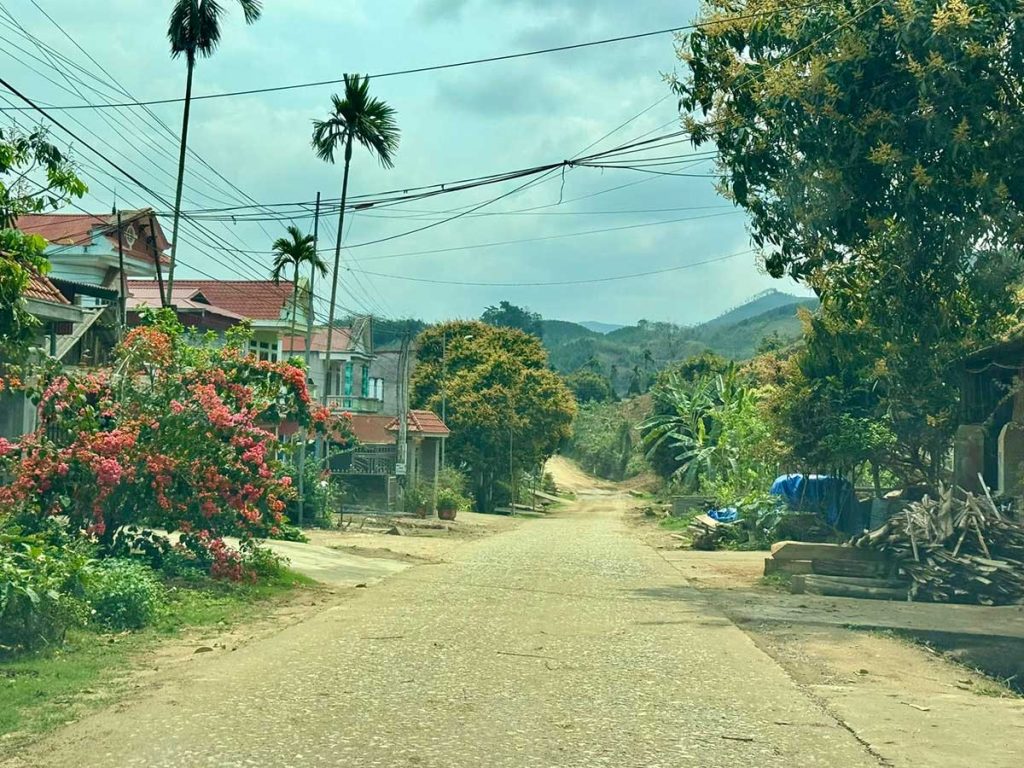
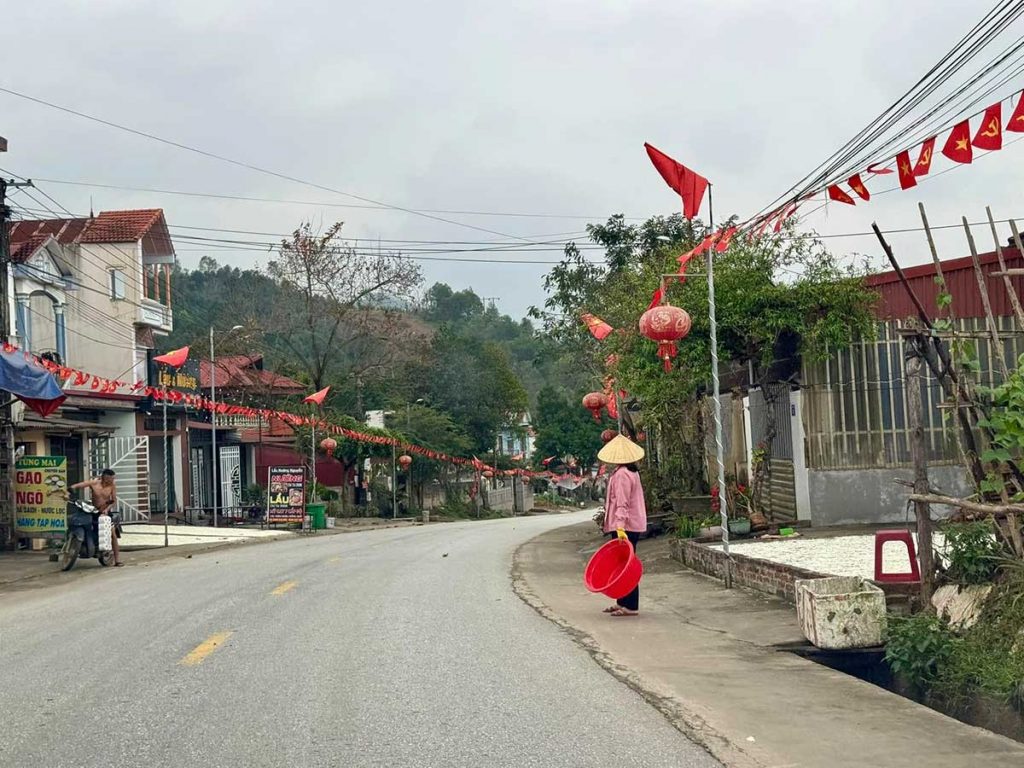


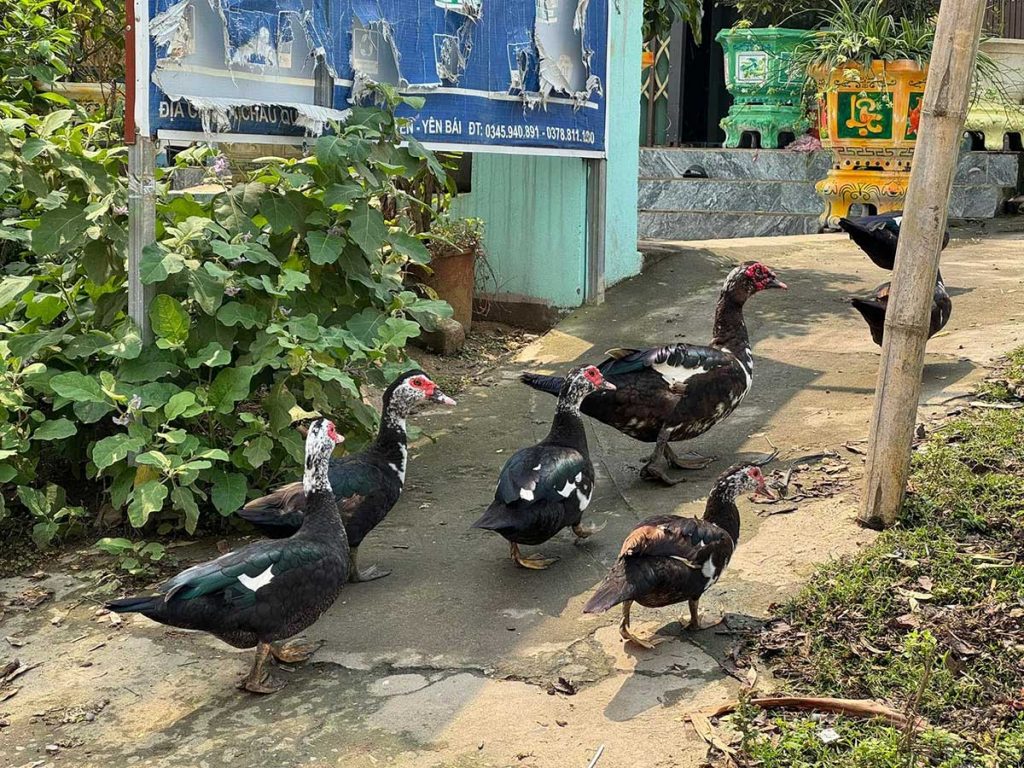
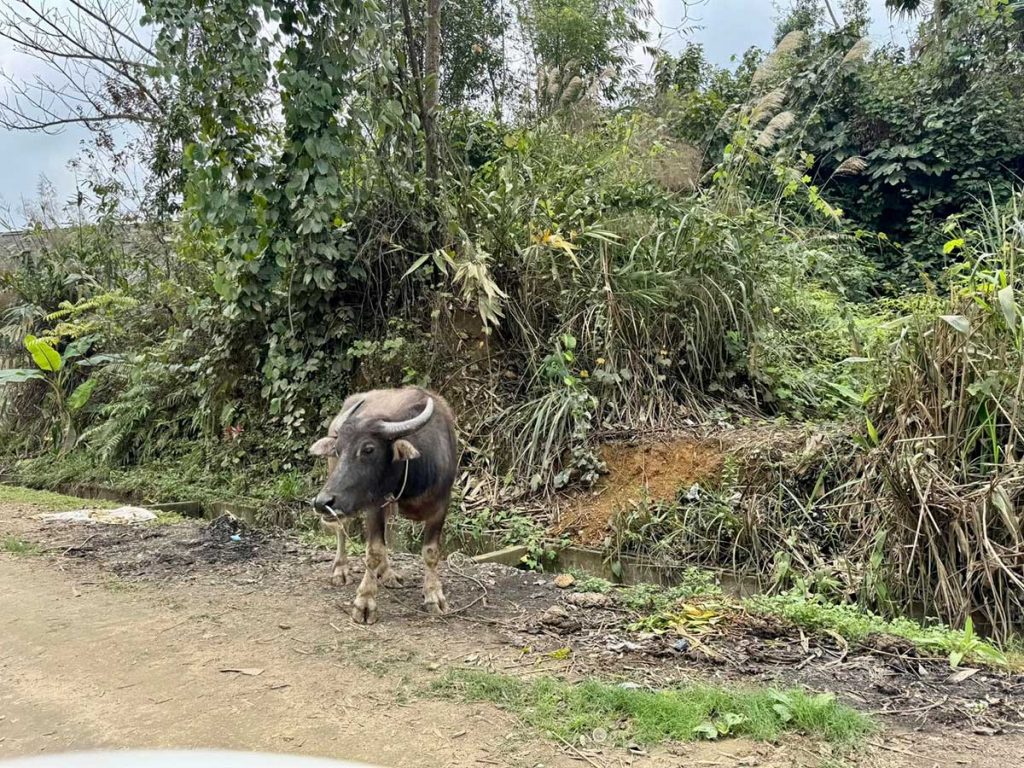
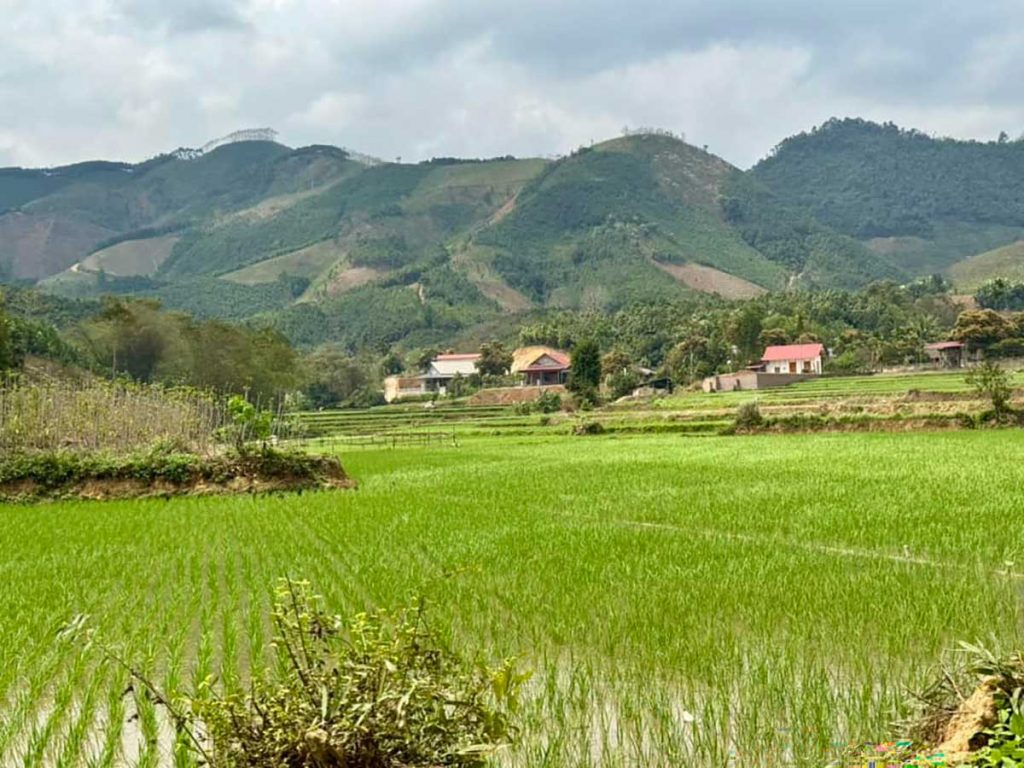
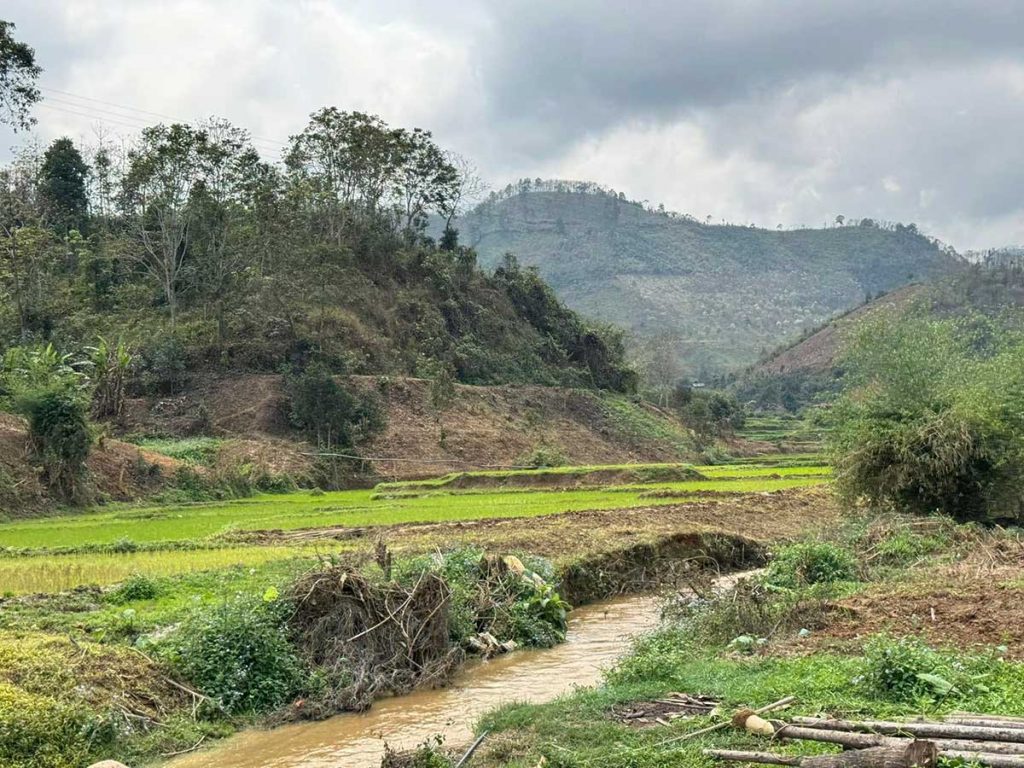
We were left speechless, in absolute awe. Goosebumps… This is the kind of moment that stays with you forever..!
DAY 5
Today we are just south of Hanoi, in Tam Coc, surrounded by karst hills. You’d think—haven’t we seen karst hills before? In China’s Yangshuo, in Laos not too long ago. But no, not like these!
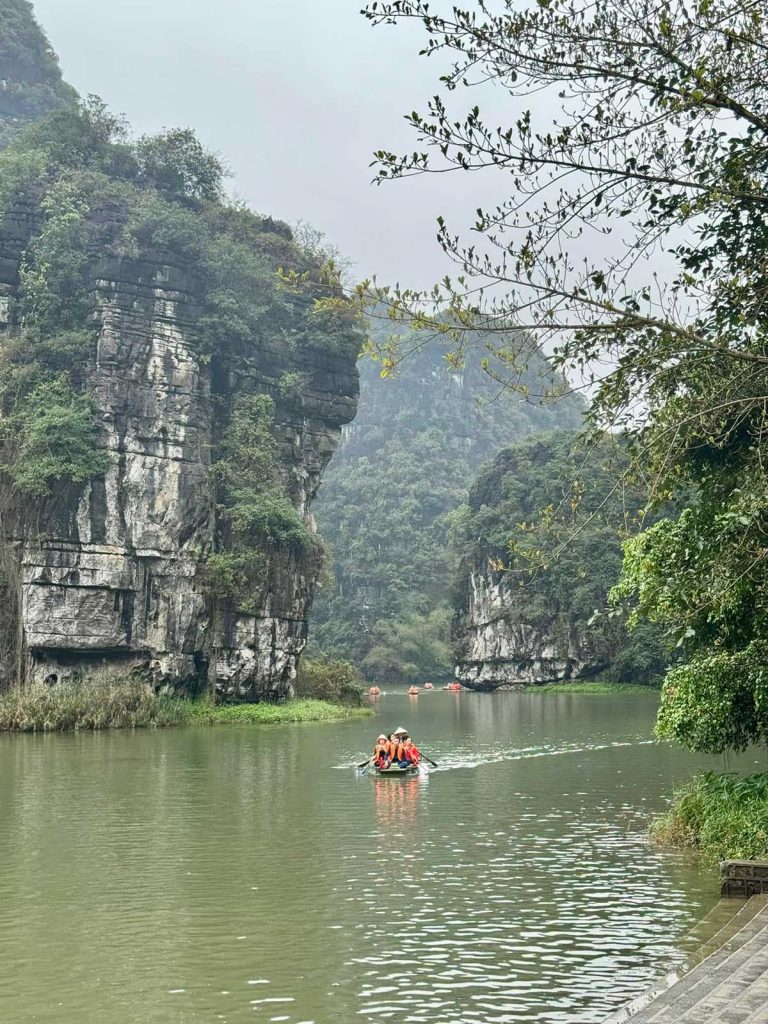
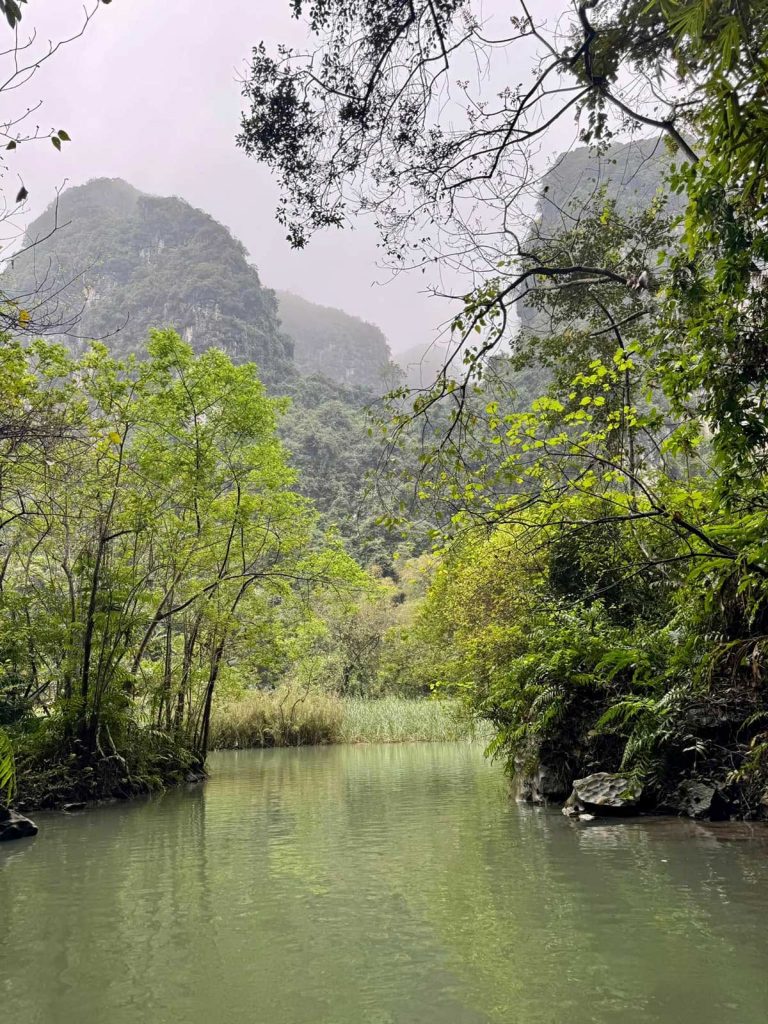
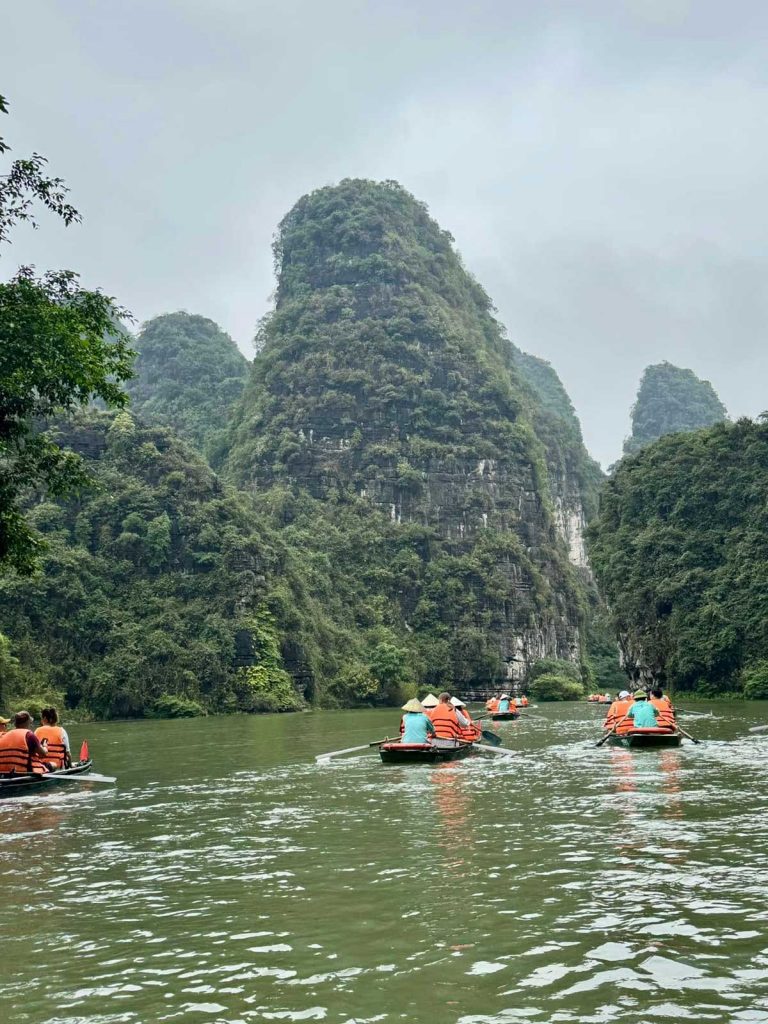
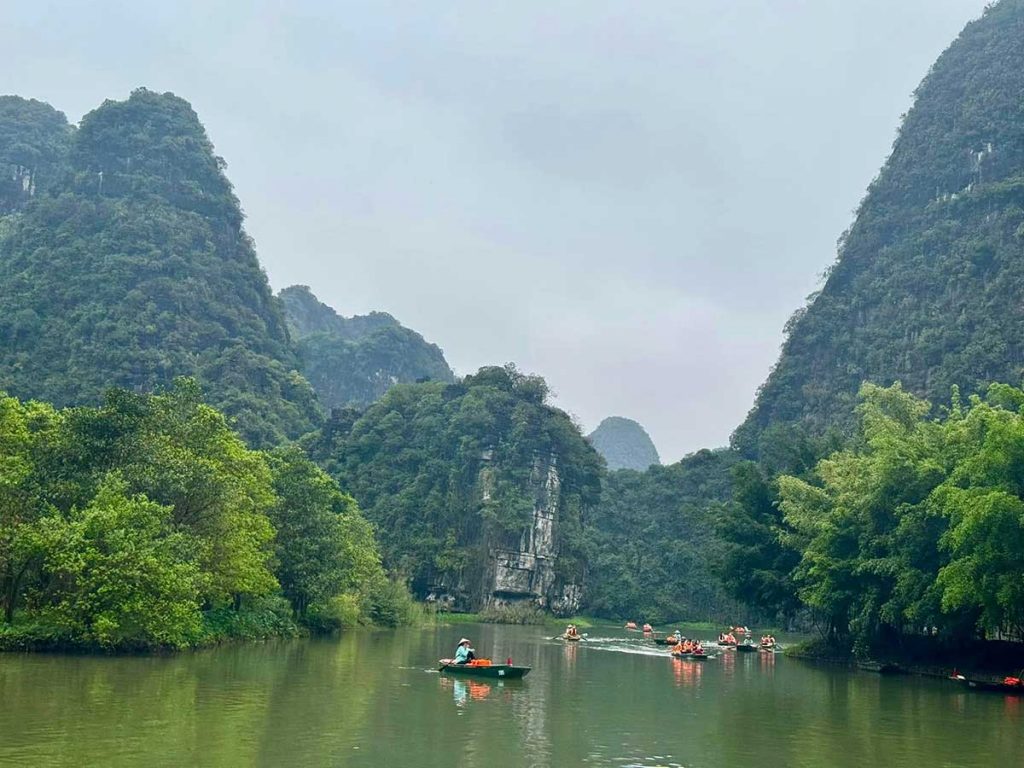
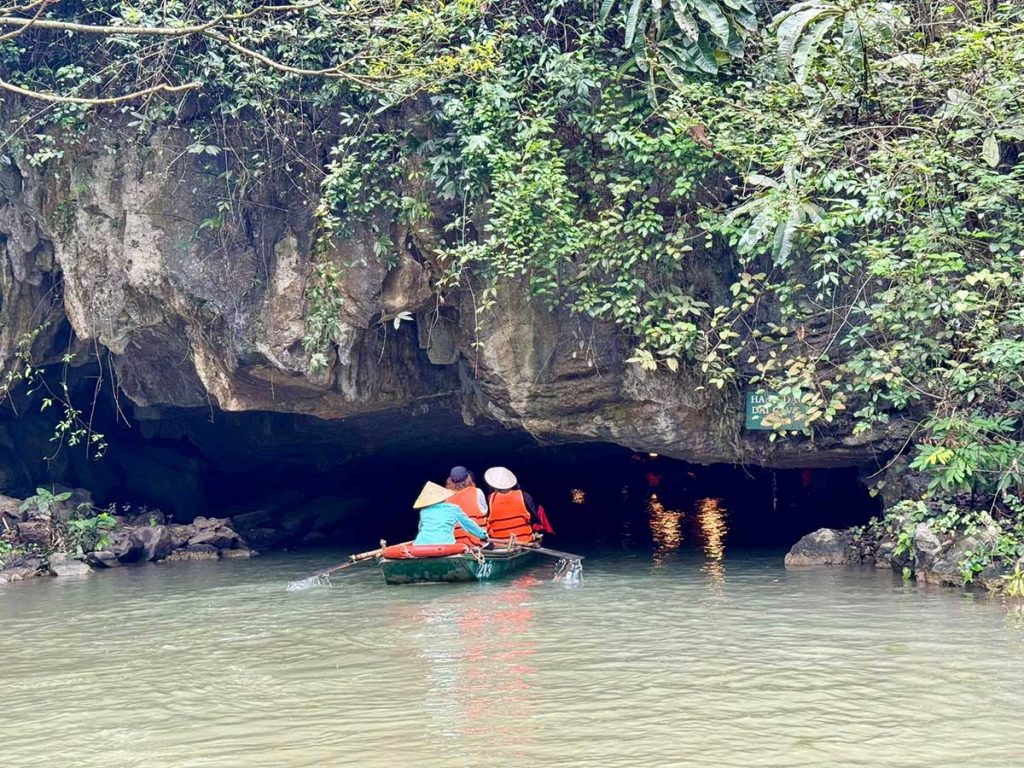
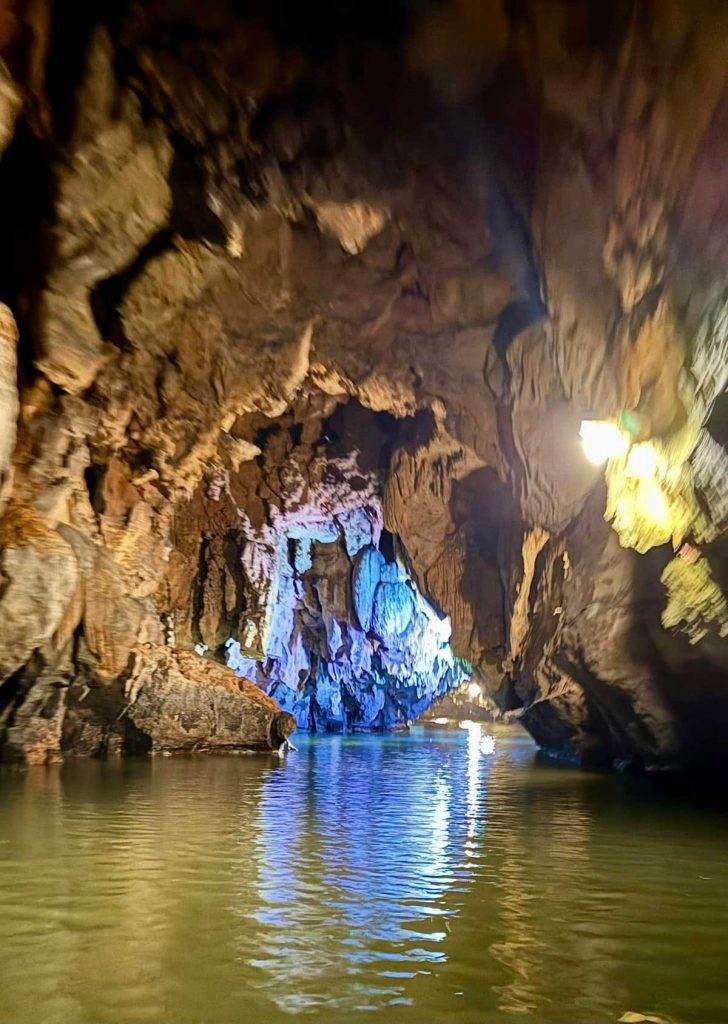
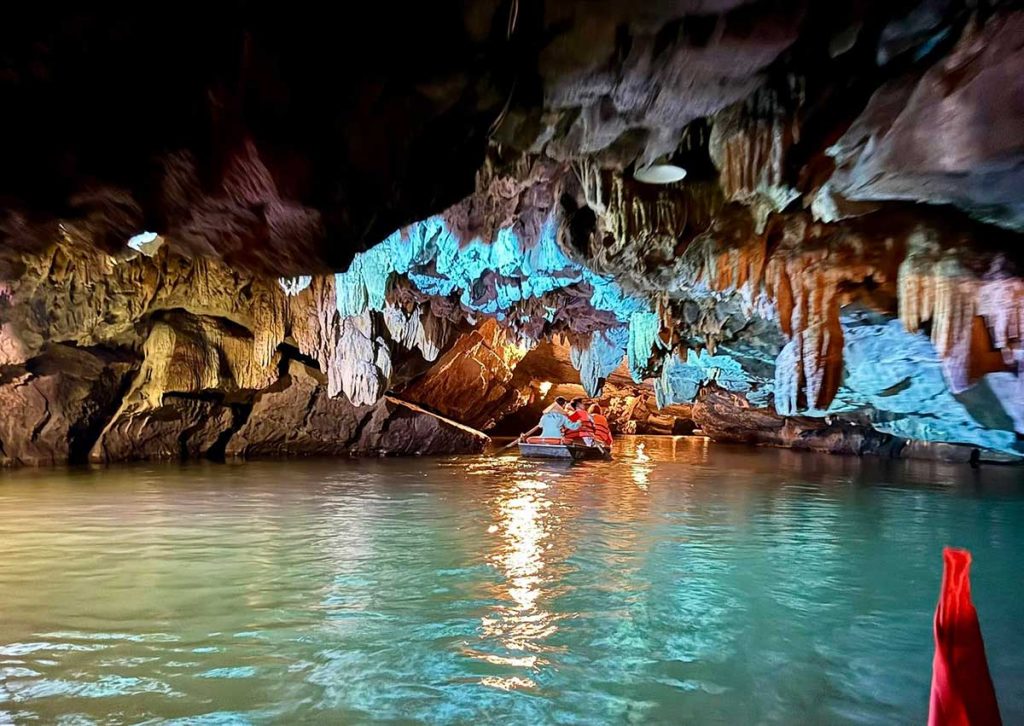
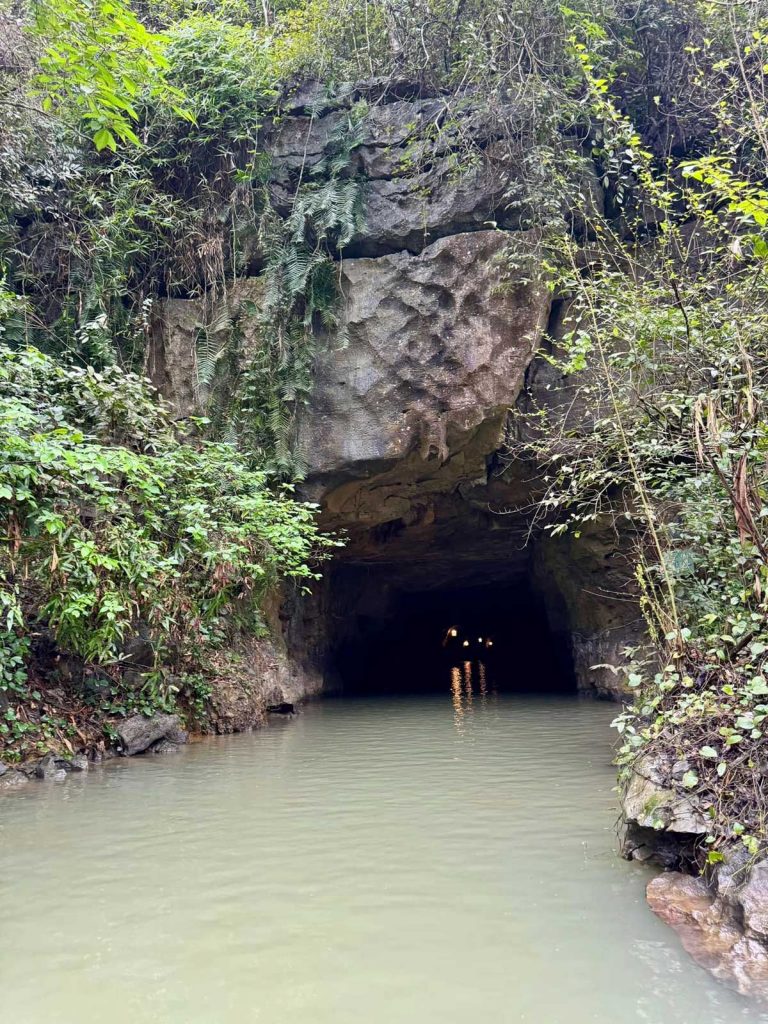

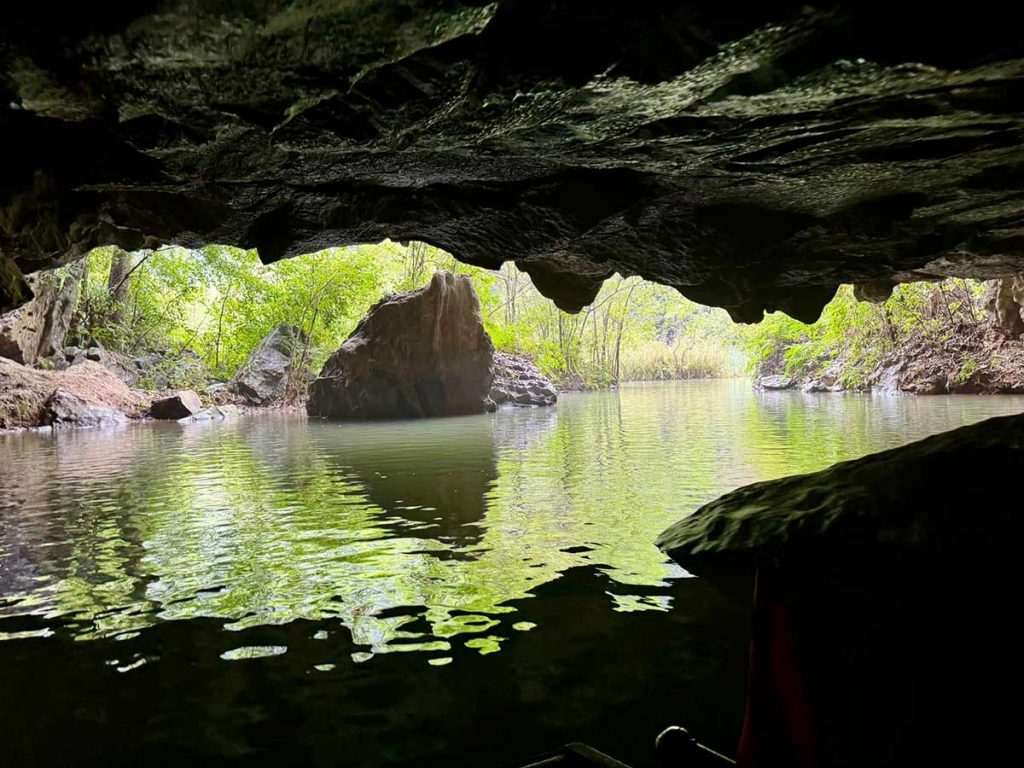
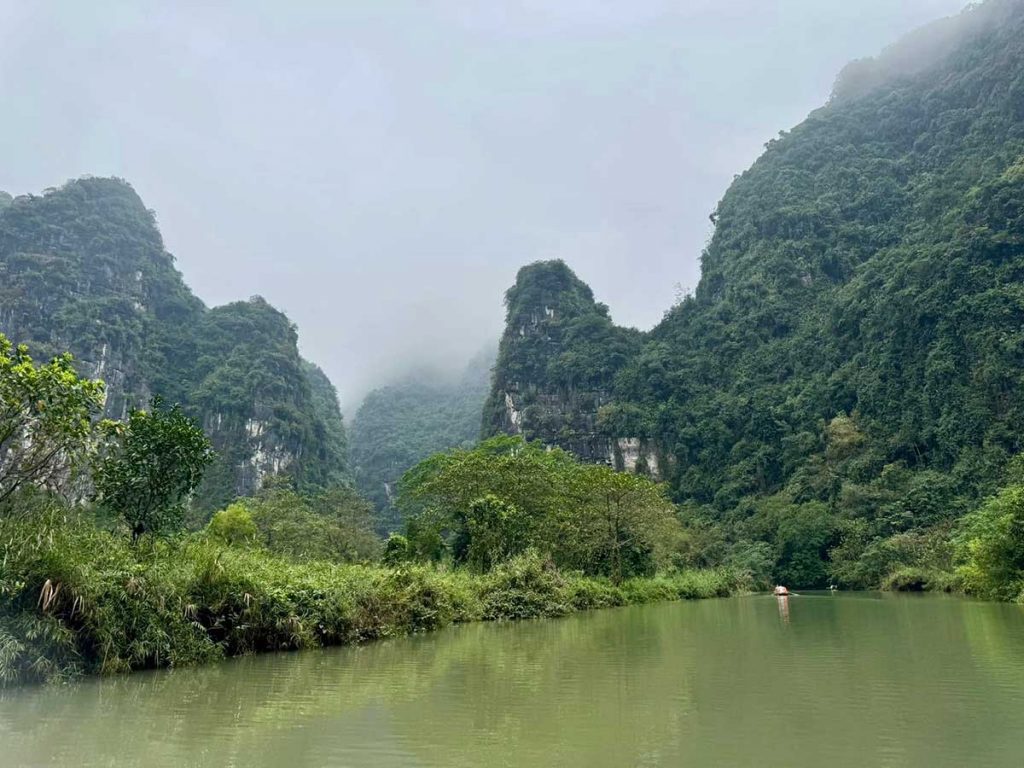

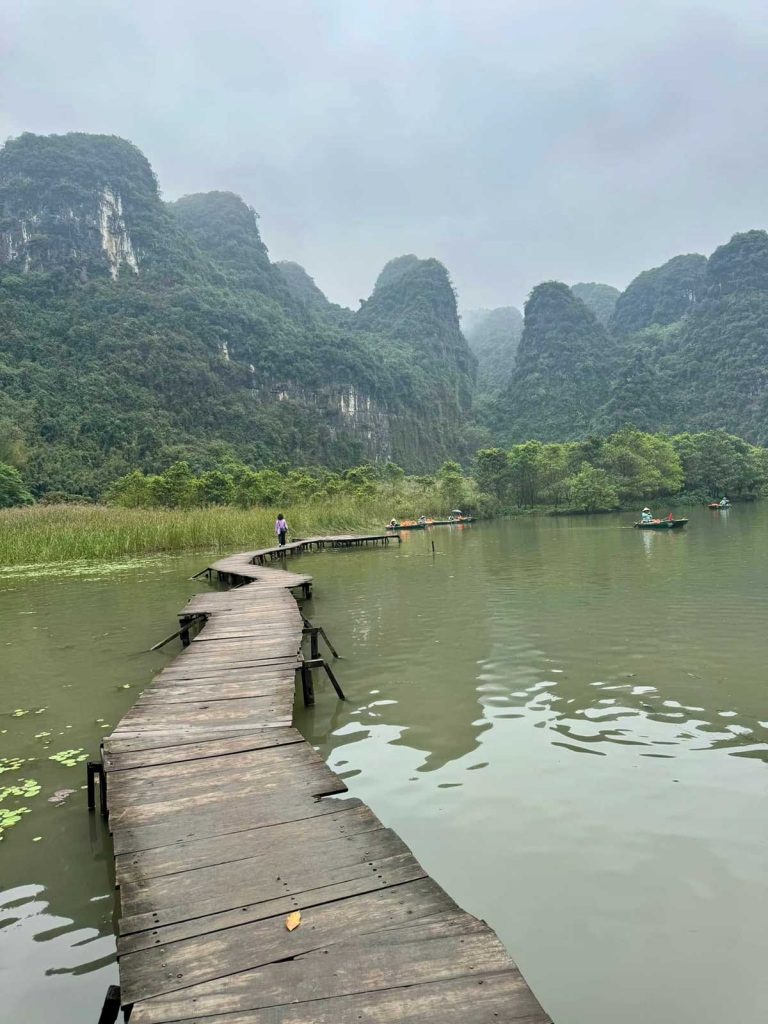
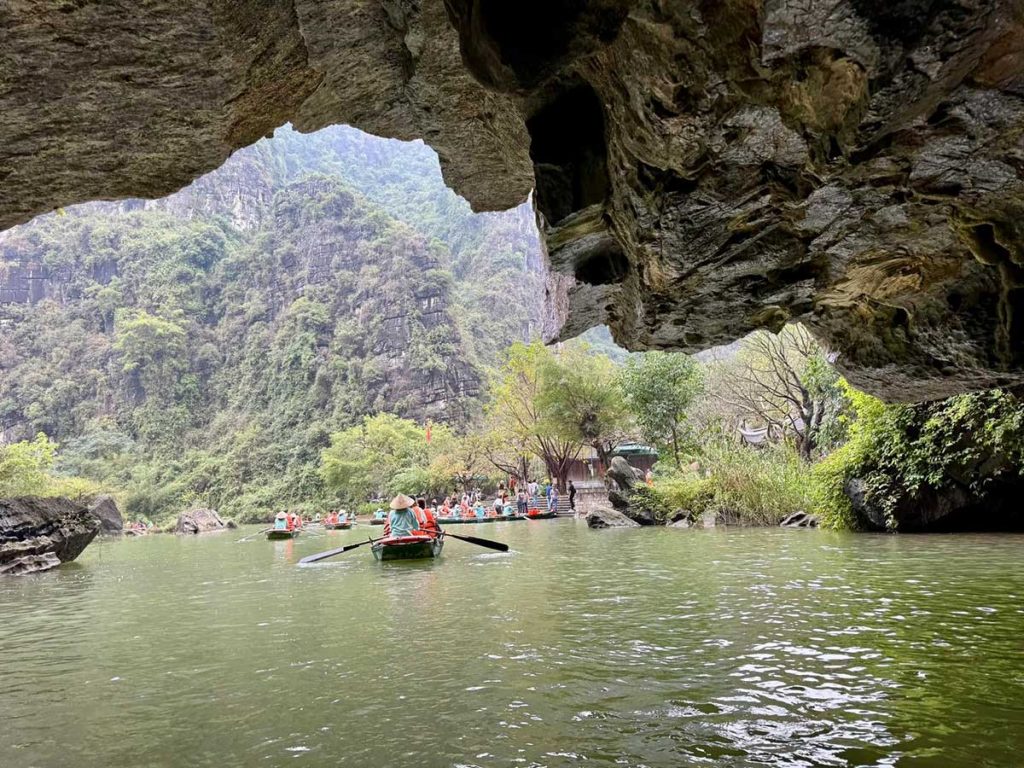
We spent three hours on a boat ride (Tràng An: Trang An Landscape Complex, a UNESCO-listed site) drifting among these hills. We entered caves, visited Buddhist temples along the way. One cave was a whole kilometer long! It was amaaazing! Though, at times, the ceiling hung so low we had to bend in half.
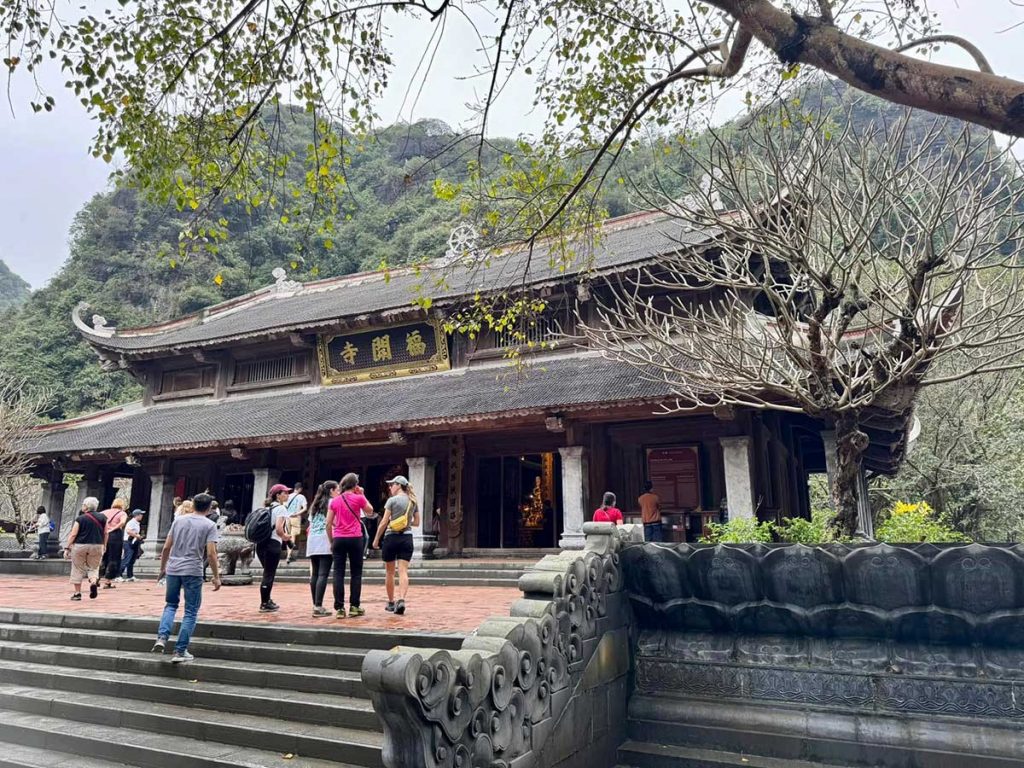
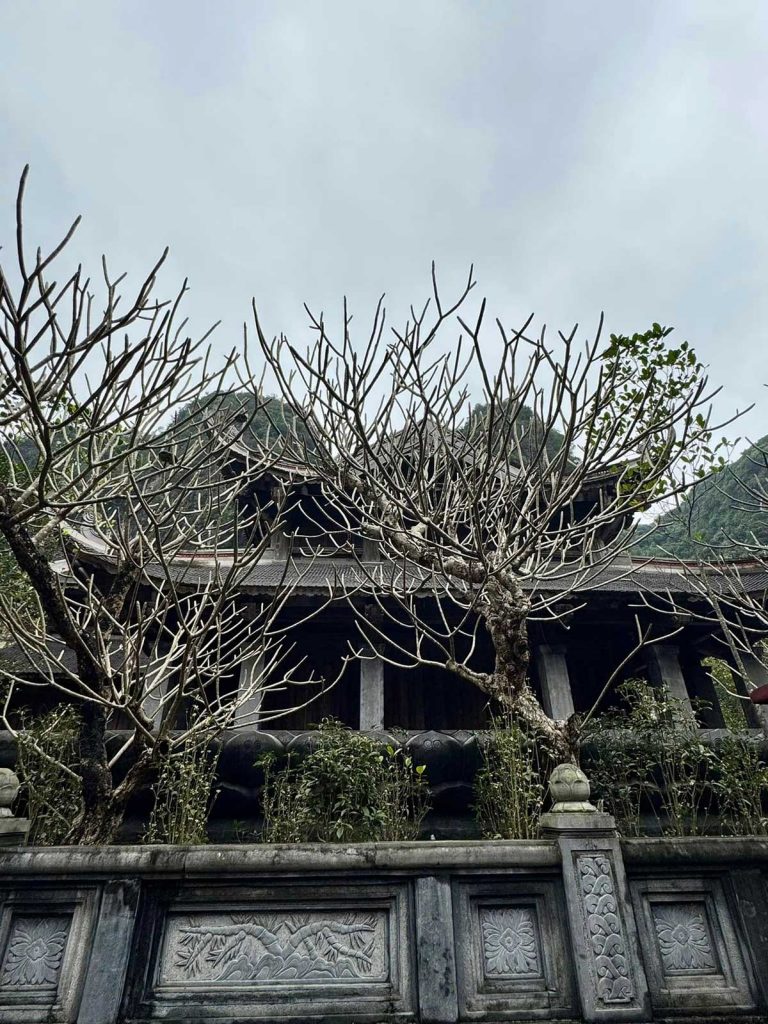
Then we visited a beautiful park near Mua Caves, with a dragon staircase leading to a viewpoint offering one of the best panoramic views of Vietnam’s breathtaking landscapes. But! It’s a 500-step climb, and not an easy one. Had to scramble up.
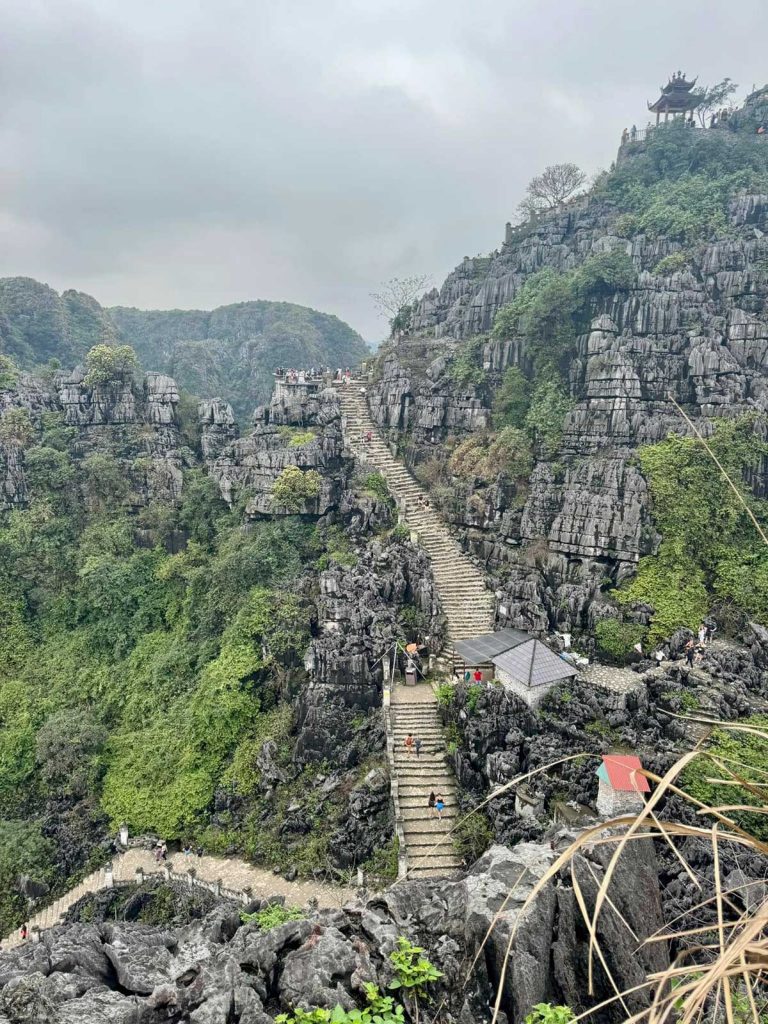
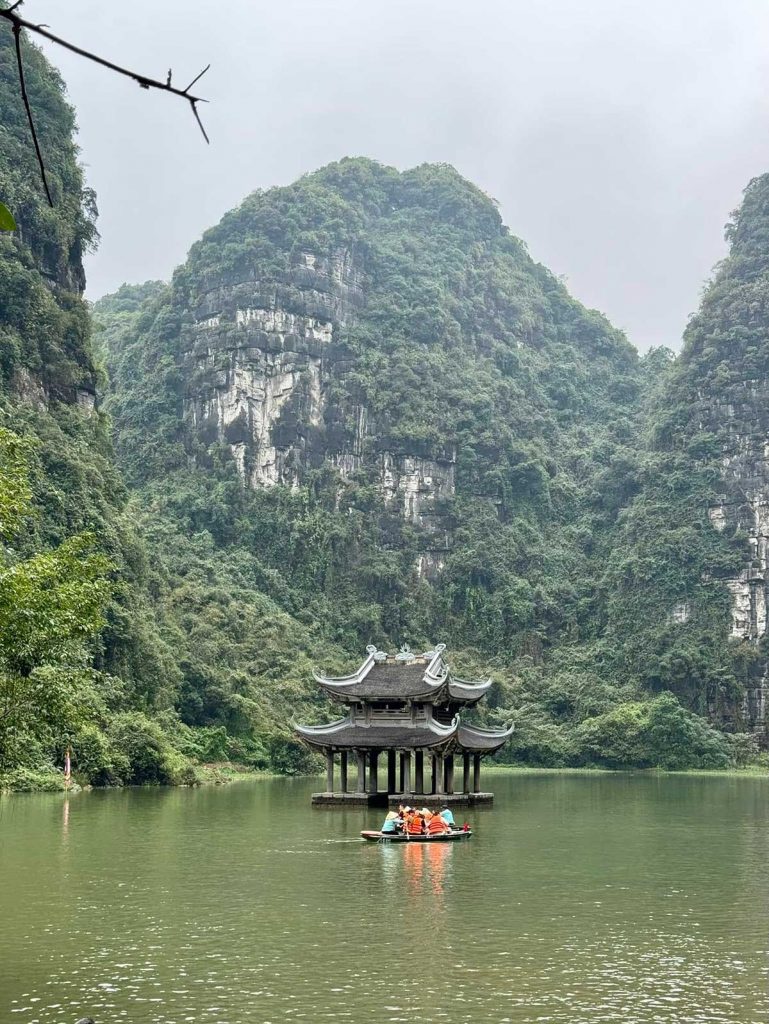
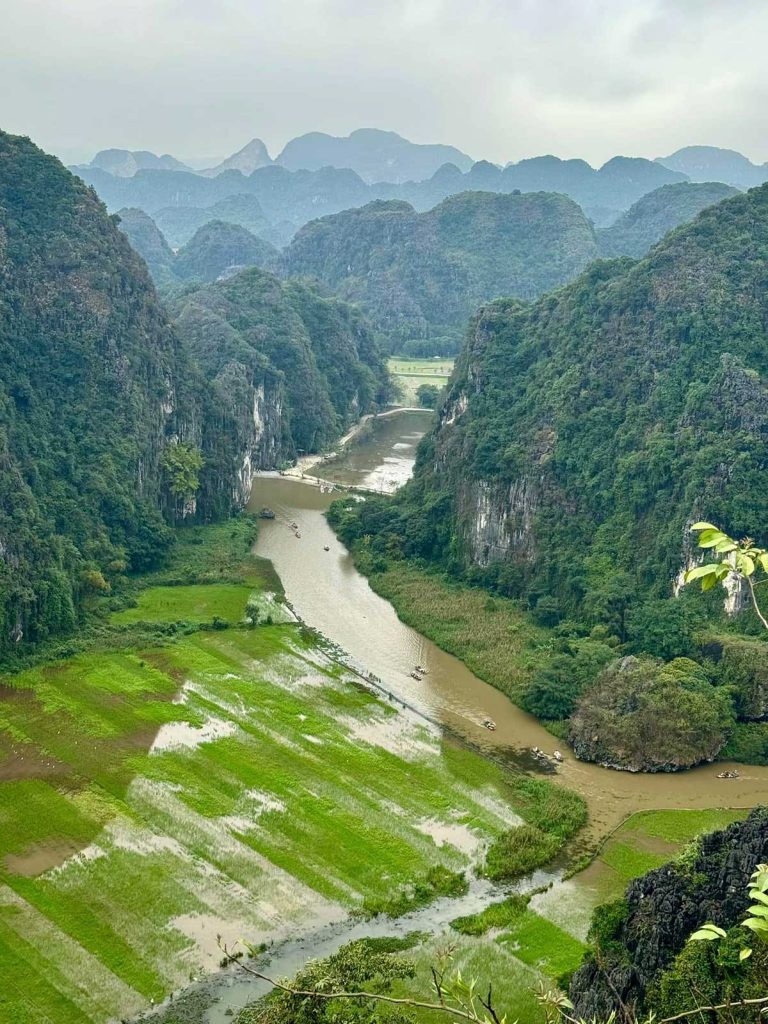
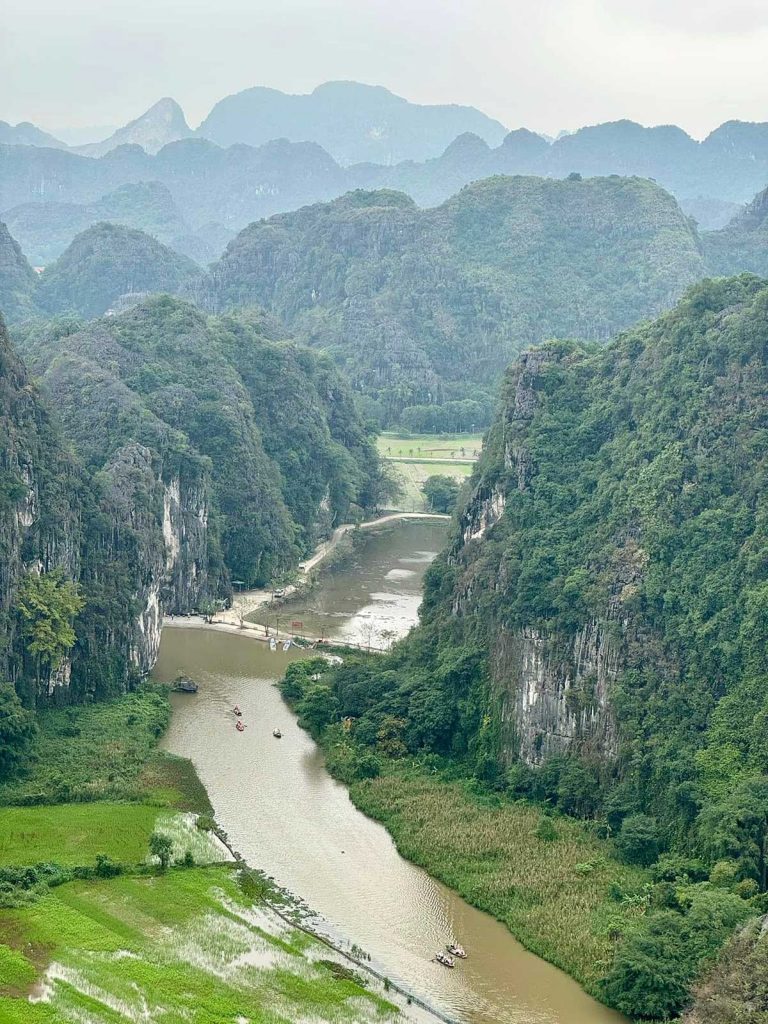
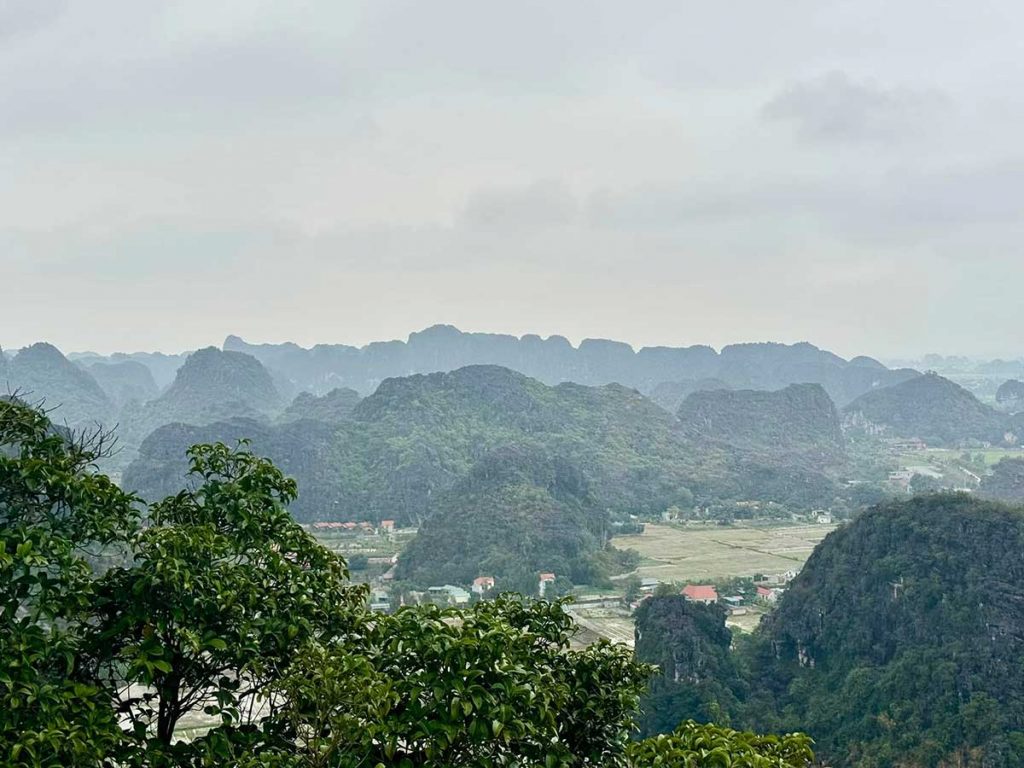
And finally, we stopped by a stunning pagoda built into a cliff.
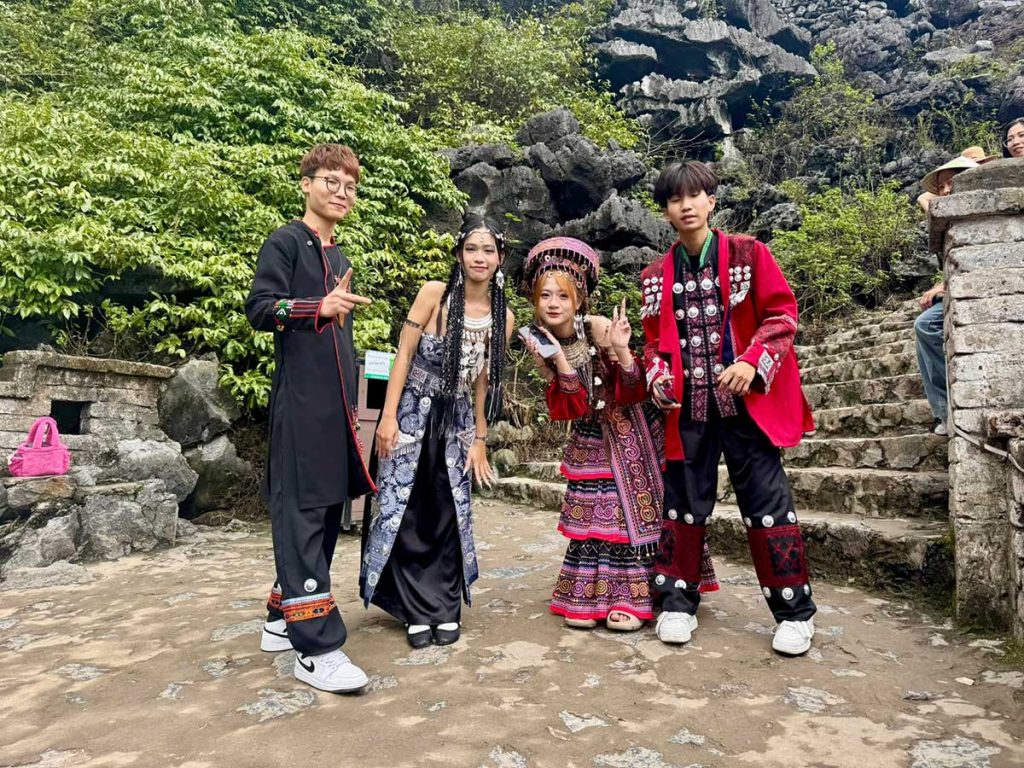
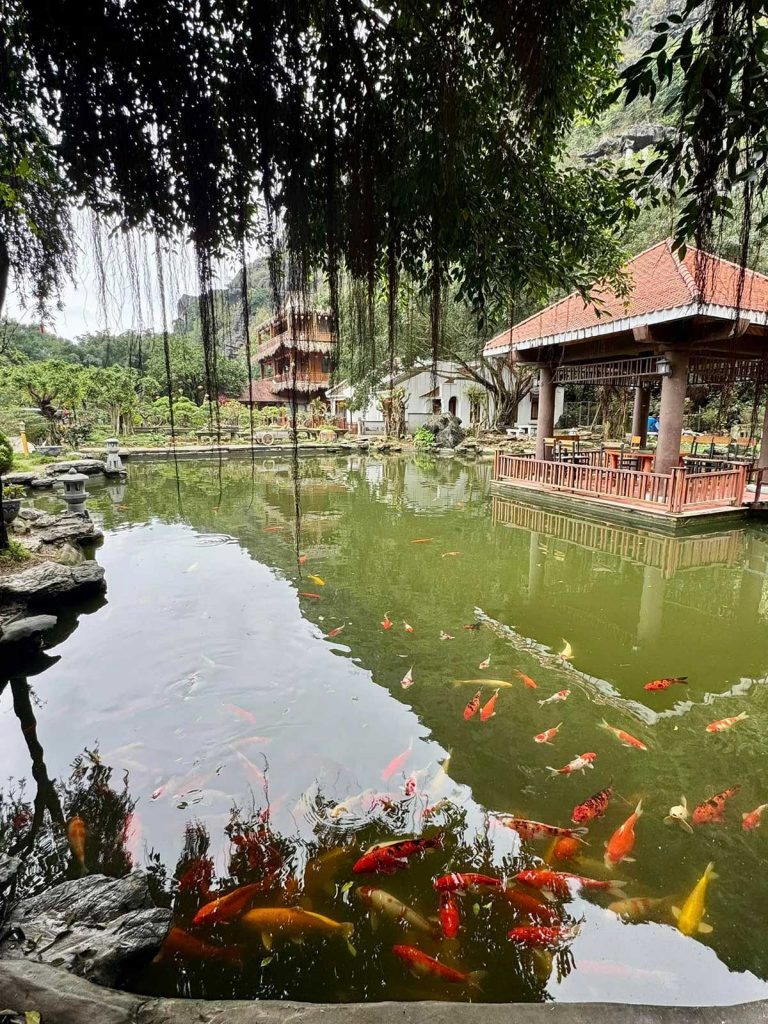

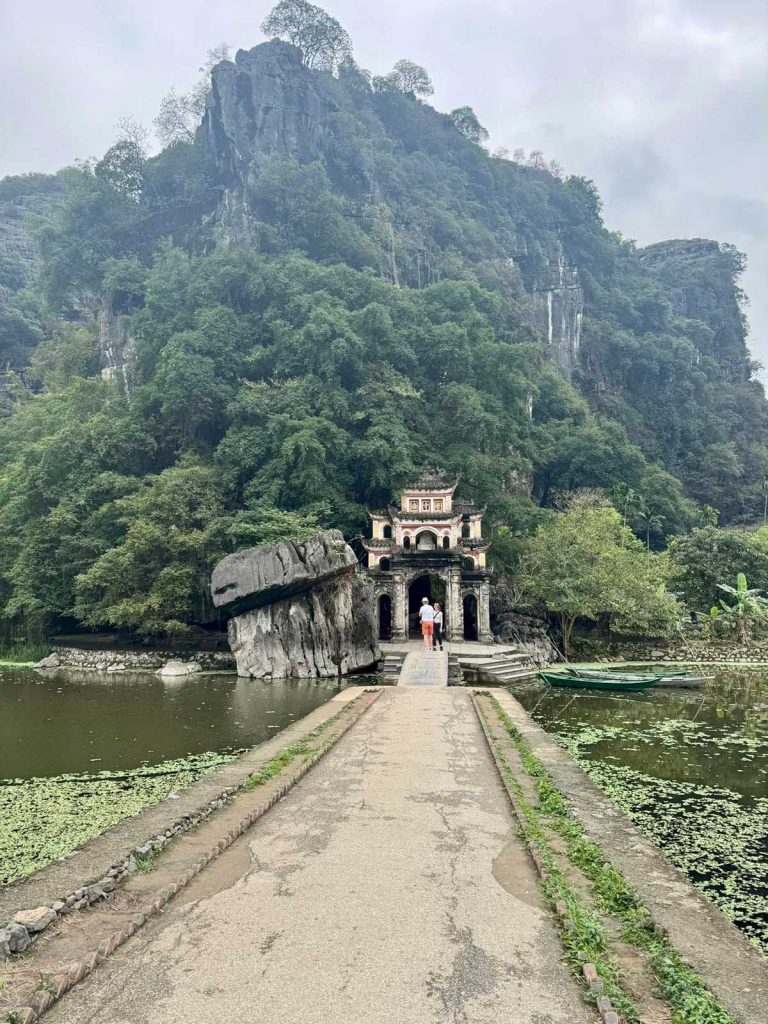
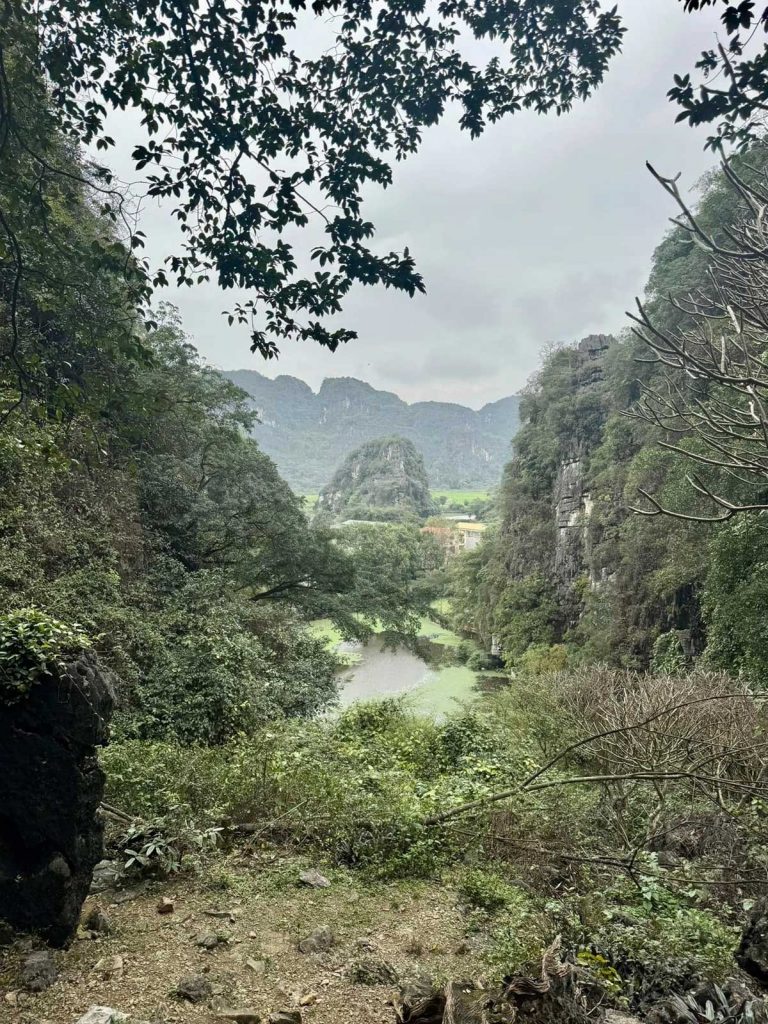
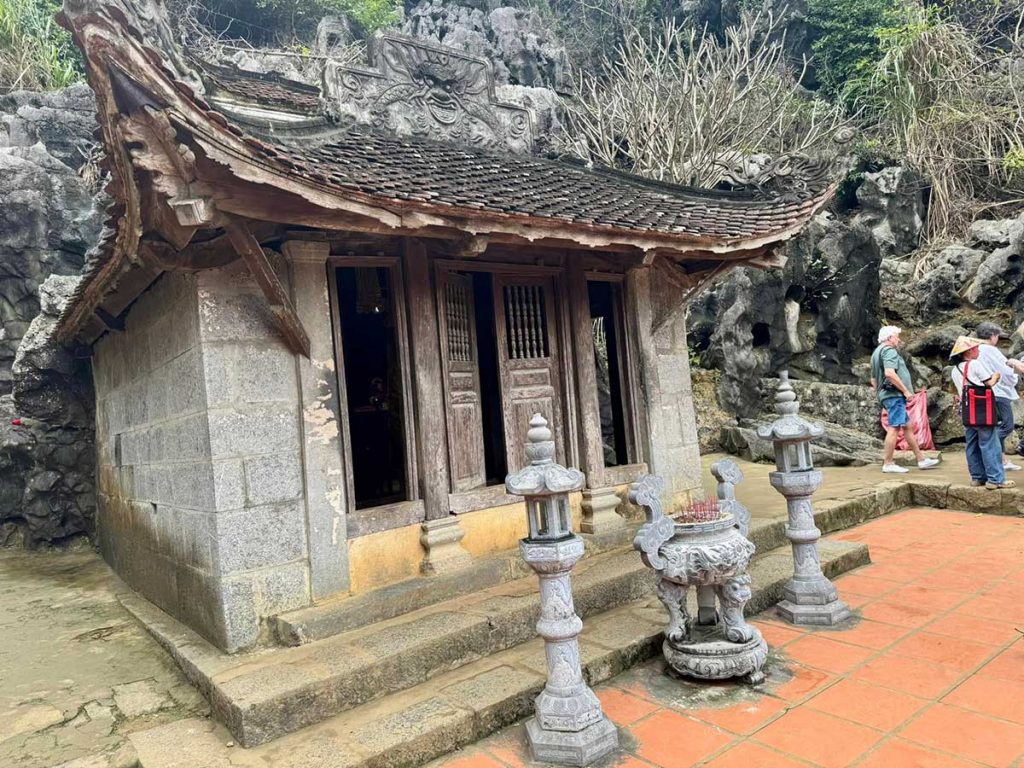
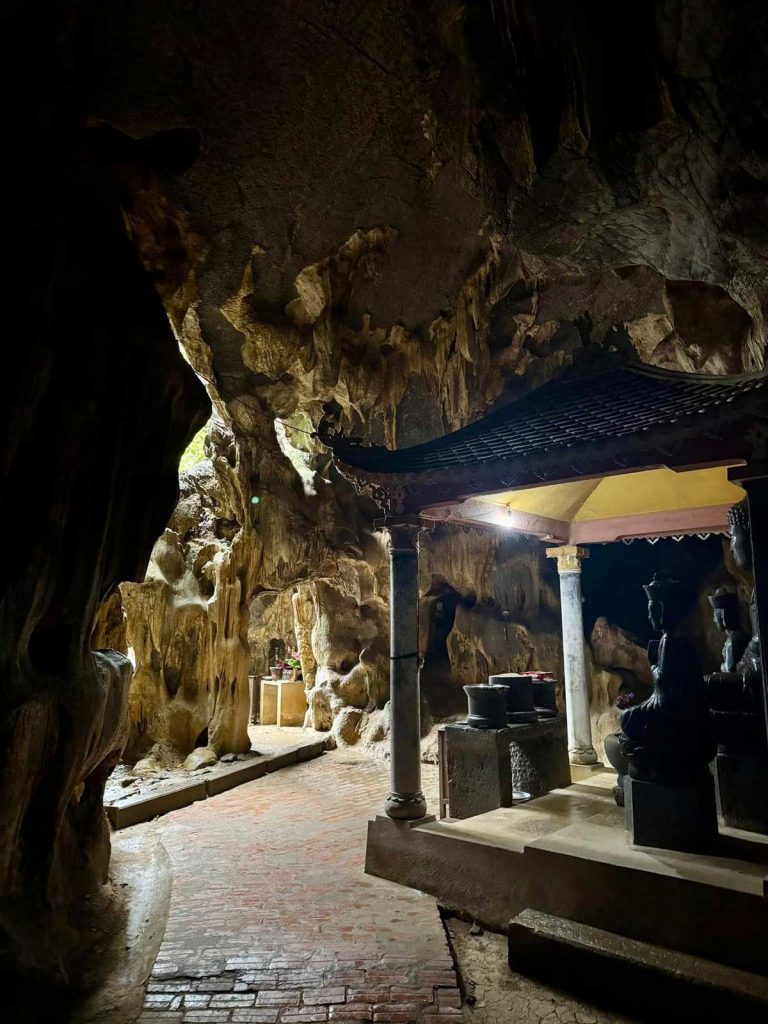
Bich Dong Pagoda or the Green Cave Grotto. One of the oldest temples in Vietnam.
DAY 6
The weather isn’t great. A fine drizzle is falling in the morning. But, no choice—Buddhist temples won’t explore themselves. So, we get in the car and drive 30 km to the largest Buddhist temple complex in Vietnam, 𝗕𝗮𝗶 𝗗𝗶𝗻𝗵. It is located on Bai Dinh Mountain near the city of Ninh Binh.

Notice the row of statues on the side—it looks like a Chinese Terracotta Army. Only, not terracotta, but probably concrete.

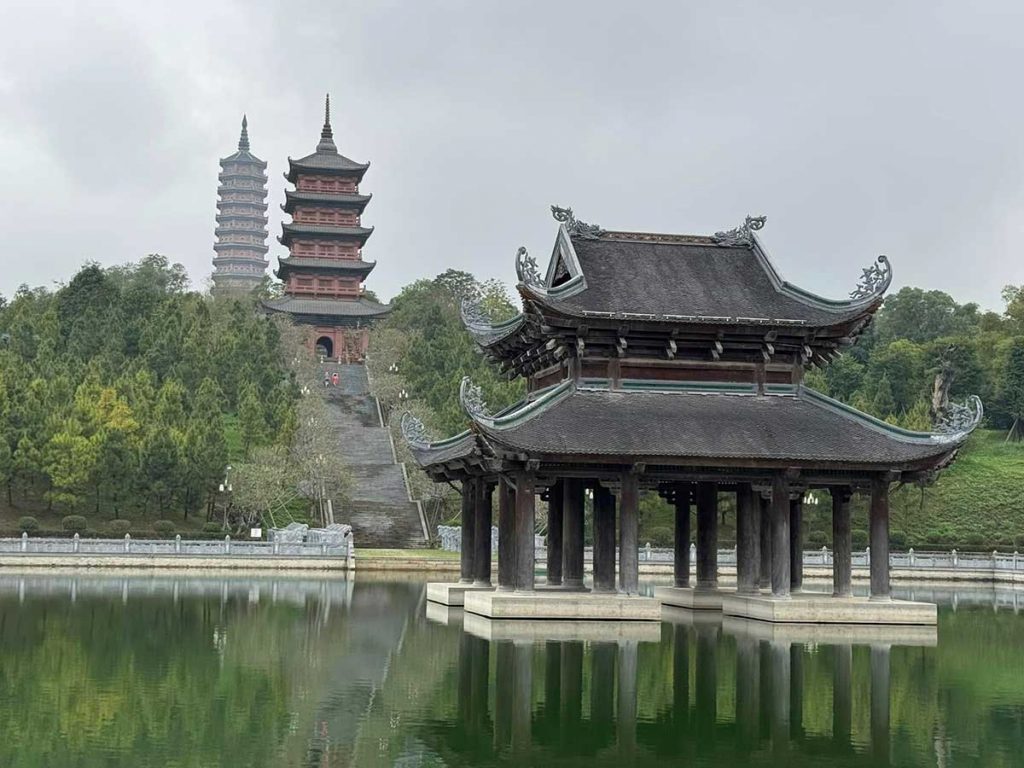
𝗕𝗮𝗶 𝗗𝗶𝗻𝗵 is named after the tallest pagoda in the country. Everything here is the biggest: it has the largest bronze bell in Vietnam, the tallest stupa, and the longest Arhat corridor in Asia (with 500 statues). If you don’t know who the Arhats are—Google it. I didn’t know before either.
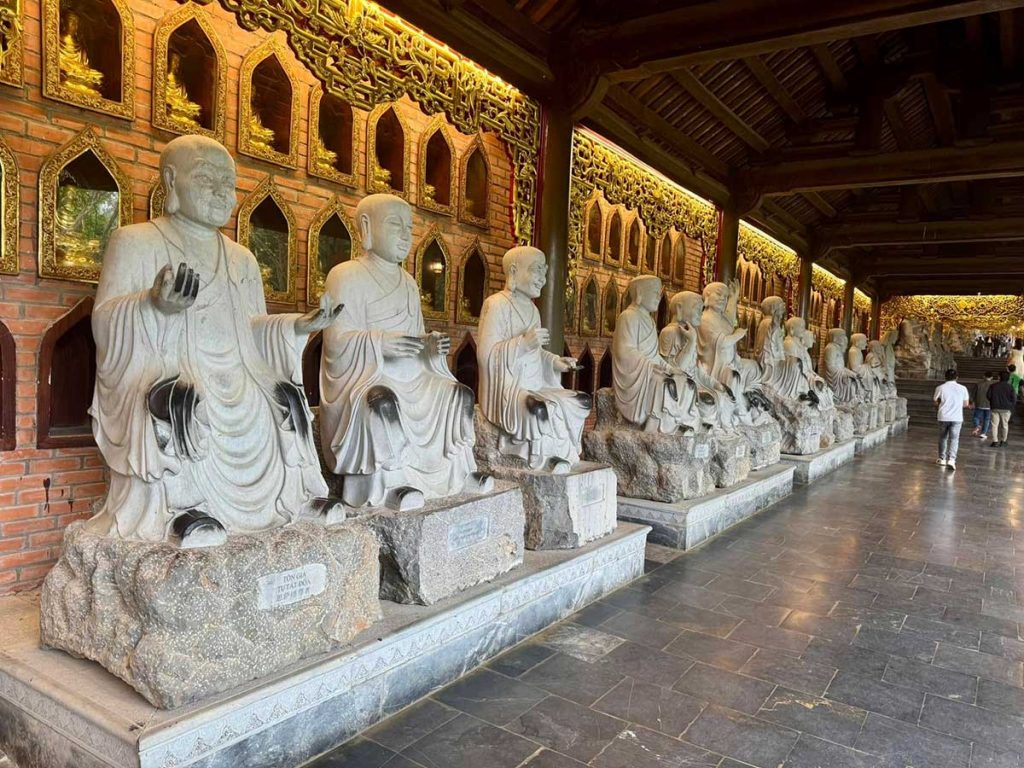
Arhats (known in Vietnamese as la hán) in Buddhism are those who have attained supreme wisdom and holiness, have exited the cycle of rebirth, but have not entered Nirvana. Instead, they remain in the world to preserve and preach the teachings. The 18 main Arhats are revered saints, the apostles of Mahayana Buddhism. It is believed that these 18 Arhats laid the foundation of Buddhist doctrine. Unlike the 12 holy apostles in Christianity, not all 18 Arhats in Buddhism were contemporaries of their teacher.

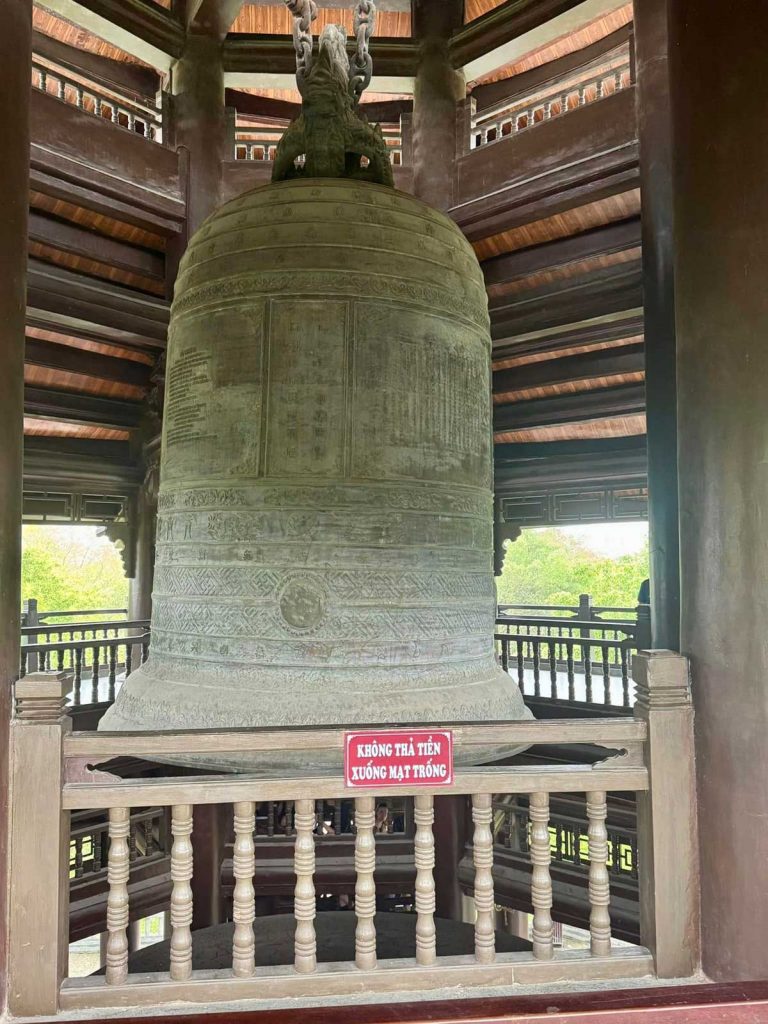
And more: The temple complex houses the largest seated Buddha, as well as the largest gilded Buddha in all of Asia and the highest number of smaller Buddha statues (around 10,000).
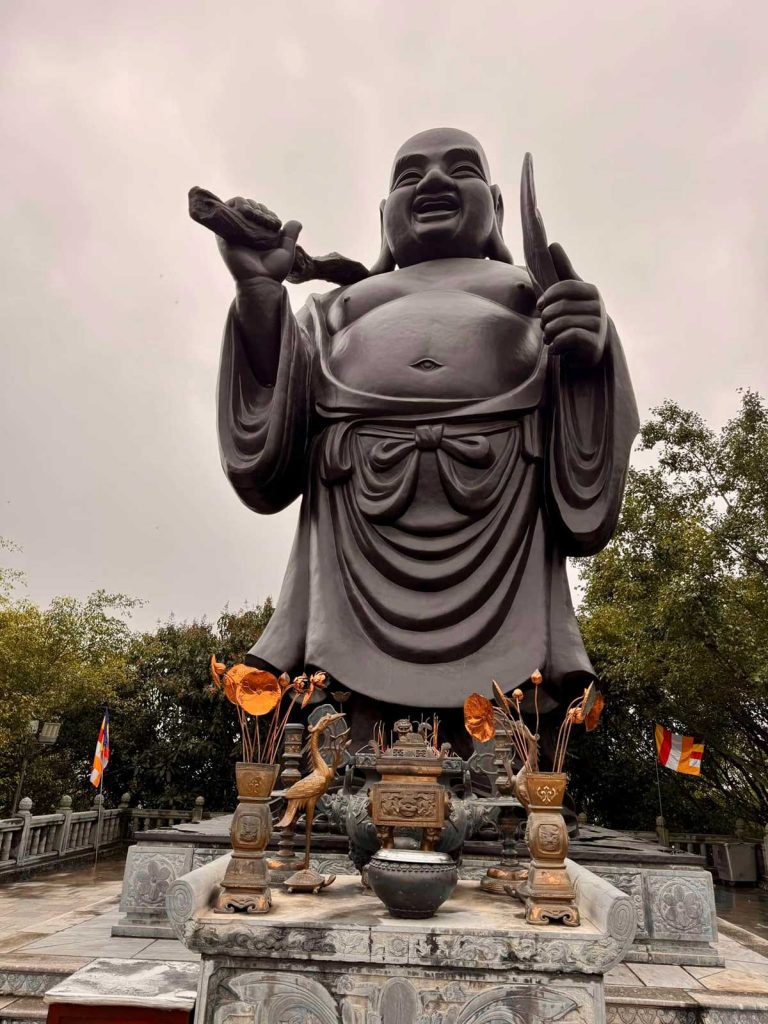
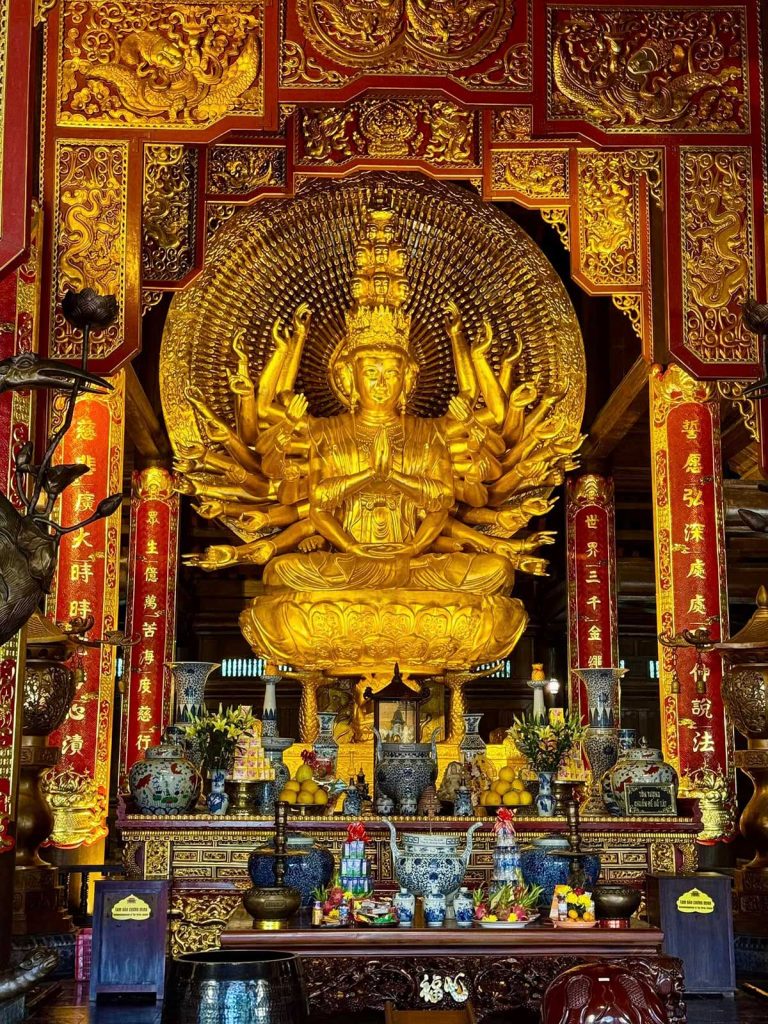
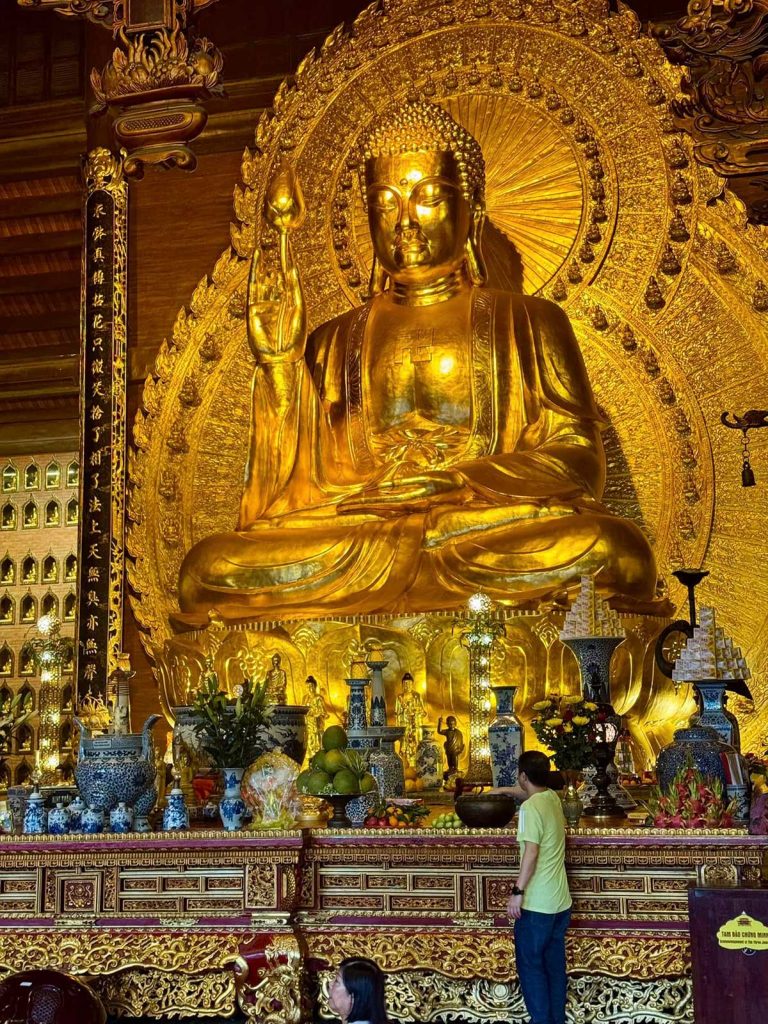
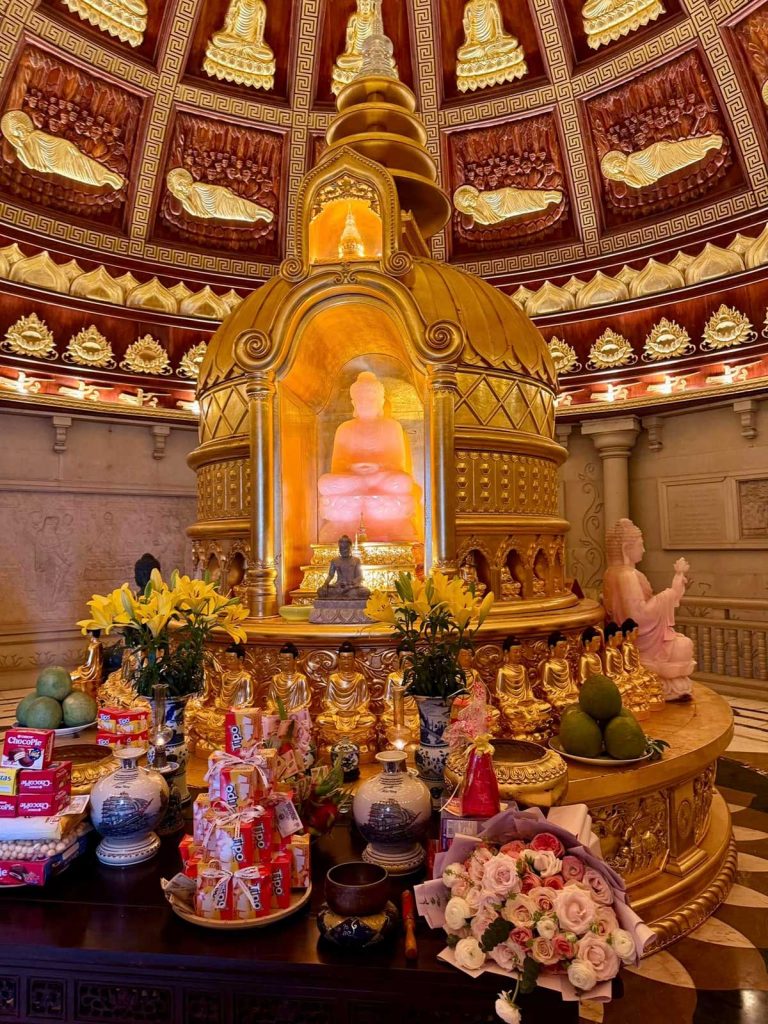
The complex is enormous, and luckily, you can buy a combined ticket for electric shuttles, hop off at any stop, and then ride to the next attraction. Still, there were a lot of stairs along the way, endless staircases.
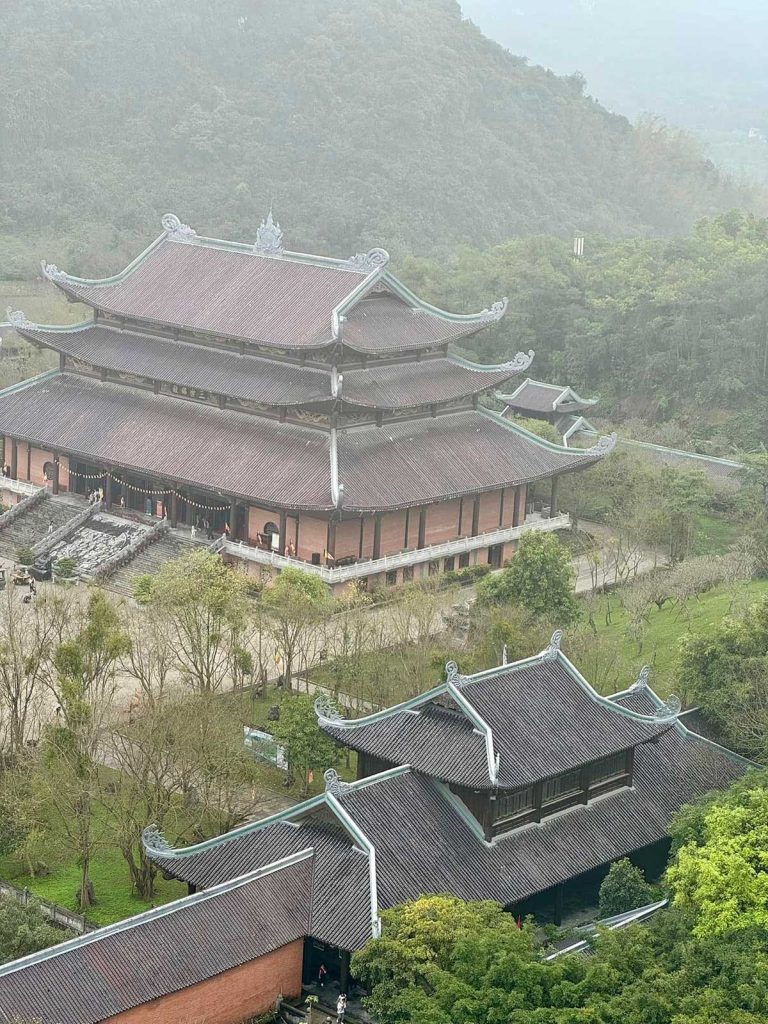
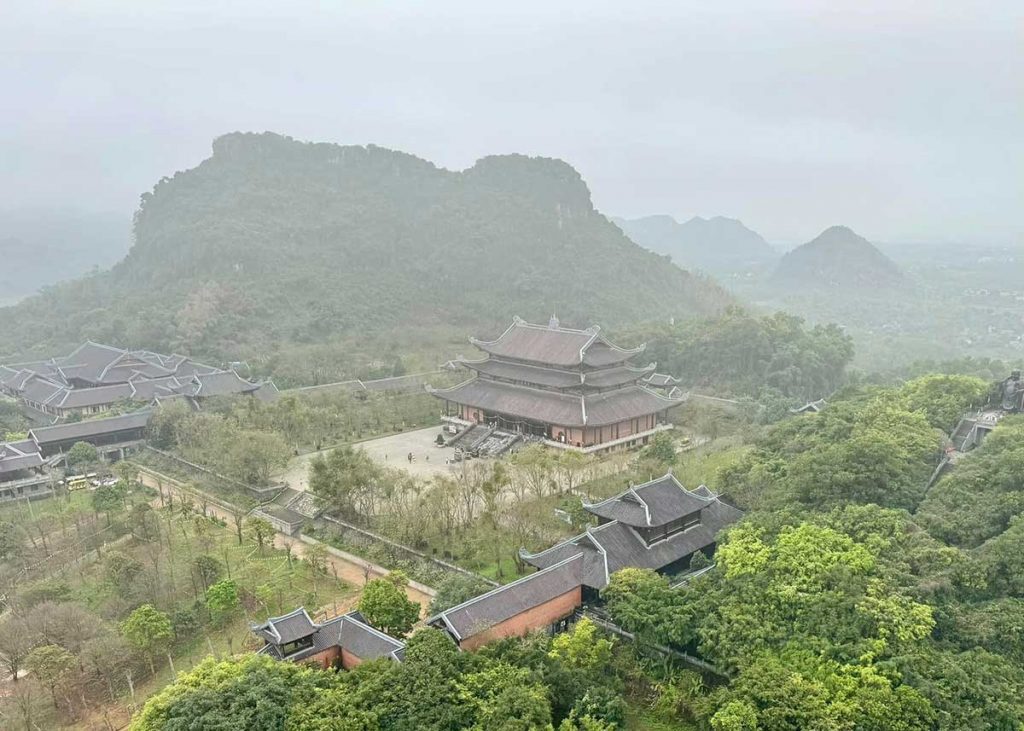
Fortunately, the main pagoda has an elevator to take you up. The views from there are absolutely breathtaking! But due to the rain and mist, the photos turned out rather dull.
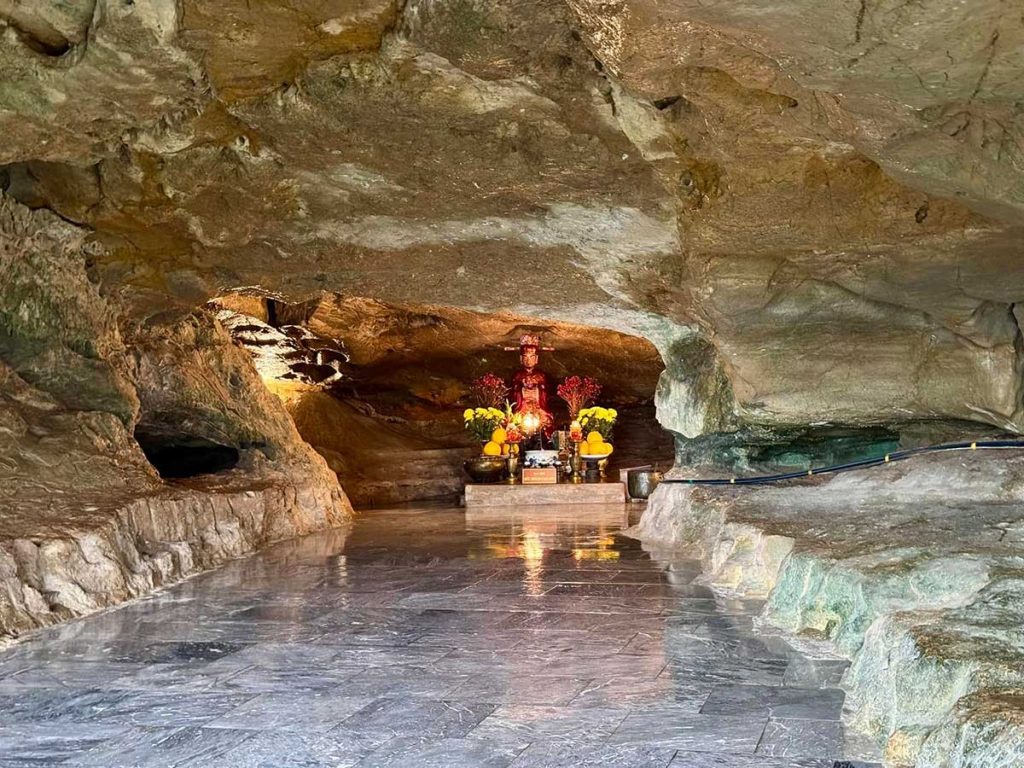
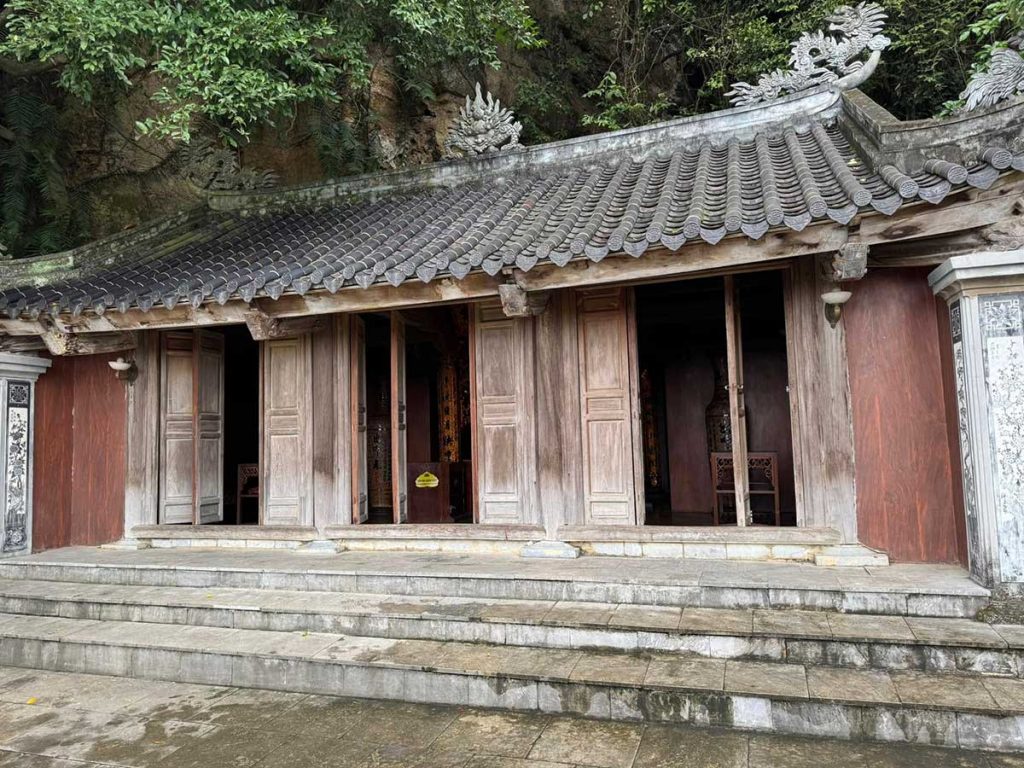
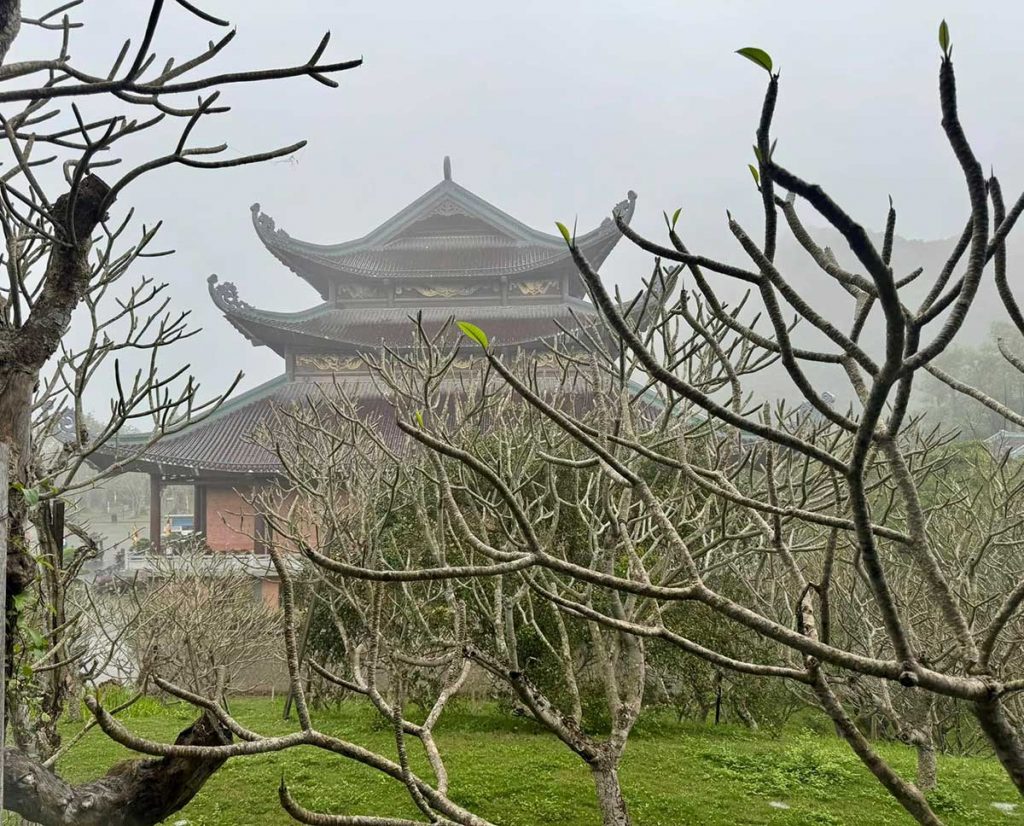

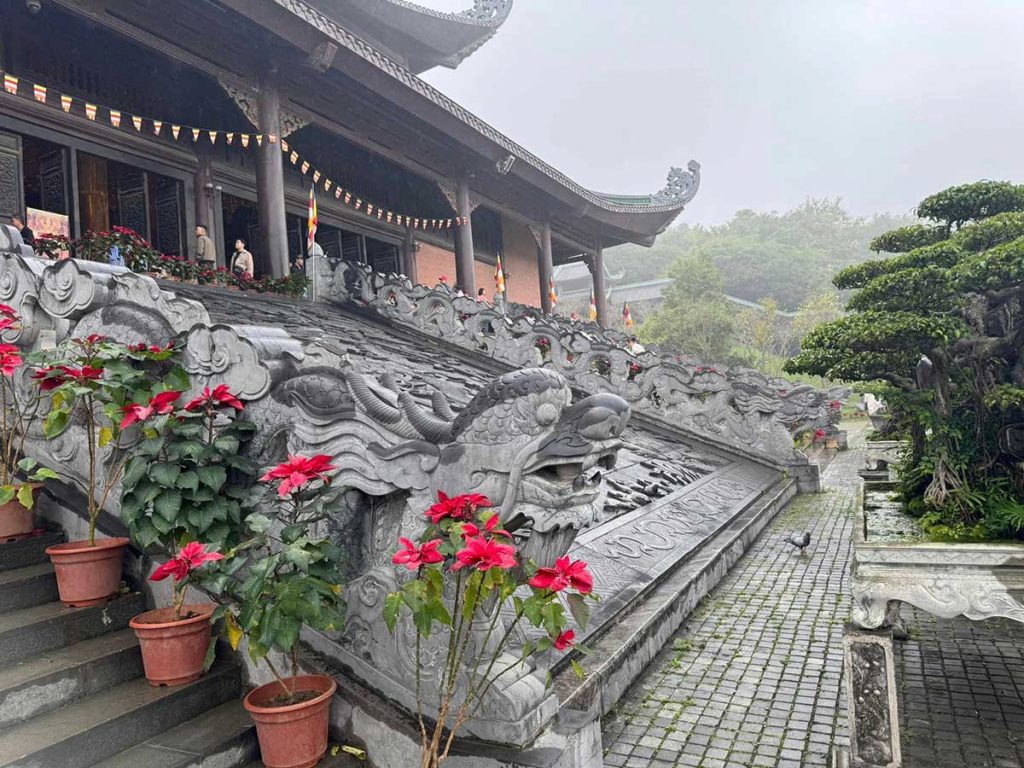
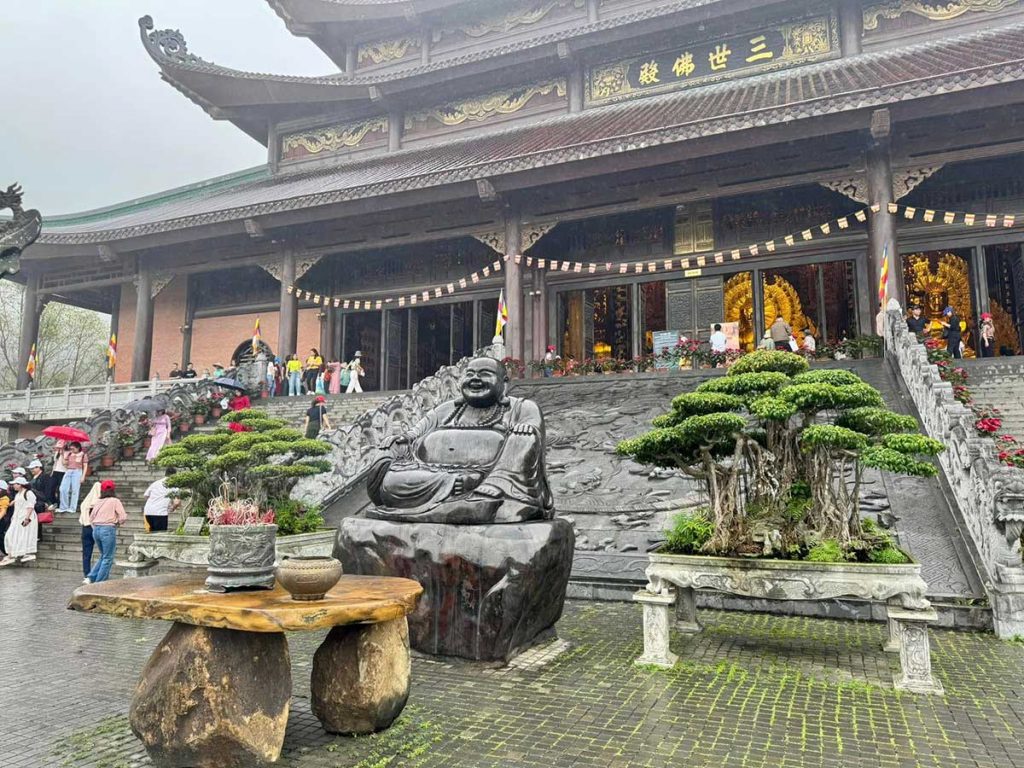
Another funny little moment. Midway through our route, we were lured in by some “wishing tree.” Following the signs, we kept looking—where’s the tree? Instead, we found benches, basins, and people sitting with their feet in them. Before we knew it, we were ushered in and told to sit down, each at our own basin. We asked, “Is this mandatory?” They said, “Yes!”
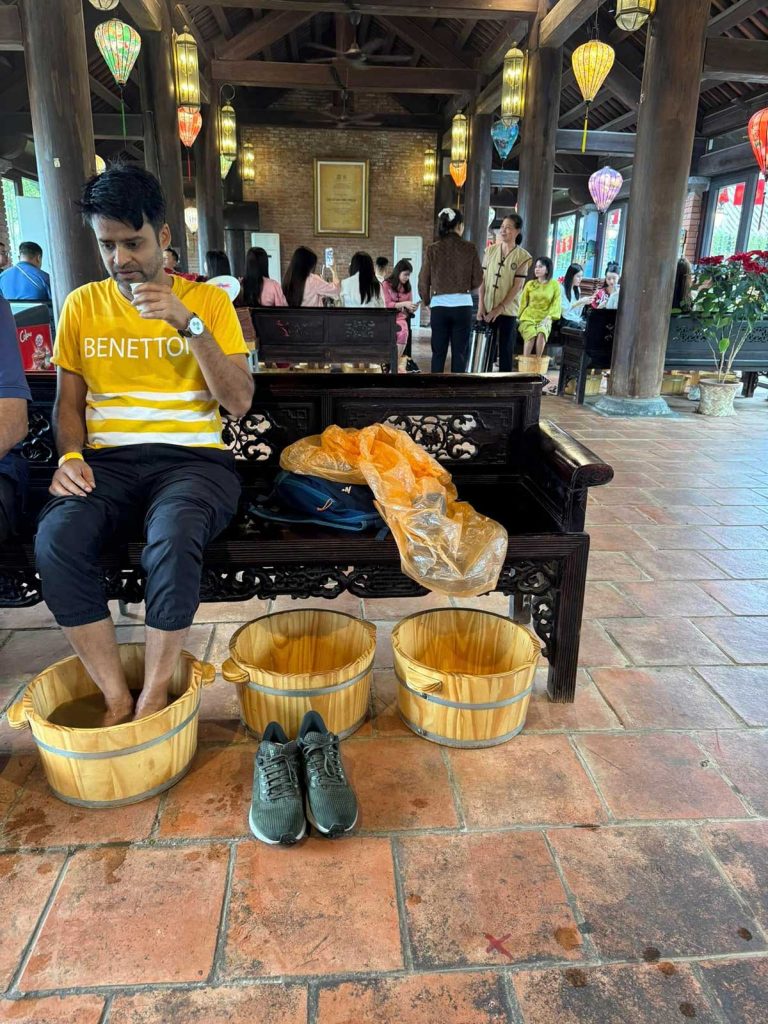
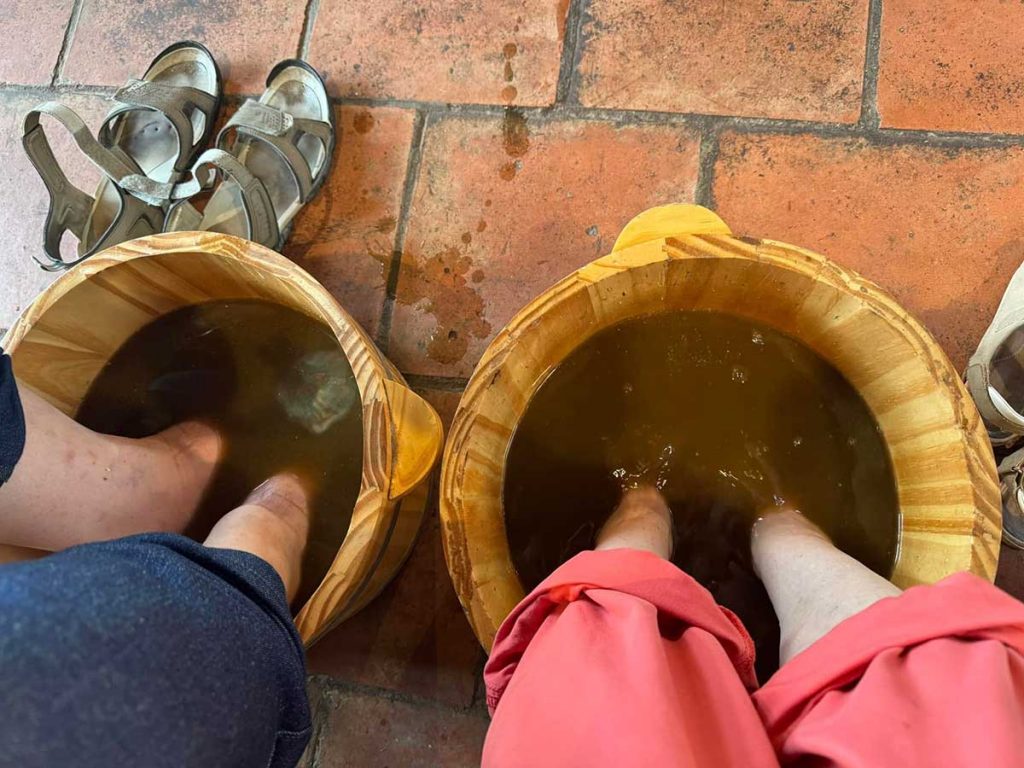
They poured some special hot water infused with herbal decoctions—well, no choice, we dipped our feet in. And you know what? It was quite nice. They even brought us herbal tea. All included in our combo ticket. Apologies in advance, but here’s a photo of our tired feet!
And we did eventually find the wishing tree. Not quite what I had imagined. 🙂
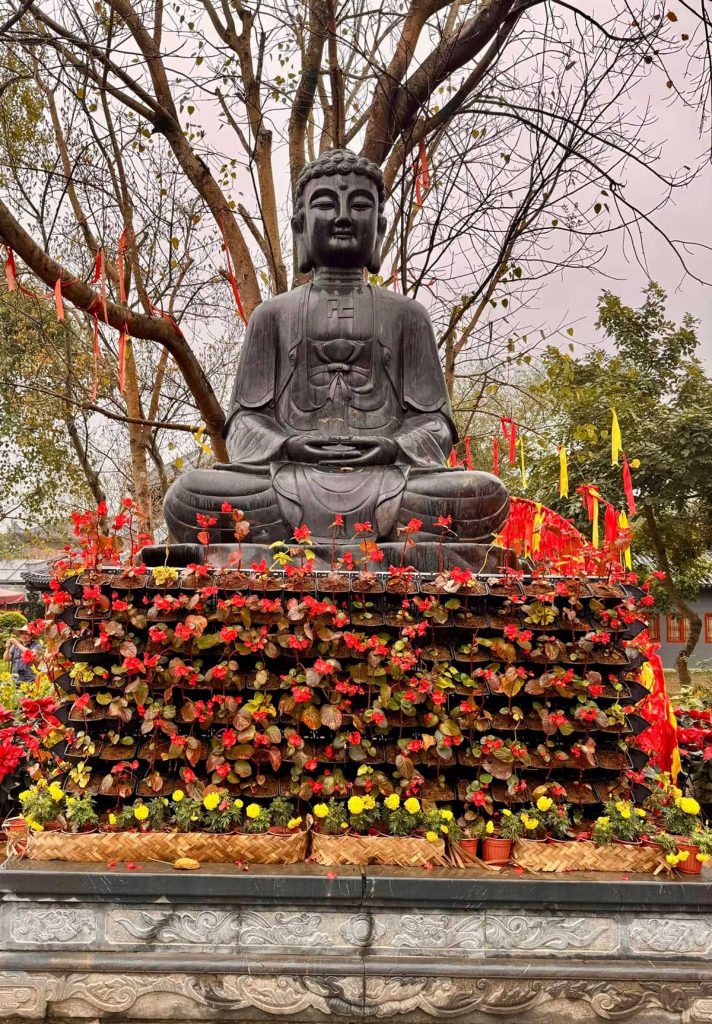
Time to leave. The gates are visible behind this pagoda.
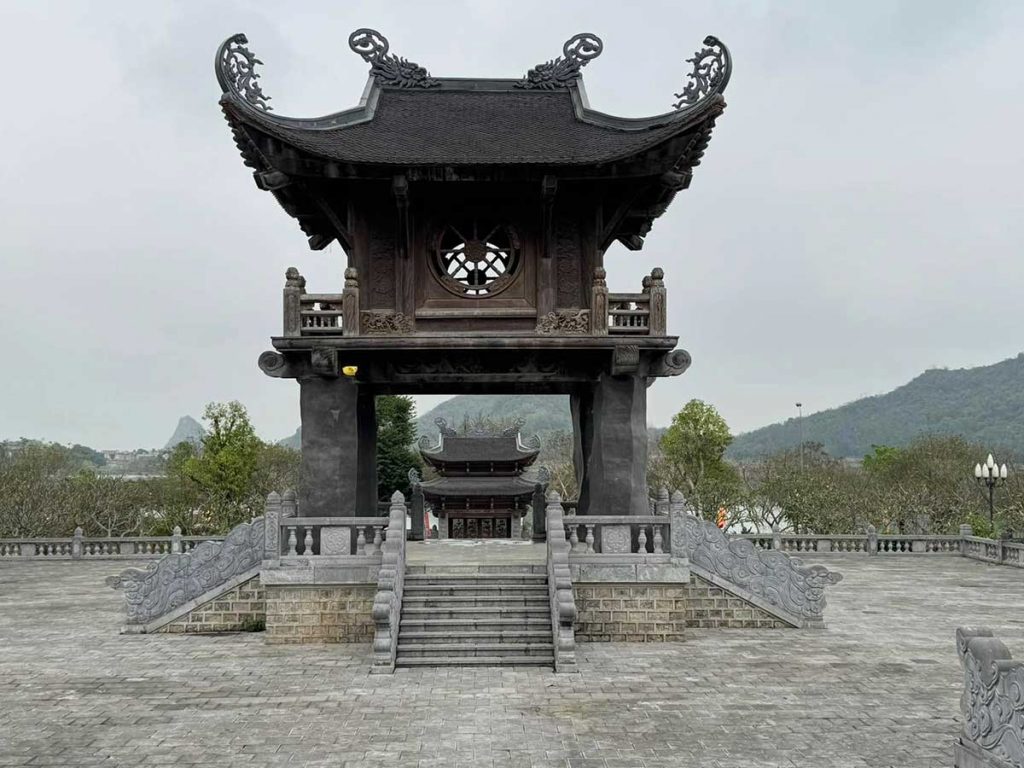
DAY 7
I don’t know how this works, but despite the forecast and the rain all night, today turned out to be surprisingly good weather (for Ha Long, at least). Someone up there seems to be patting us on the head almost every day when we desperately need the right weather. No, of course, the sky is covered with clouds, but there’s no mist. All the karst hills are in clear view.
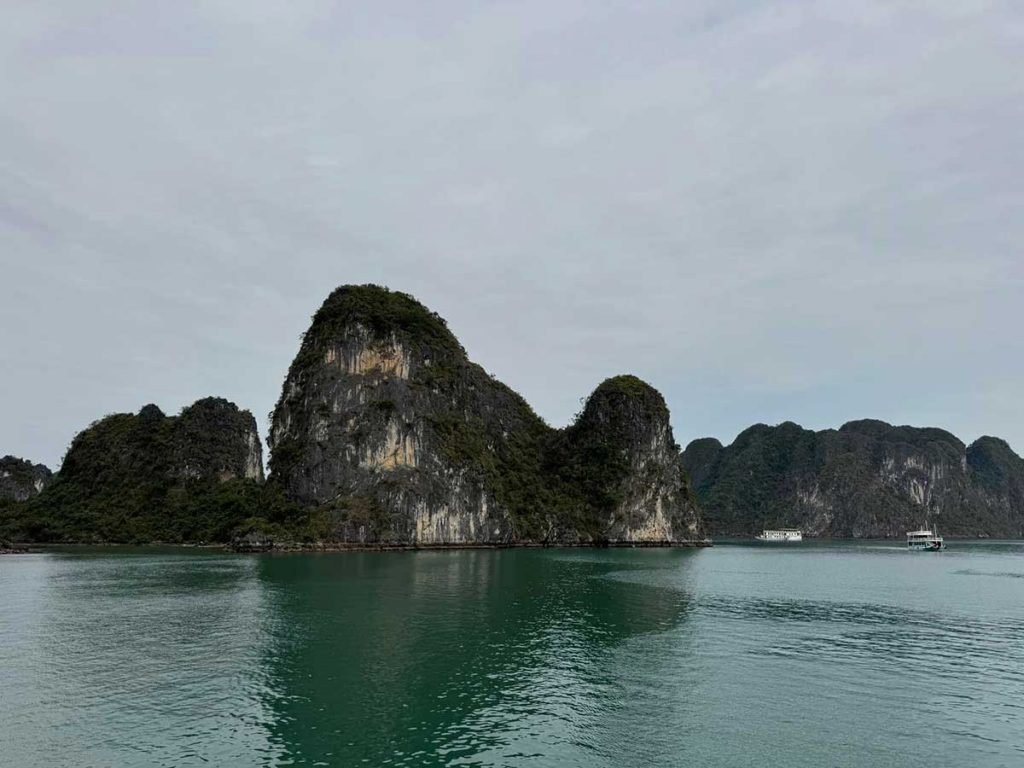
Oh, I forgot to mention (though, does anyone not know this?): Ha Long Bay is Vietnam’s signature landmark. I’ve dreamed of it for years, and today, we finally set off on a two-day cruise (well, technically, one night and two half-days around it).
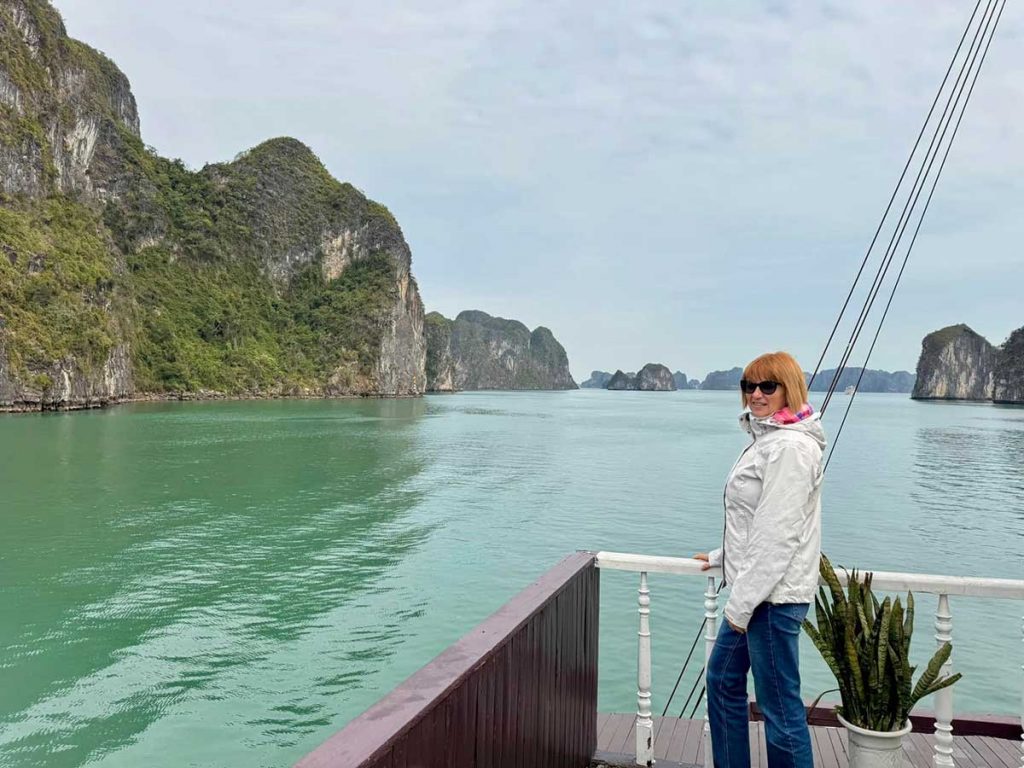
The views are absolutely breathtaking! But that’s not all.
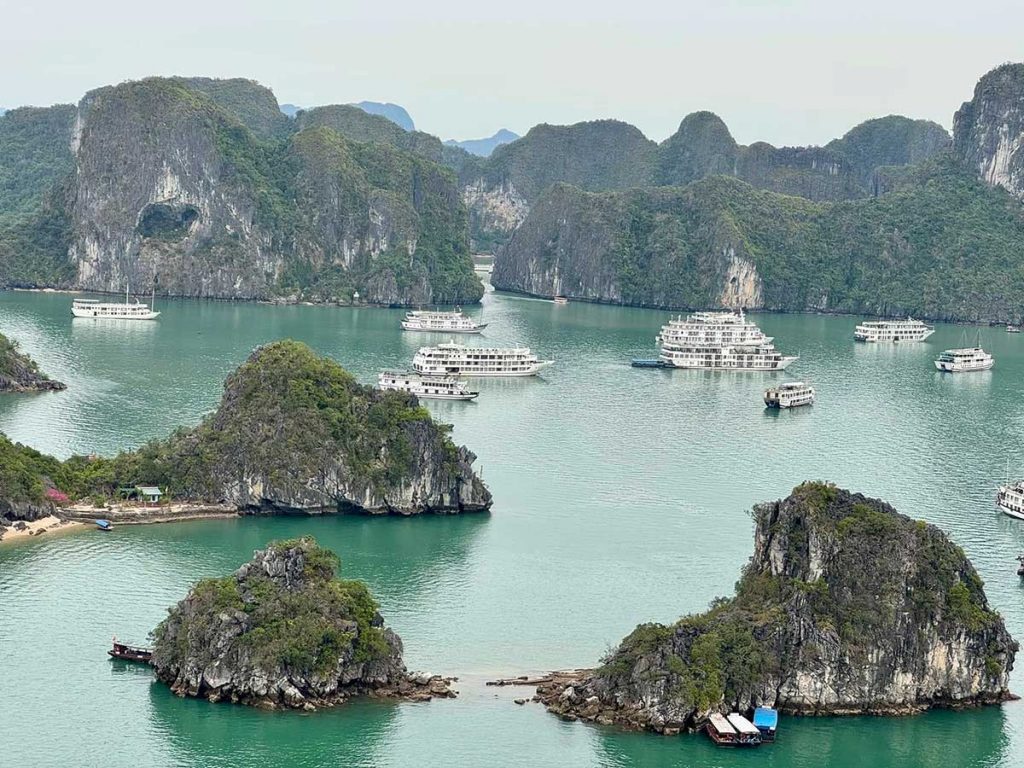
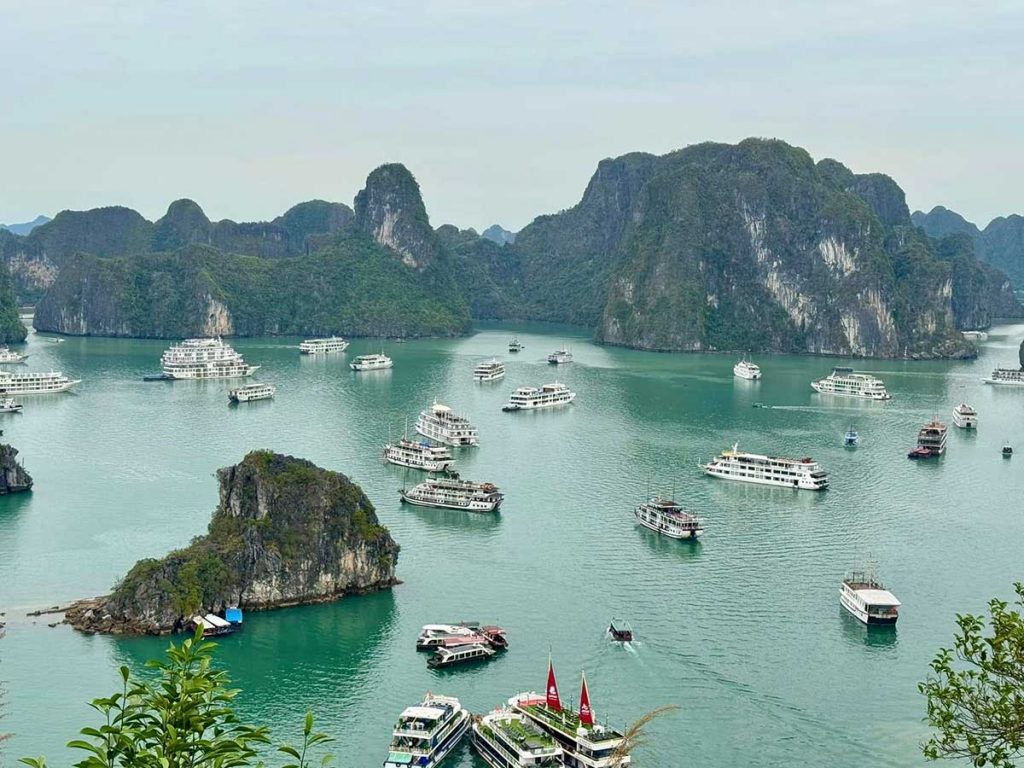
On the cruise itinerary, you can either stay on the boat or go kayaking. And then my husband says, “Of course, kayaking!” Excuse me, what?!
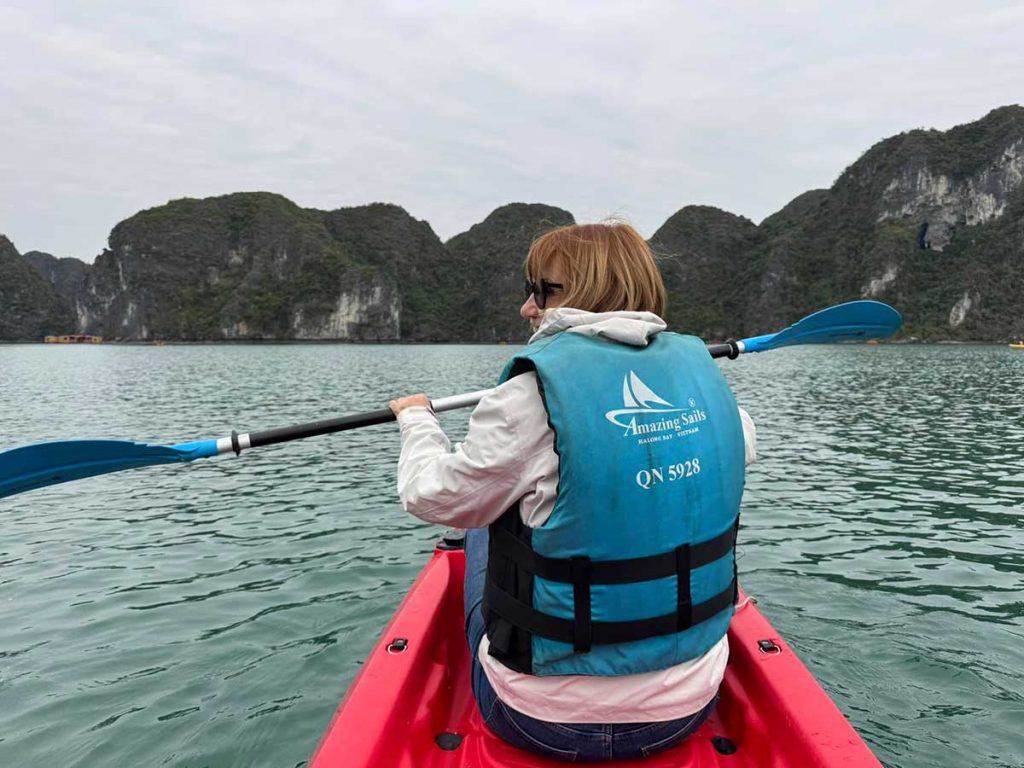
It was epic! First, the crew piled us into this rickety little boat. (The main goal was not to flip over and drown our iPhones.) We barely made it through. And then we had to row!!! Honestly, I had zero faith that this adventure would end well. But in the end, it was almost per-fect. We had a blast and even managed to snap a few shots along the way. 🙂
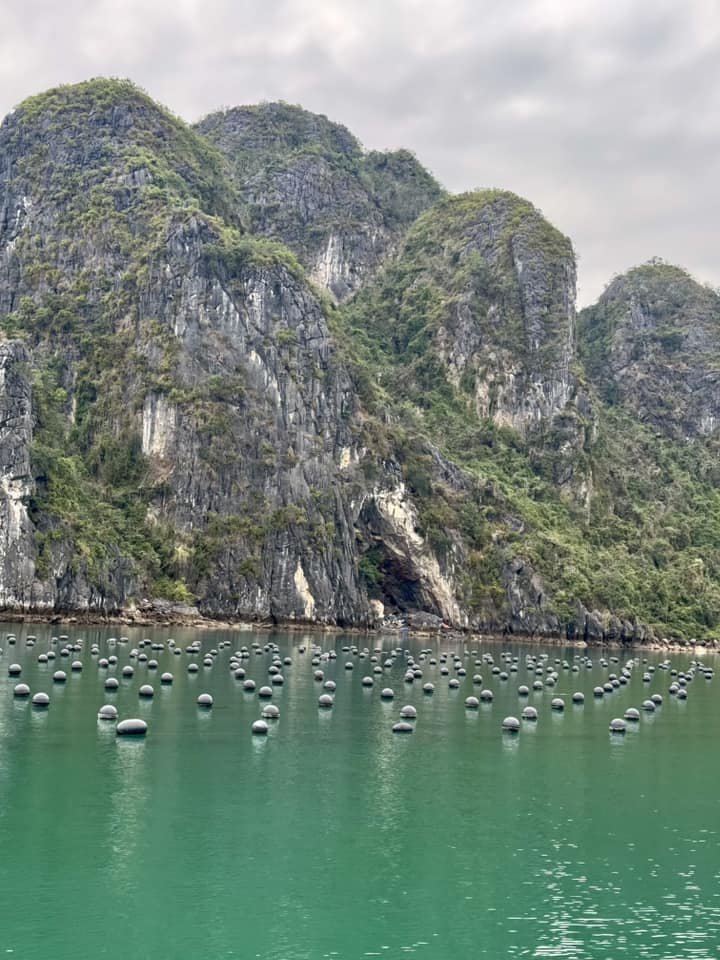
Getting out of the boat was another challenge, but we managed! Huge respect to my husband!
Then, they showed us how pearls are cultivated. And there was a little demonstration—opening an oyster to see if there was a pearl inside. The odds were 50/50. They asked our group, “Who wants to pick the oyster?” Someone with a lucky hand? I thought—well, the weather has been good, we didn’t capsize the kayak… So everyone picked Kozlov. He pointed at an oyster without hesitation. And inside was a stunning three-year-old pearl! Applause!
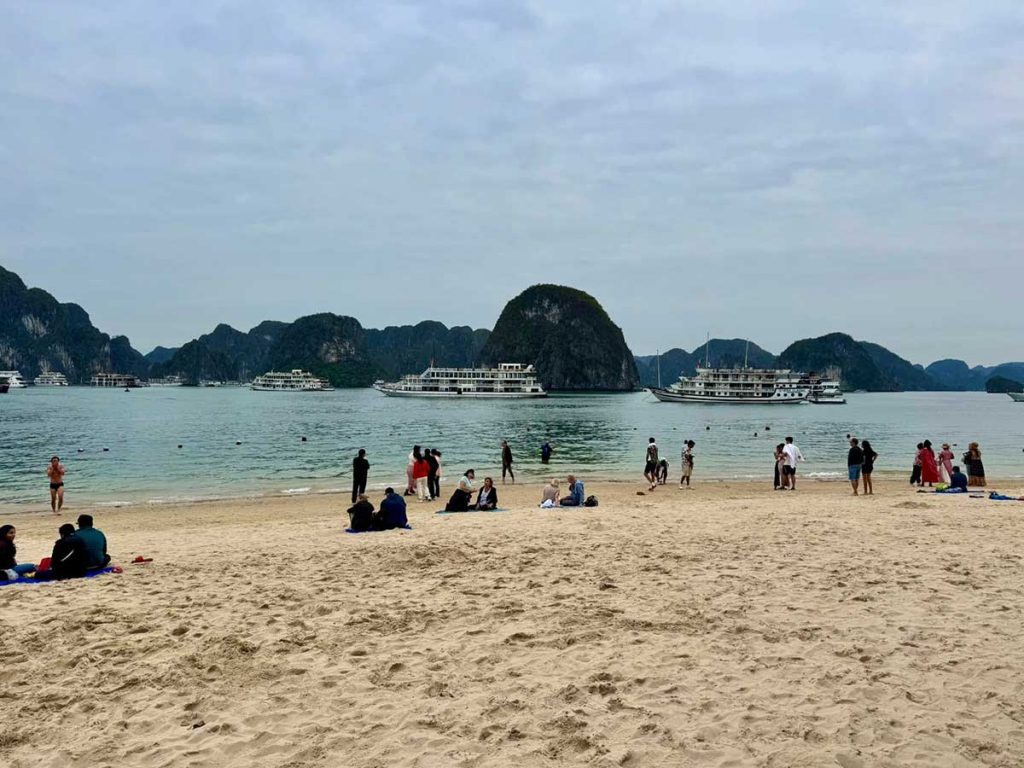
Afterward, they took us to an island where “you can go swimming—ha-ha-ha,” as our ship guide put it, referring to 18°C air temperature and about the same in the water. Or you could climb to a viewpoint with stunning panoramas.
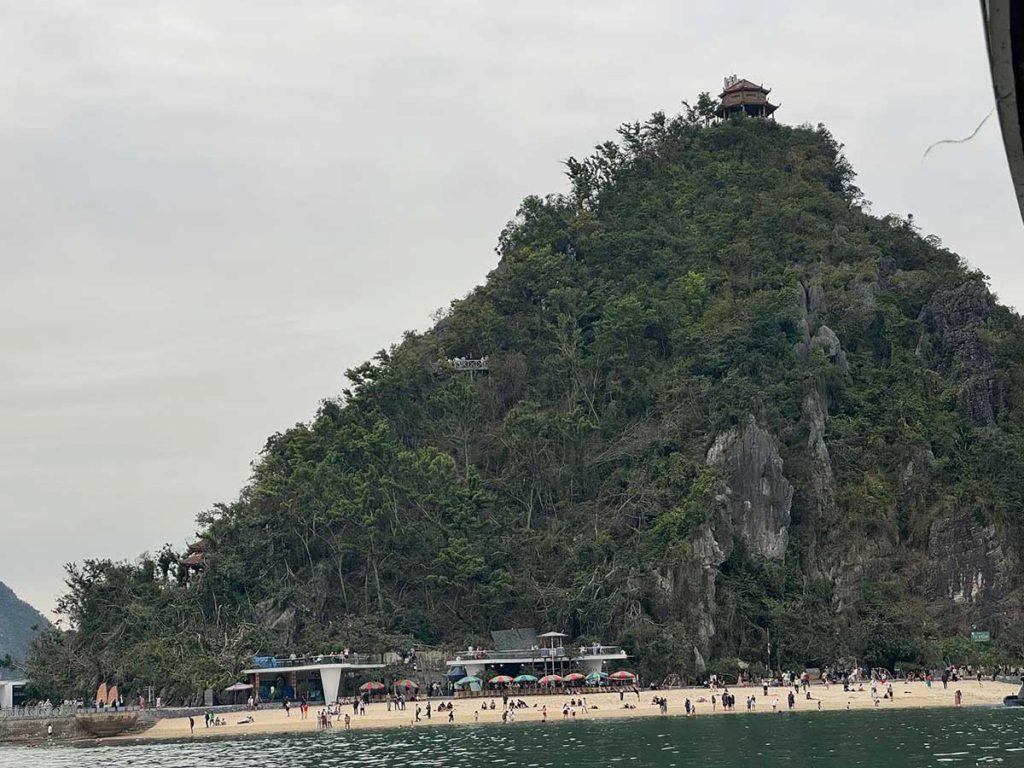
Ha! First, I climbed. Then, I swam. After 250 steps up and down, a dip in the refreshingly cool water with jaw-dropping views around—pure bliss!
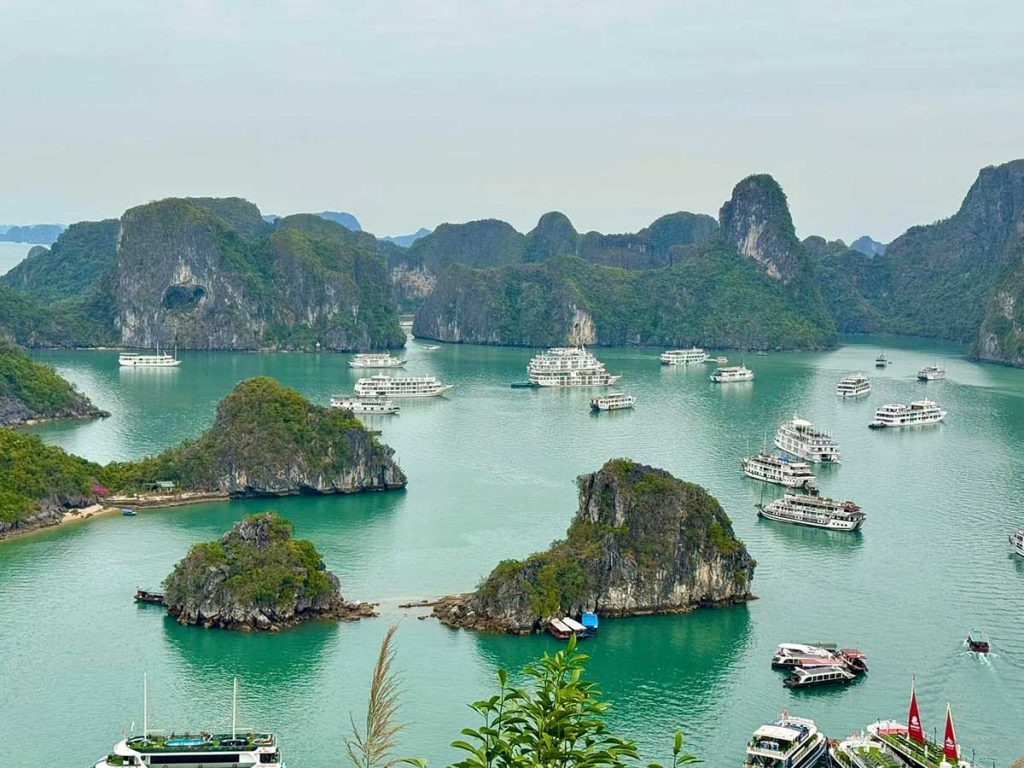
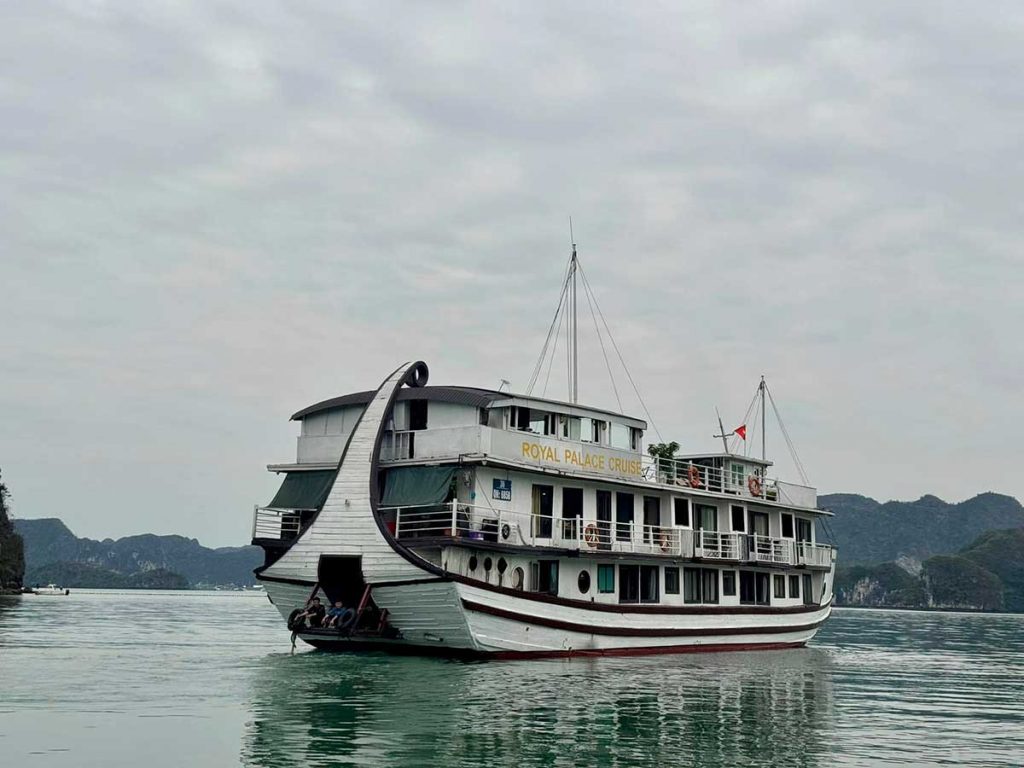
Now, we’re sitting on the upper deck, sipping cocktails. Though the promised sunset didn’t happen—there was no sun. But oh well.
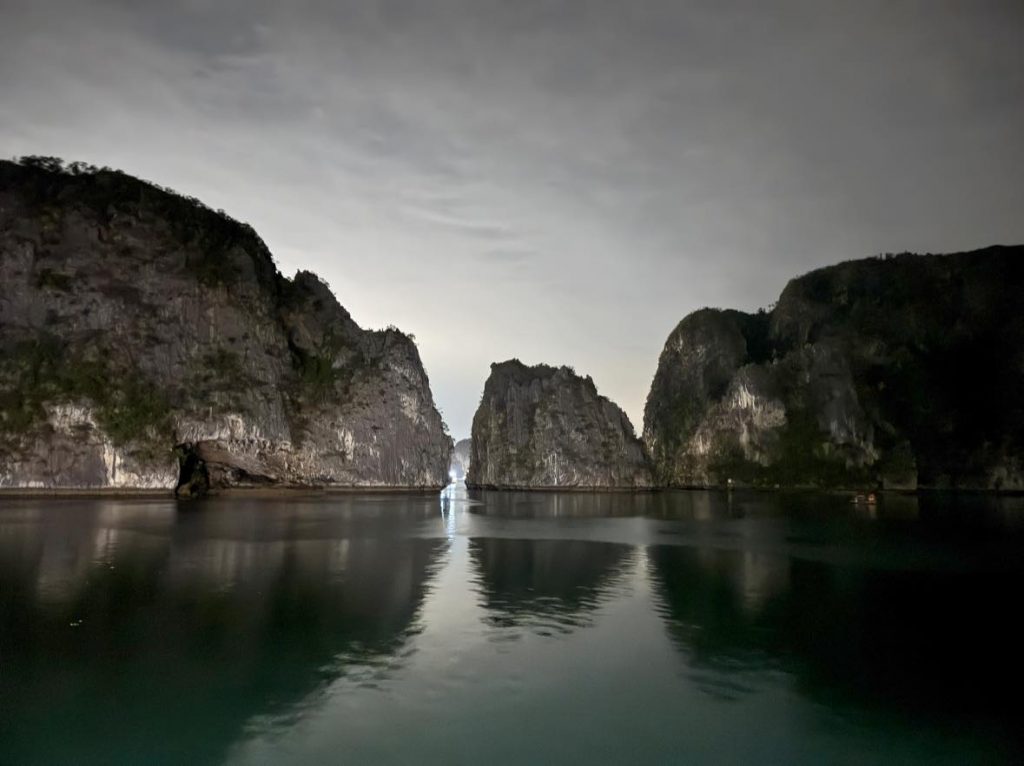
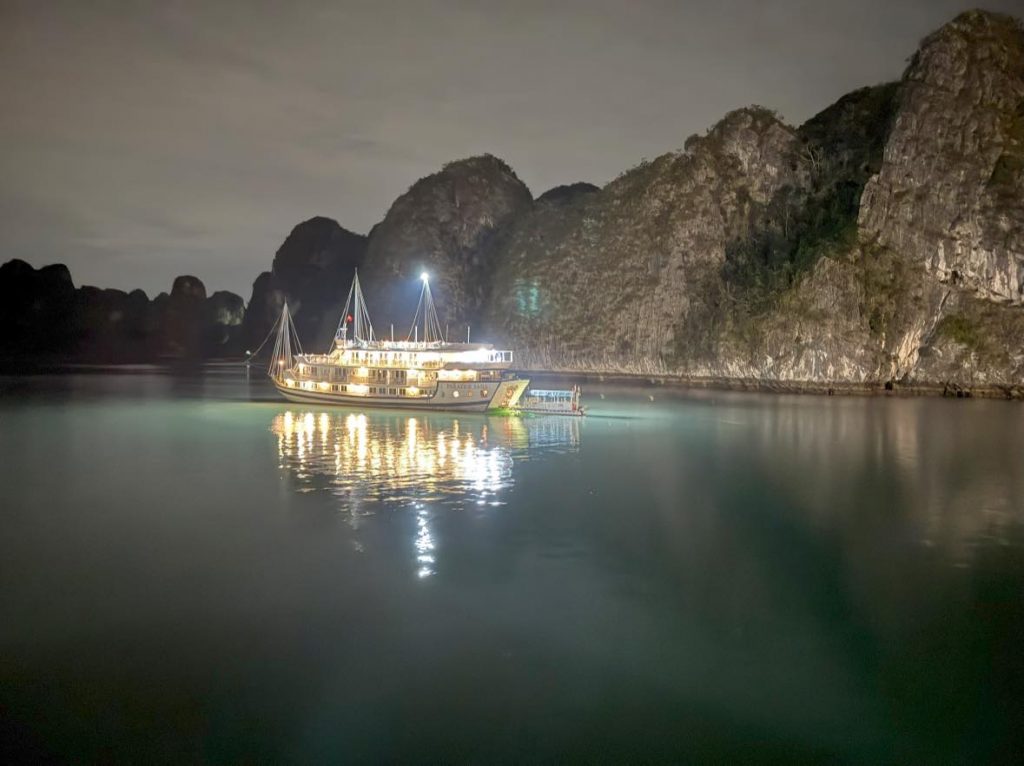
Sorry, gotta go. Heading off for some night fishing—squid catching.
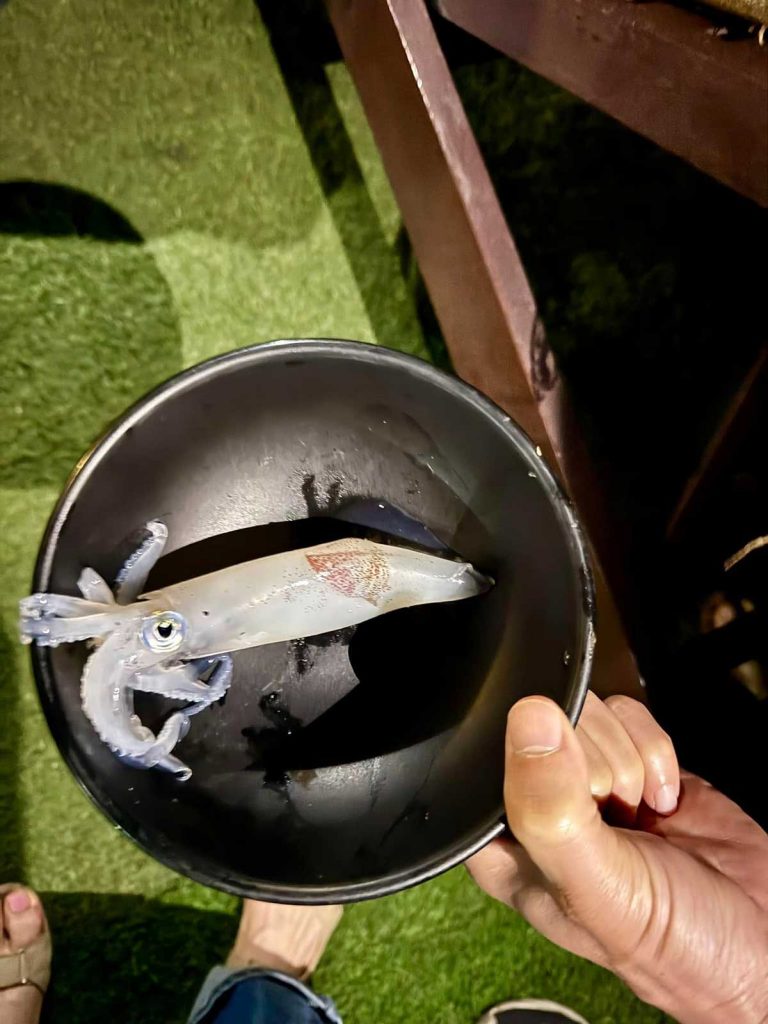
DAY 8
The morning on the ship started at 5:45 AM with Tai Chi exercises. I just sat aside and watched.

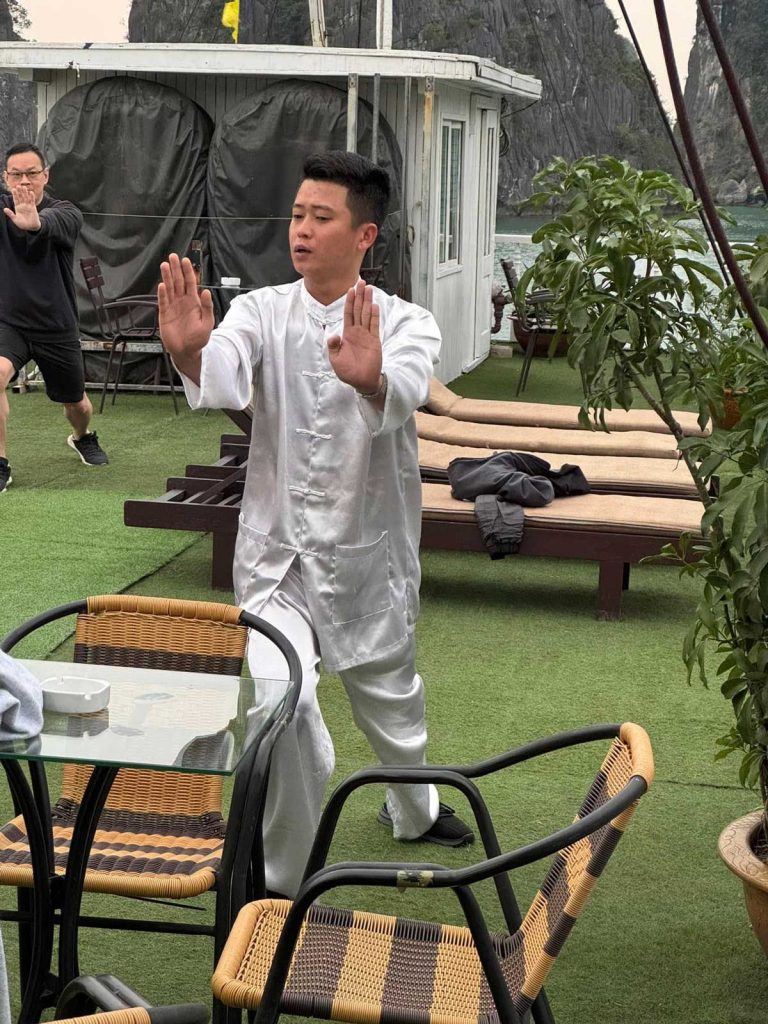
The Tai Chi master performed the movements very smoothly and gracefully, accompanied by meditative Chinese music. I was mesmerized.
Our Ha Long Bay cruise has come to an end. But before that, we managed to be deliciously fed twice, taken to the most famous and largest cave in Ha Long, and even had a spring roll-making masterclass. (They even gave us a pack of rice paper to take home, so we can treat our loved ones later.)
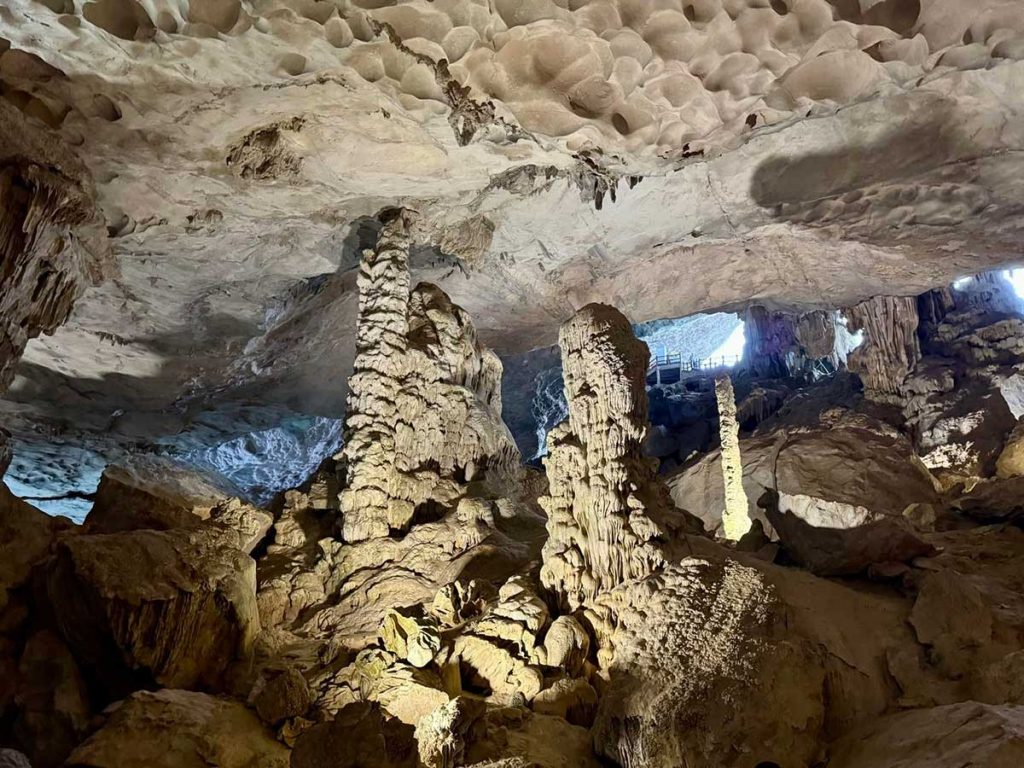

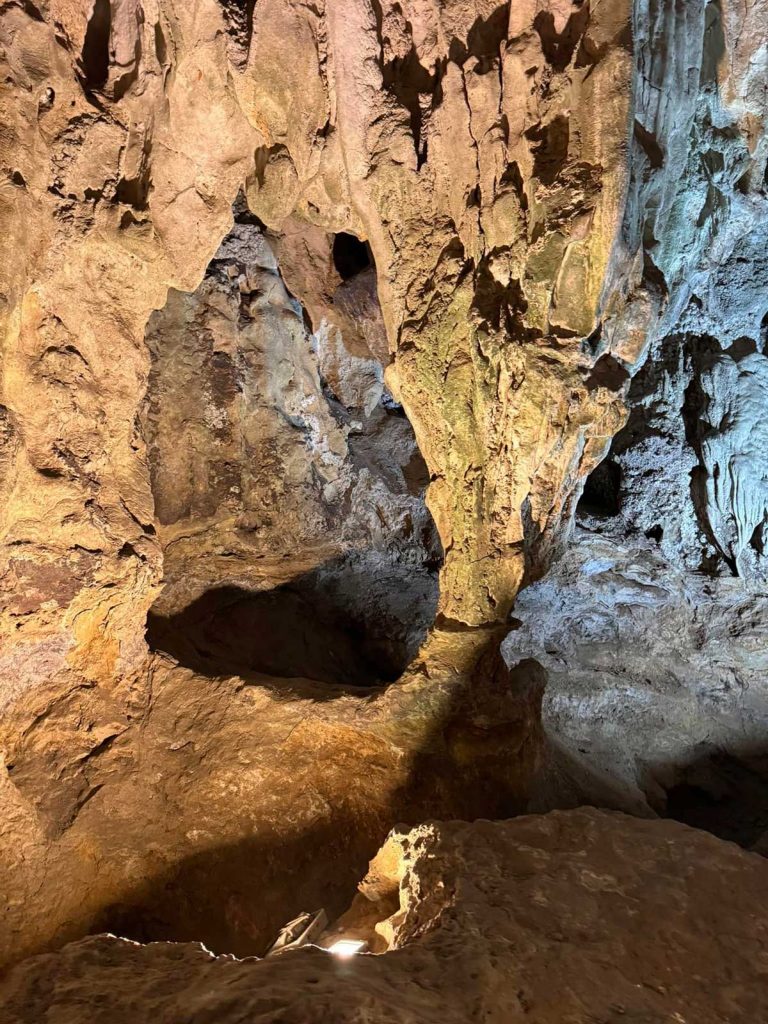
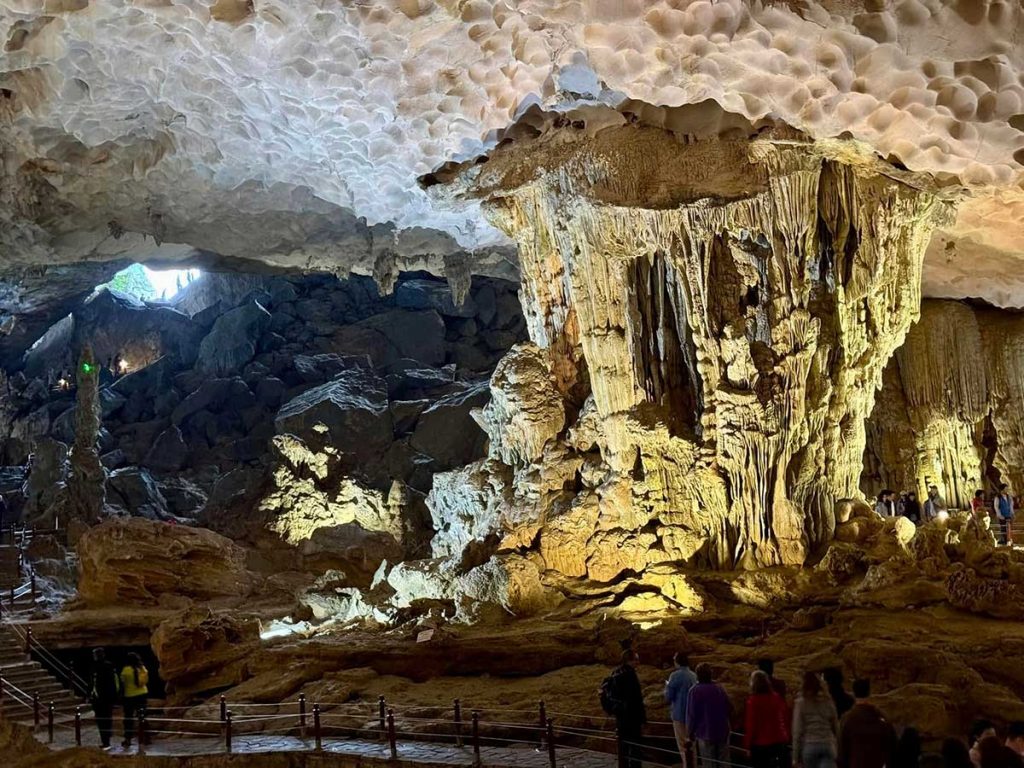
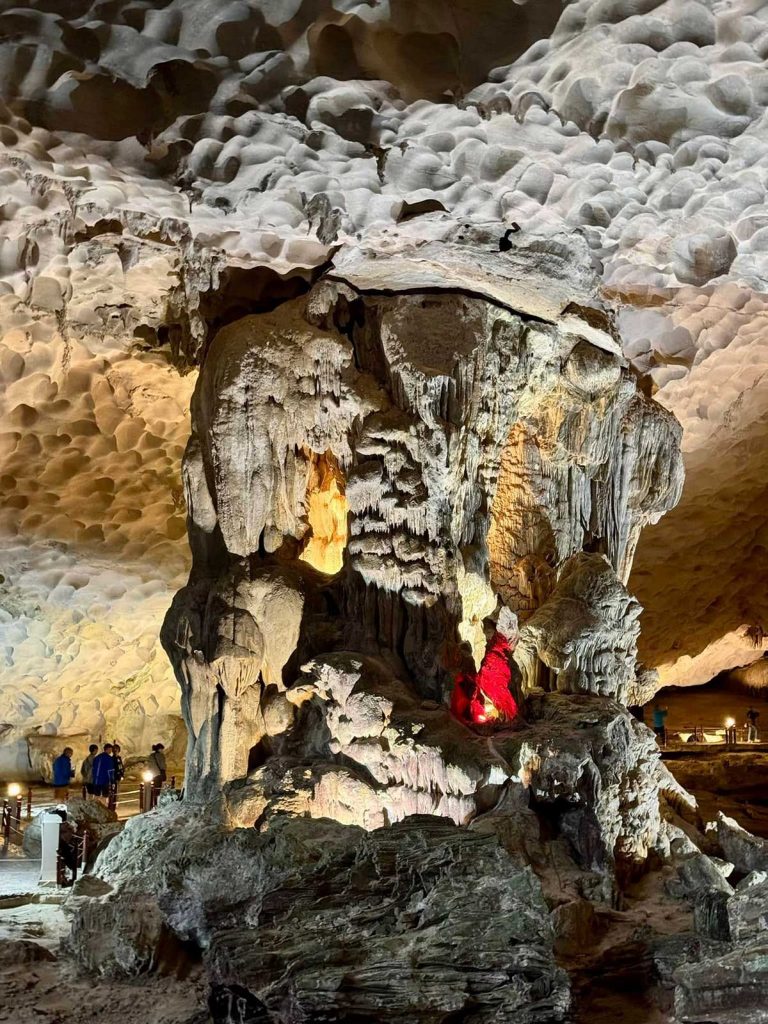
Sung Sot Cave. They introduced it to us as Surprise Cave. That’s what the French called it when they discovered it at the beginning of the 20th century. It’s huge! If you look closely, you can see wooden walkways with railings. The ceilings reach 30 meters high, and the cave stretches for 800 meters. We entered from one side, walked through the entire cave along equipped paths, and exited at the other end.
The view from the cave:
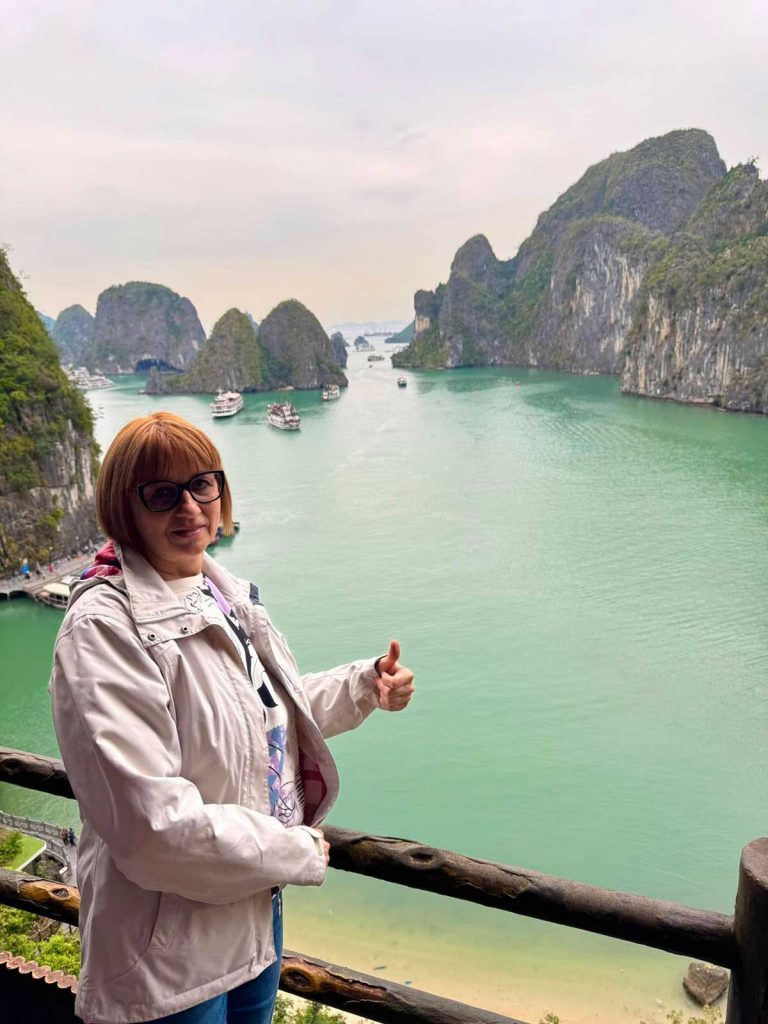
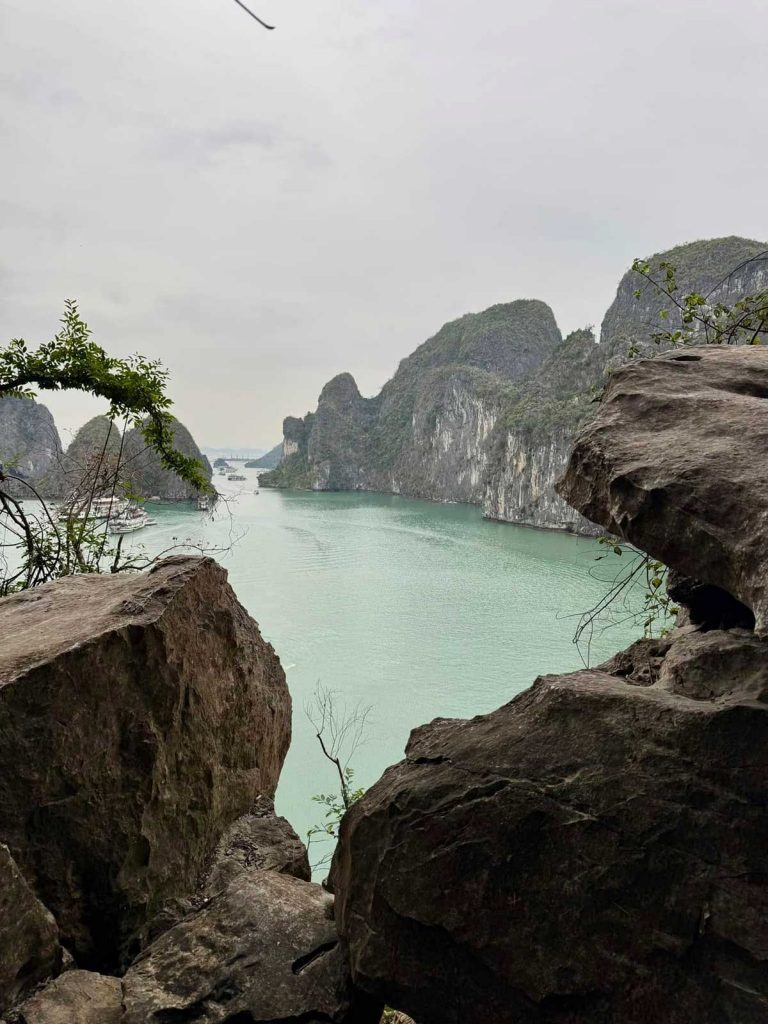
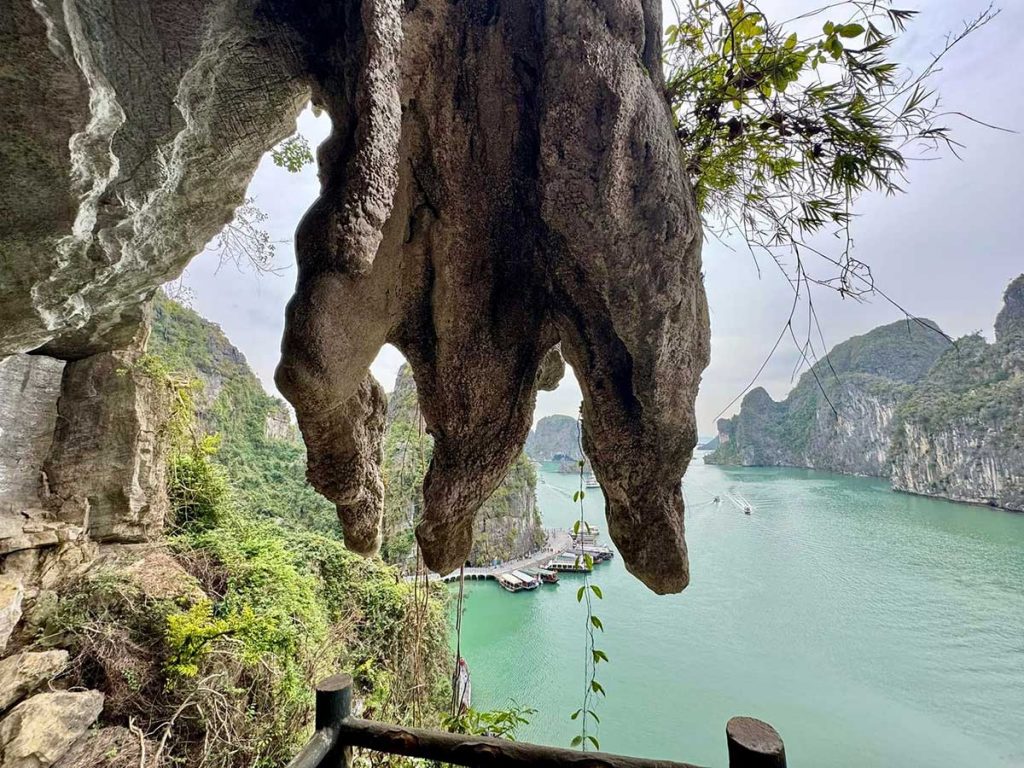
And here we are at the spring roll-making masterclass:
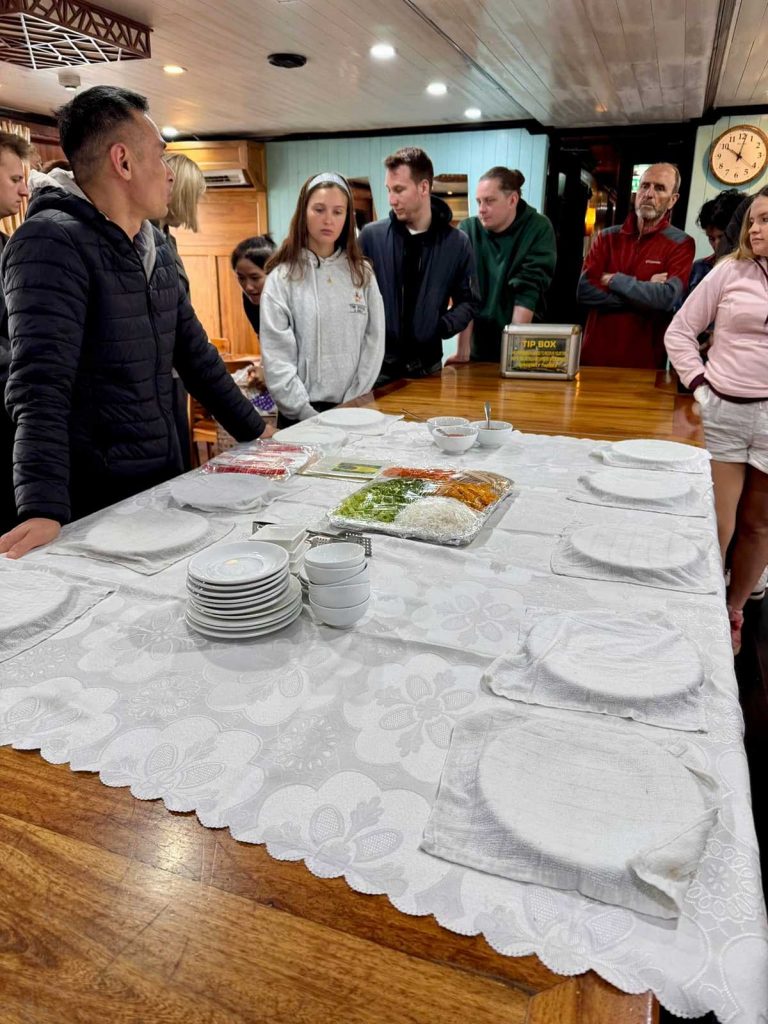
By 2:30 PM, we were already back in Hanoi, returned the car (everything went smoothly without any issues). Driving in Hanoi is too stressful, both for the driver and their nerves. We decided to walk or use taxis instead (we had already installed the local Grab taxi app in advance).
A bit of beauty from Hanoi. The little bridge to Jade Island.
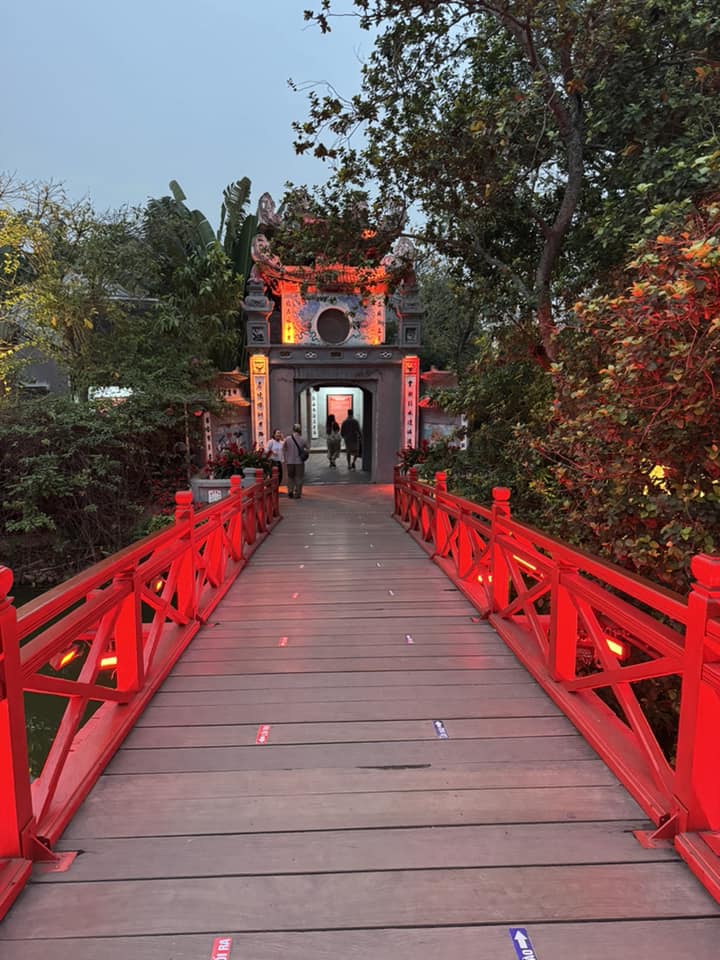
Jade Island and the Pagoda near the Temple of the Jade Mountain:
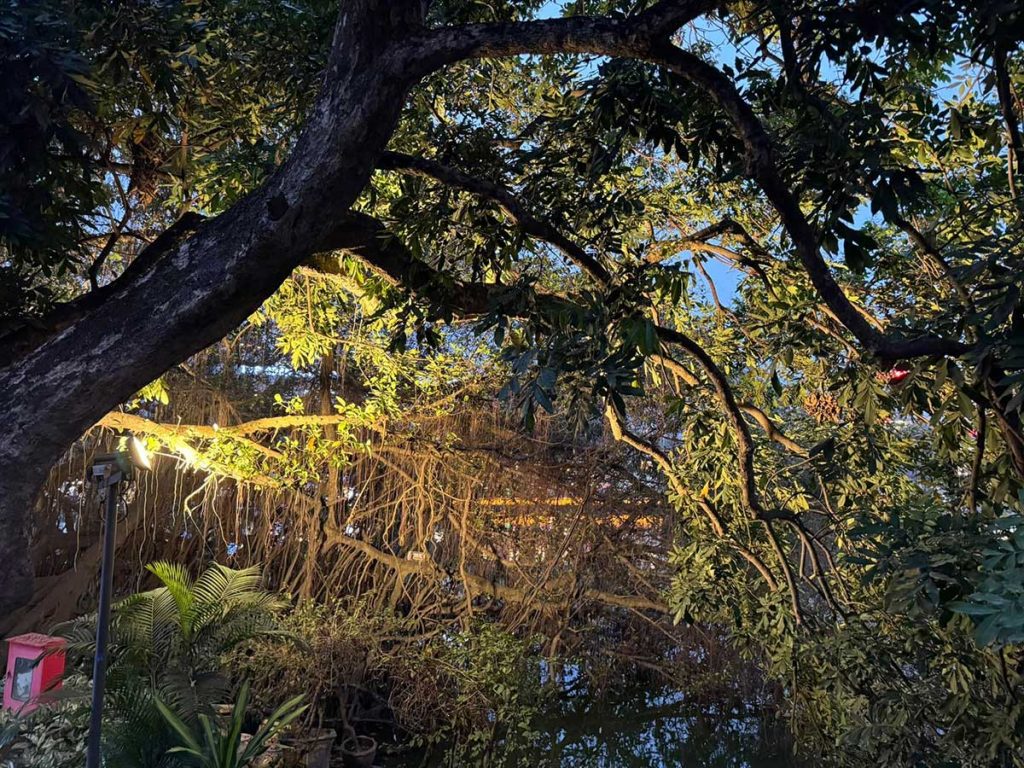
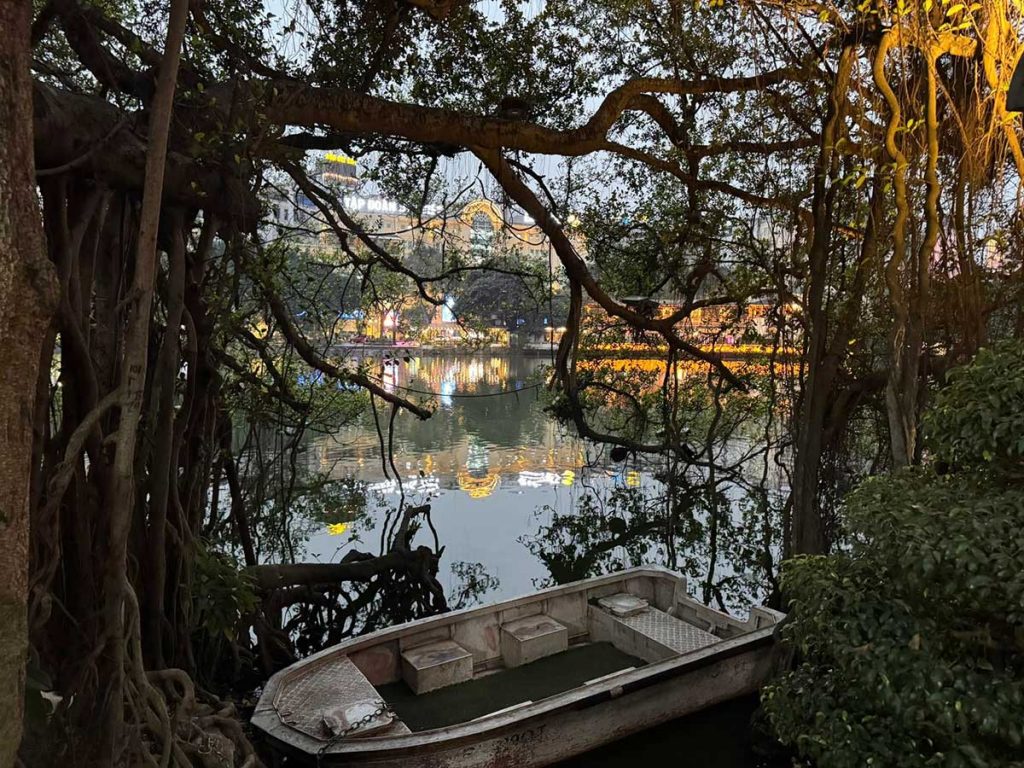
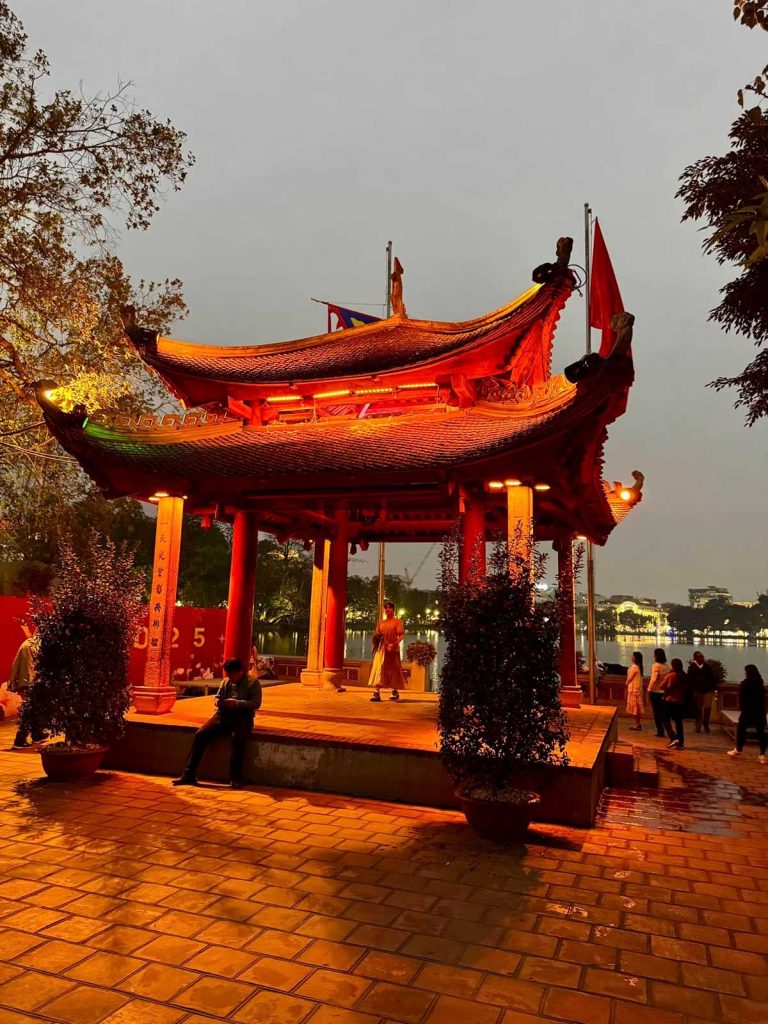
St. Joseph’s Cathedral. Built by the French in the mid-19th century, nostalgic for Notre-Dame de Paris.
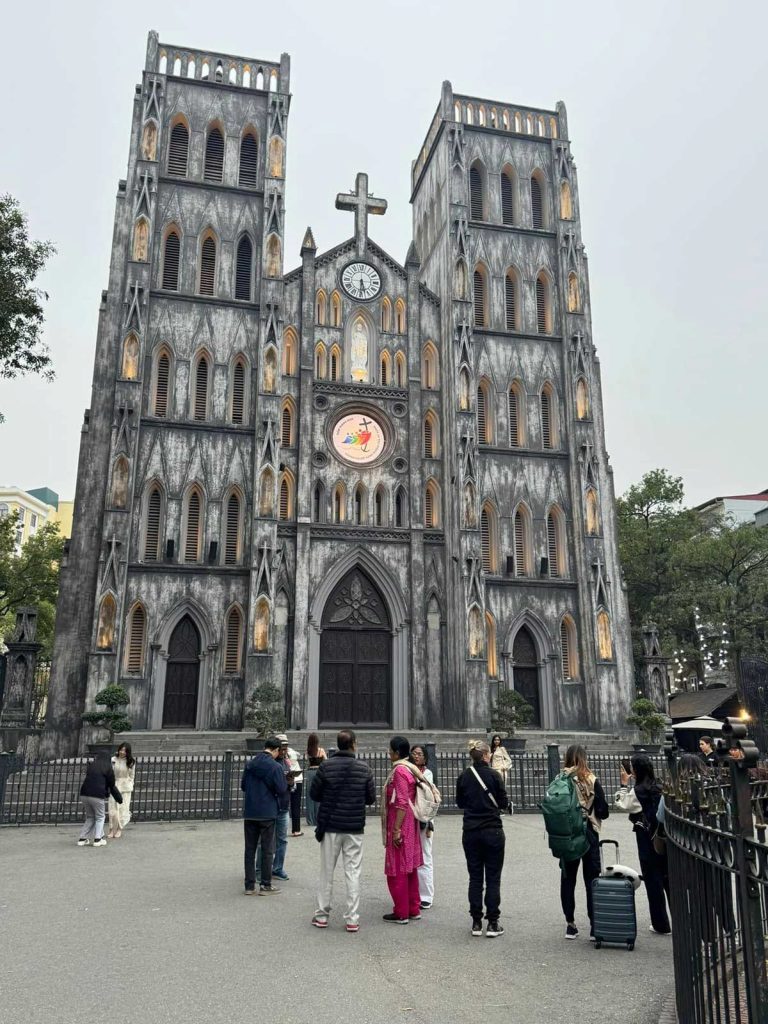
A local attraction. Several times a day, a train passes right through the narrow streets in the city center. Tourists gather and wait.
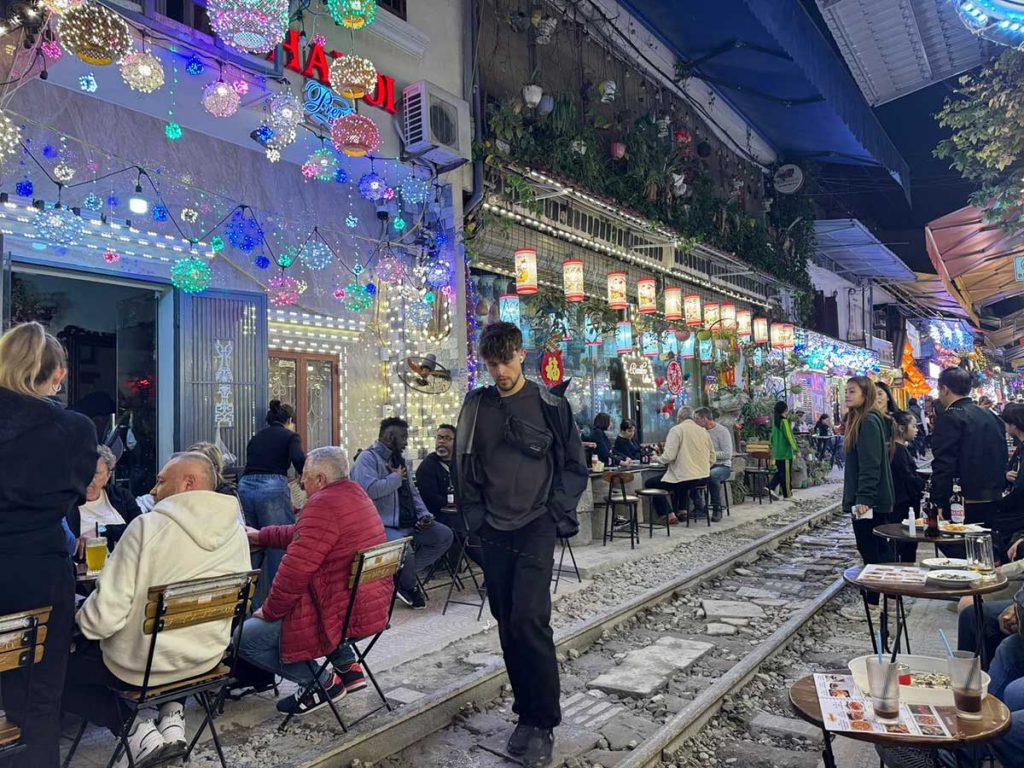
And then the train came and went!
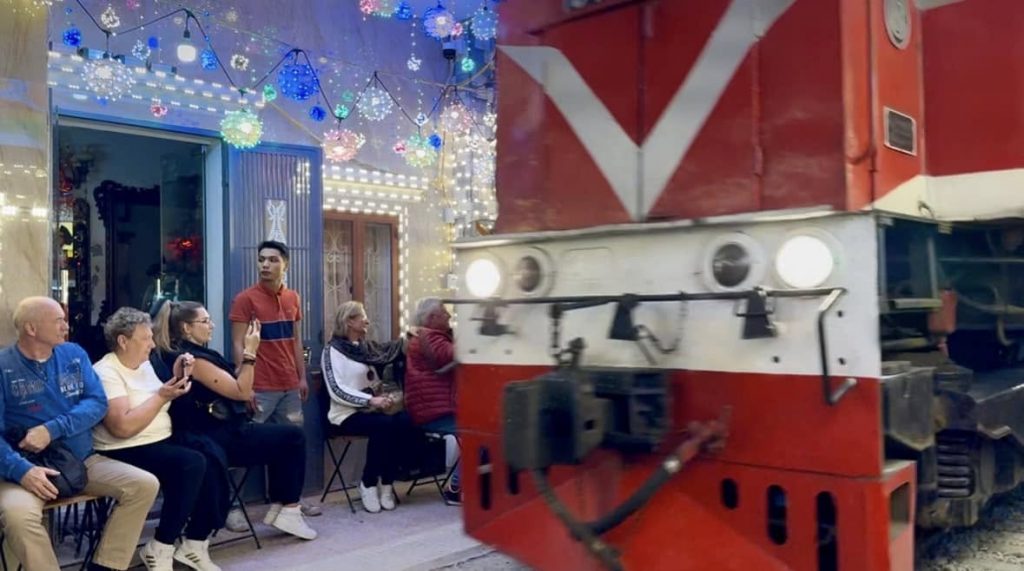
Tomorrow is our last day in Vietnam. Feeling sad… 🙁
DAY 9
The last day in Hanoi turned out to be chaotic and rather unproductive. Clearly, I didn’t plan the itinerary well enough.
First, we headed to the Imperial Citadel. I considered it a must-visit since it’s a UNESCO site and all that. But as it turned out, not much has been preserved.
Through the Southern Gate. The Southern Gate of the Citadel.
The Hanoi Citadel (Vietnamese: Hoàng thành Thăng Long) is a cultural complex that includes the first royal structures from the Lý Dynasty, later expanded during the Trần, Lê, and Nguyễn dynasties. The ruins roughly correspond to the present-day Hanoi Citadel.
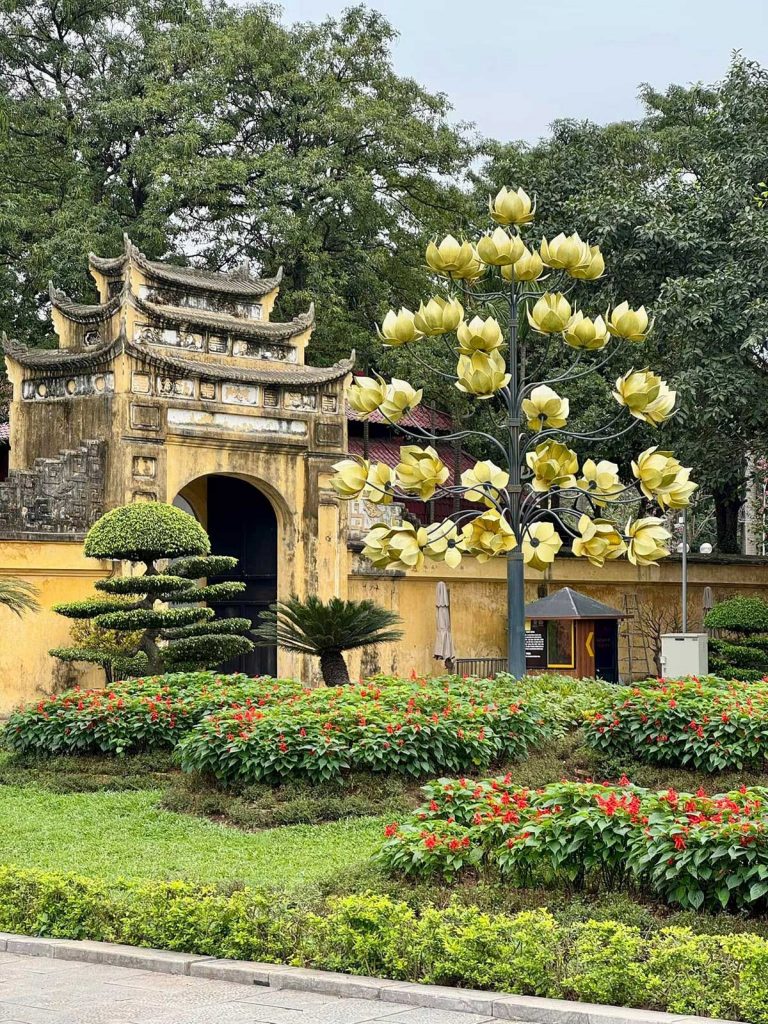
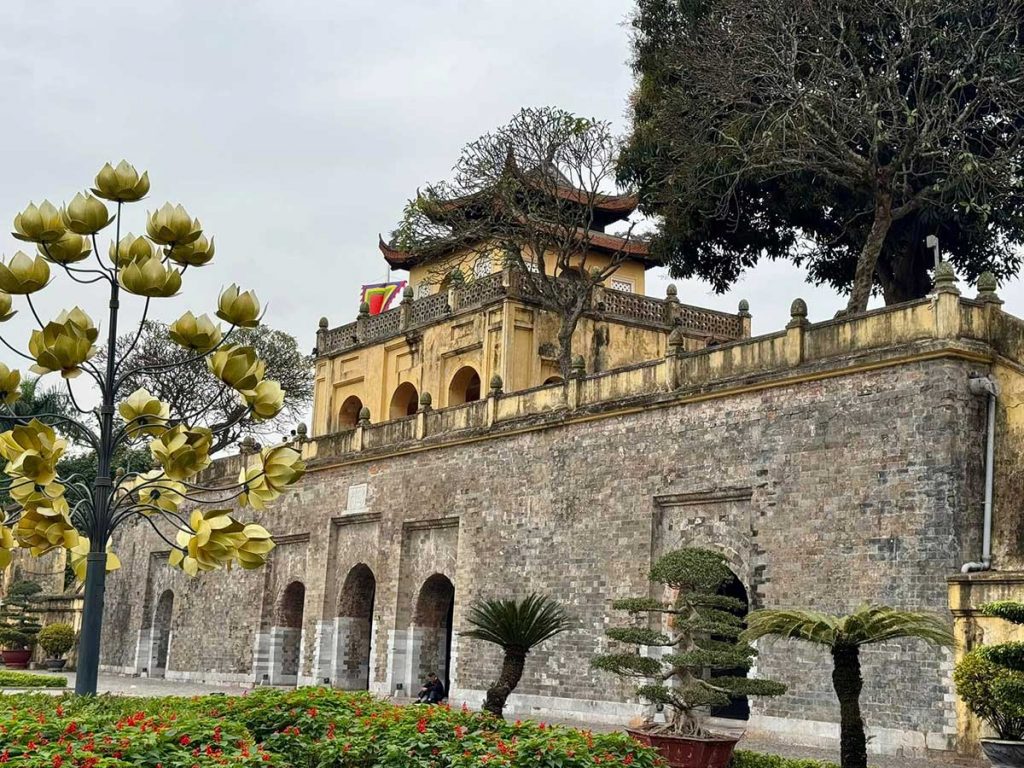
The royal palaces and most of the buildings in Thăng Long were largely destroyed by the late 19th century due to actions by the French army during the conquest of Vietnam (Thăng Long is the old name for Hanoi). In the 20th century, the complex continued to suffer damage due to ongoing wars. Systematic excavations only began in the early 21st century.
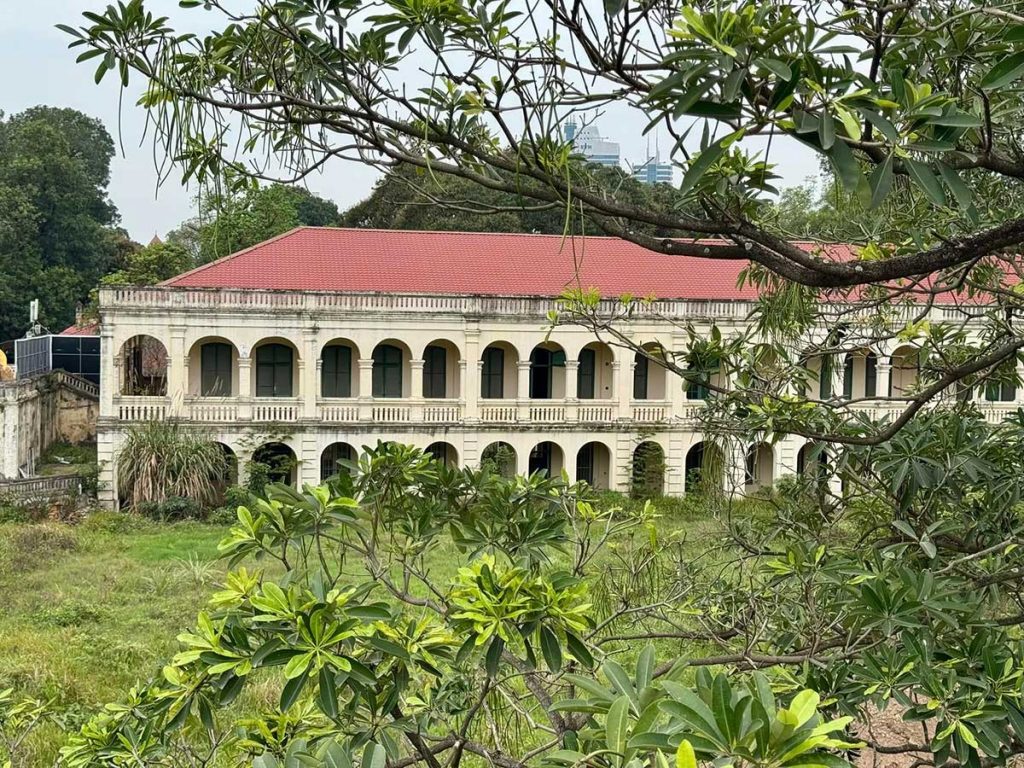
We climbed up to the Southern Gate tower.
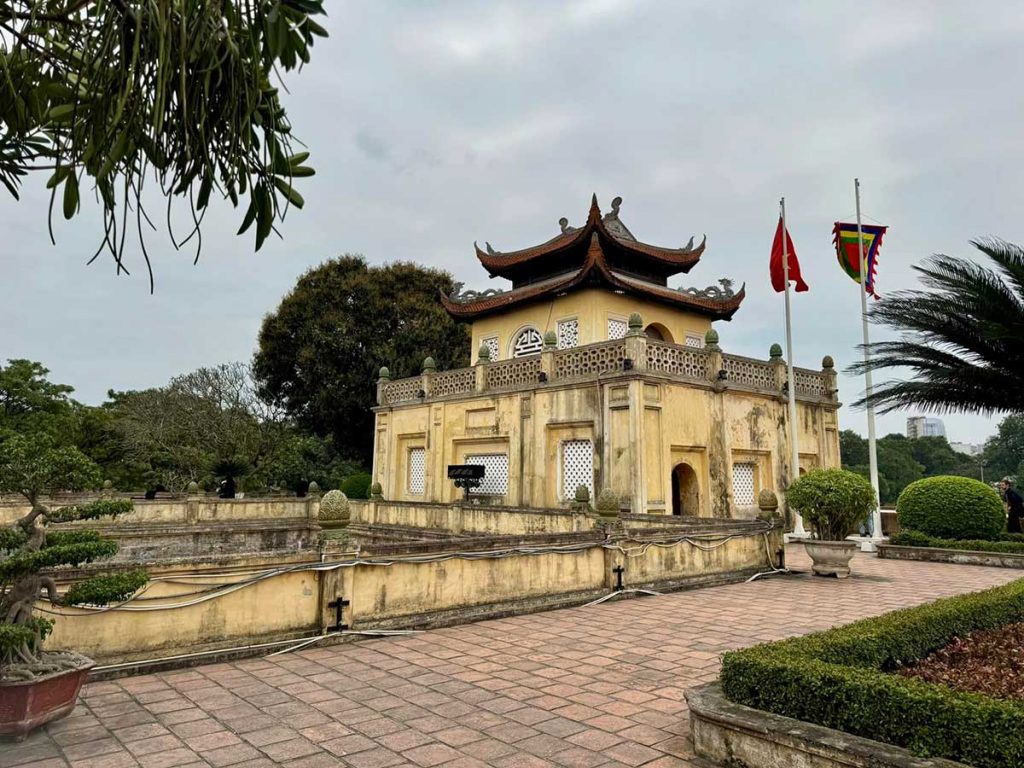
Artifacts. A drum and a turtle in front of it.
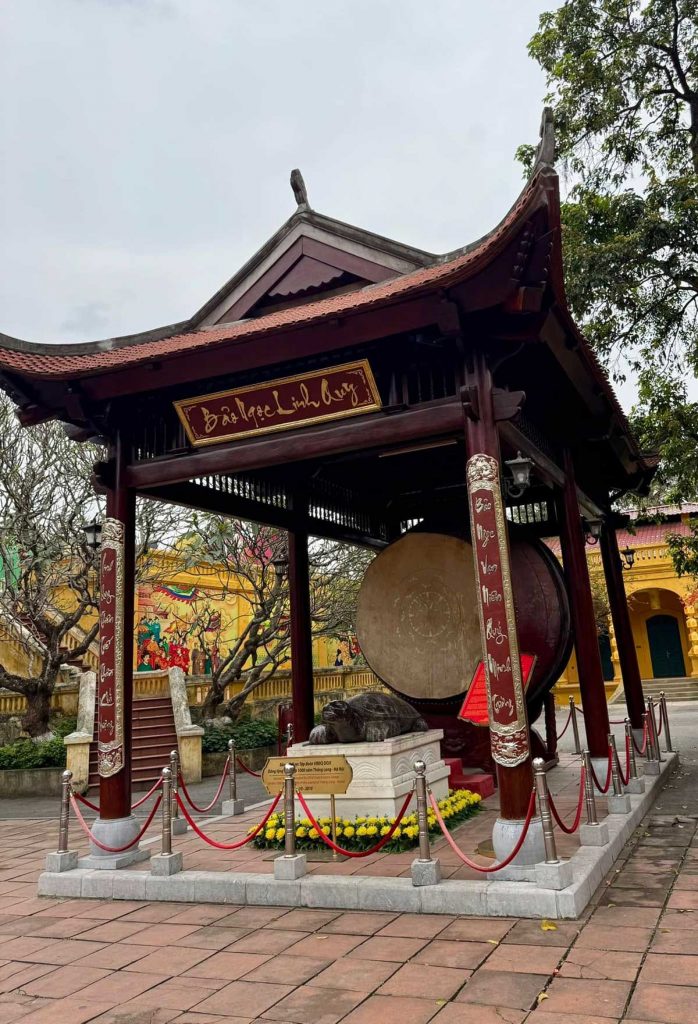
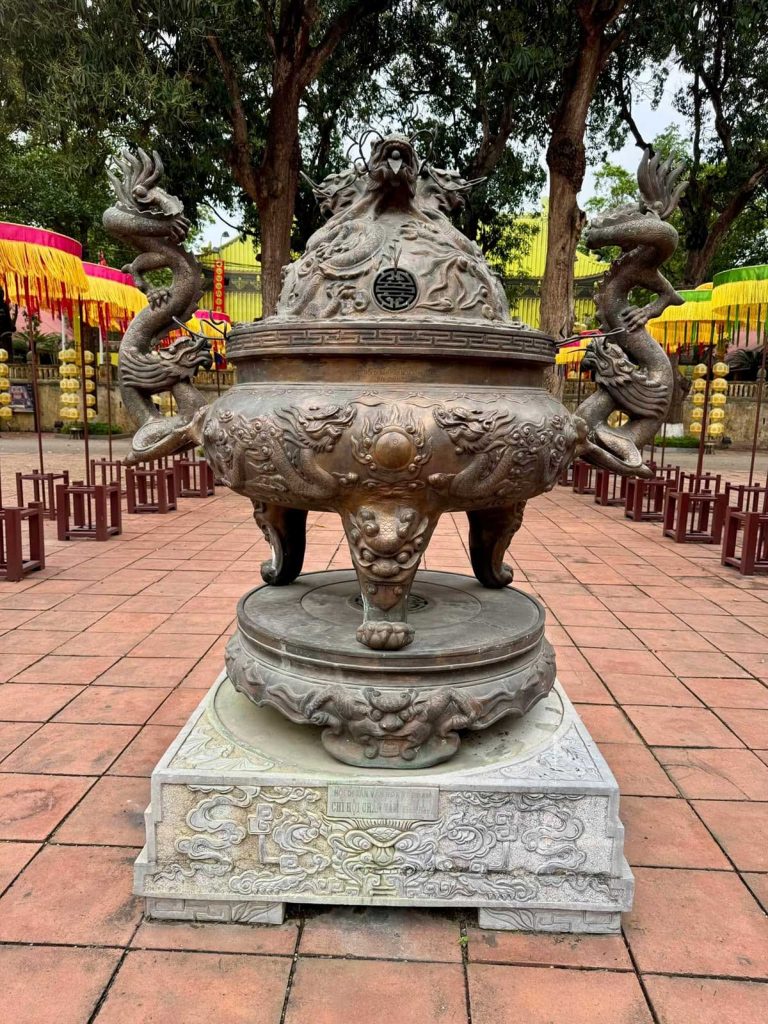
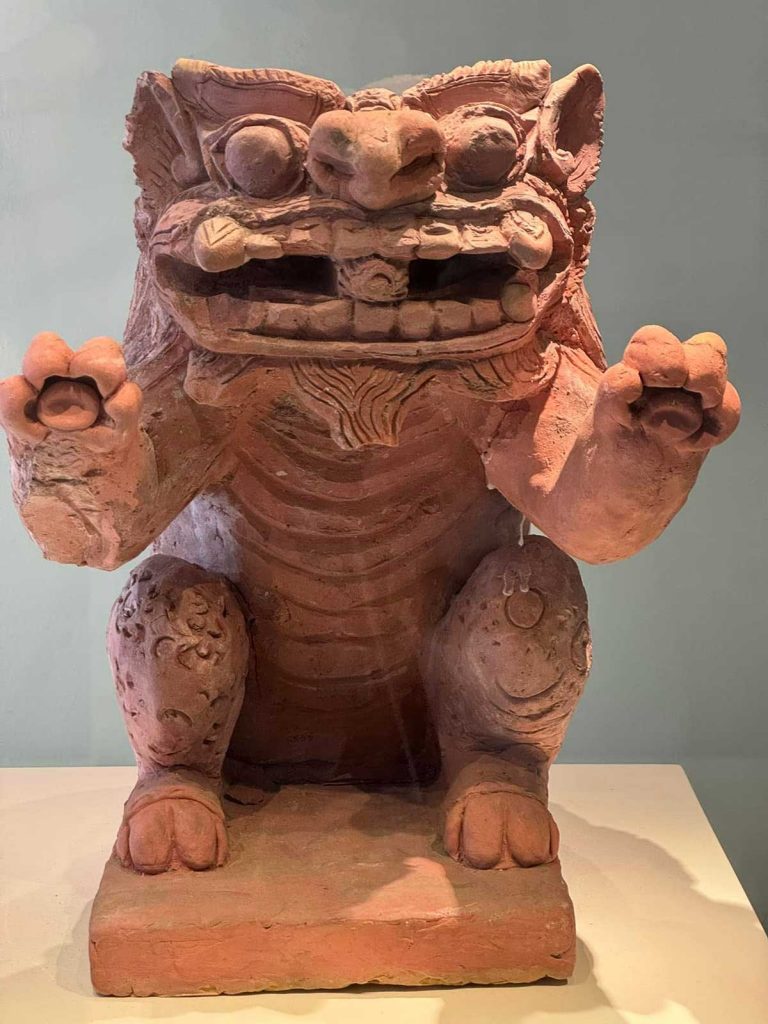
The One Pillar Pagoda.
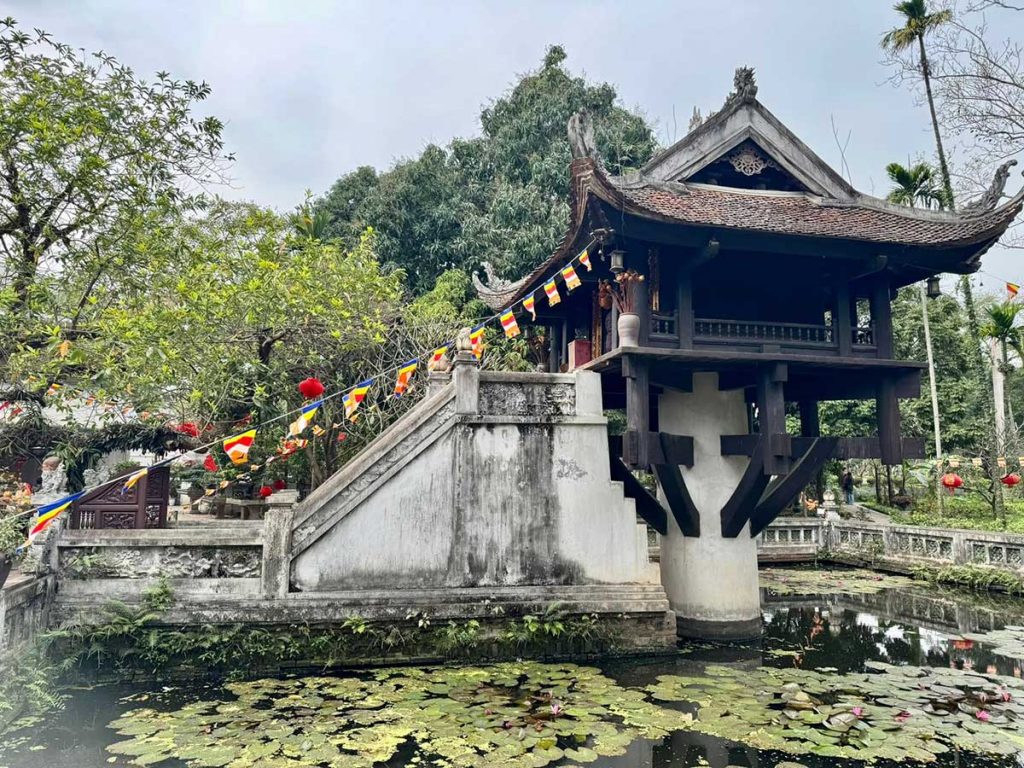
Then we went to Ba Dinh Square with the Ho Chi Minh Mausoleum. By chance, we caught the changing of the guard. Exactly like at Lenin’s Mausoleum.

Both Lenin wished to be buried next to his mother, and Ho Chi Minh requested to be cremated and have his ashes scattered to the wind. But who listens to the deceased? When you can turn it into a political spectacle.
Among the buildings associated with the Imperial City, the Hanoi Flag Tower stands out. It is 33.4 meters high (41 meters with the flag) and is a symbol of the city. Built in 1812, unlike many other buildings in Hanoi, the tower was not destroyed. During the French colonial rule over Vietnam (1885–1954), it was used for observing the surroundings and as a communication point between the headquarters and remote military posts.
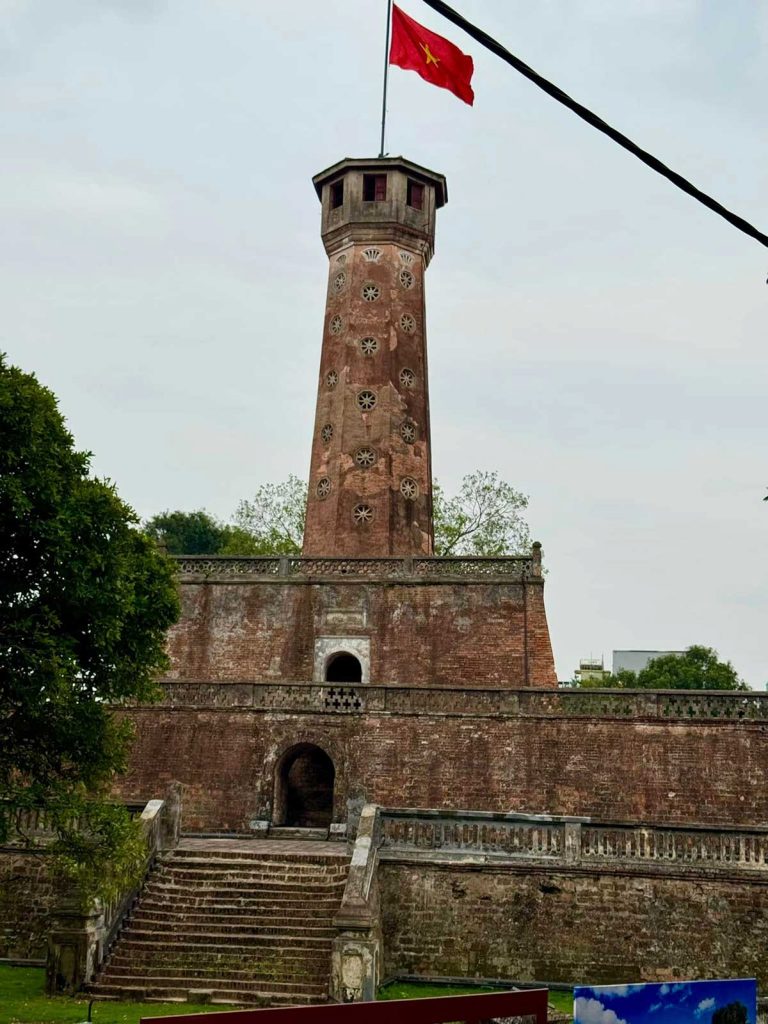
By this time, we were already exhausted and decided to just take a hop-on hop-off bus along the tourist route. Except there was no hopping off—we arrived too late. After 3 PM, they told us, it was just a one-hour sightseeing ride. At least there was an audio guide in Russian.
So we took all our photos from the second floor of the bus.
What impressed us the most was the four-kilometer-long wall along the road, decorated with ceramic tiles depicting various scenes from Vietnam’s history, children’s drawings, and artistic creations by artists from different countries. This wall is listed in the Guinness Book of Records for all of this.
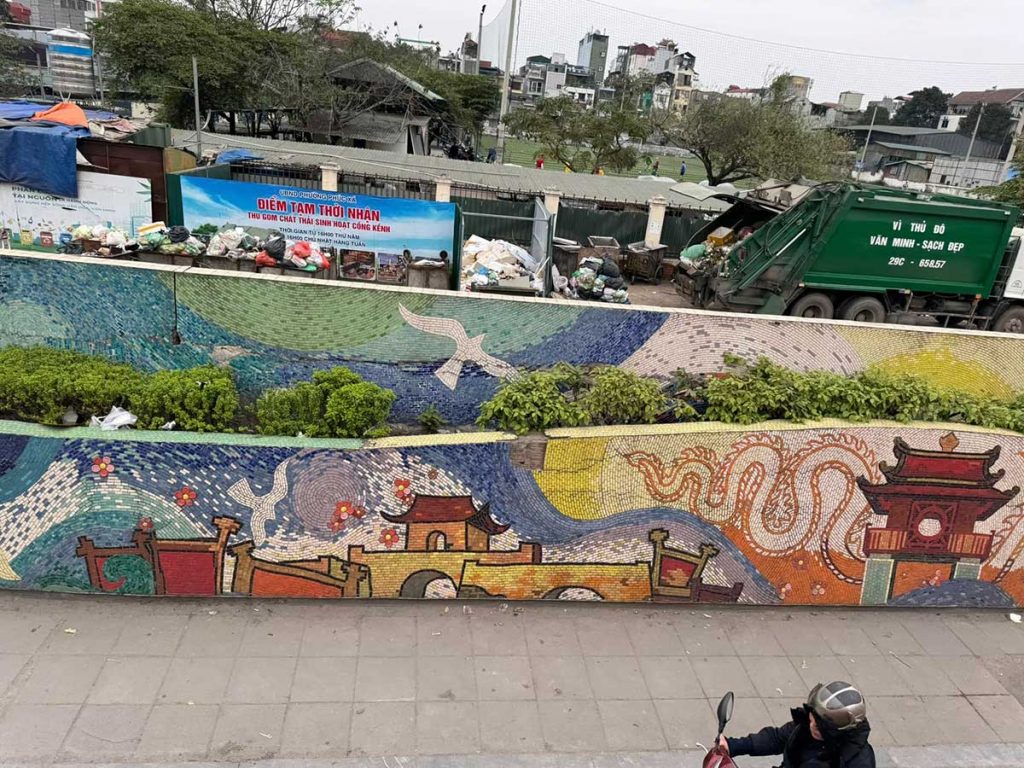
The Hanoi Ceramic Mosaic Mural (or Hanoi Ceramic Road) is an unusual, beautiful, and impressive modern landmark of Hanoi. Construction began in 2007, and it was planned to be fully completed by 2010 in time for Hanoi’s 1000th anniversary, but even after that, work continued on some parts.
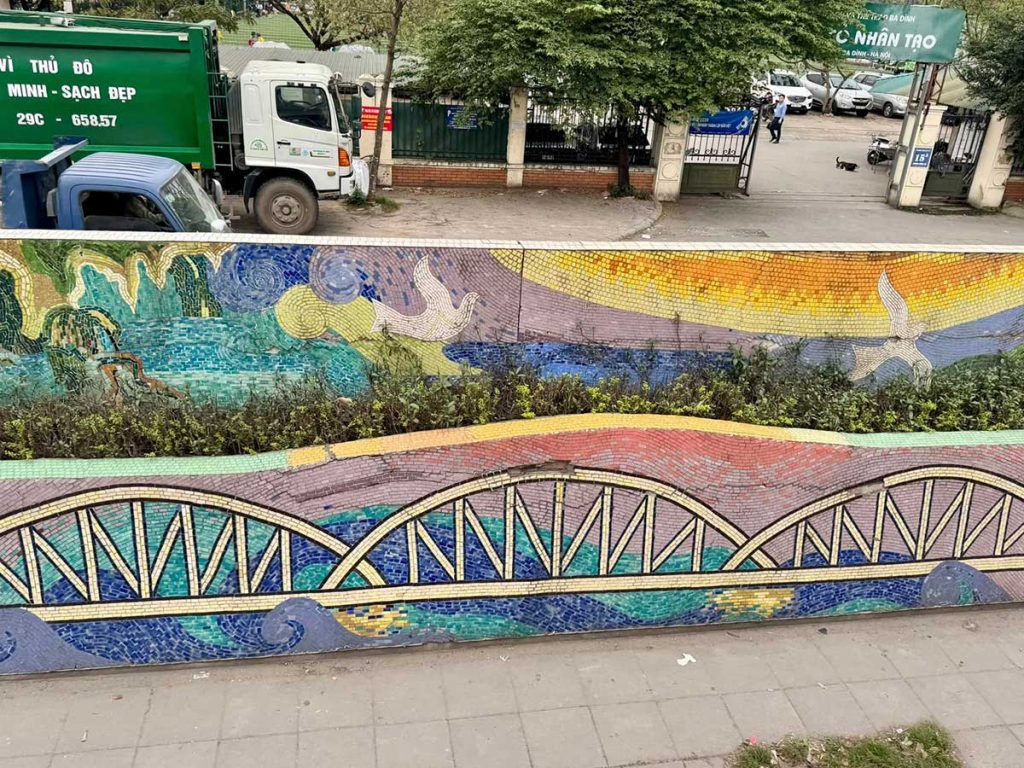
Artists from various countries contributed to the creation of the mosaic wall. It is recognized in the Guinness Book of Records as the largest ceramic mural in the world, stretching over 4 kilometers.
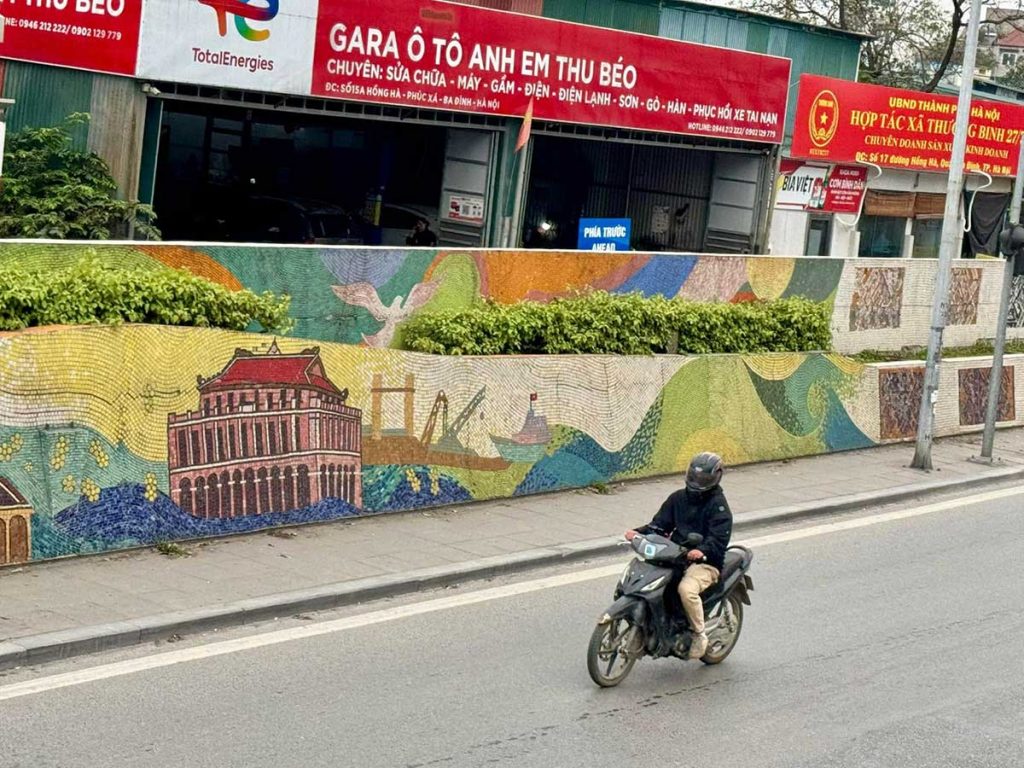
Tran Quoc Pagoda. The oldest in Hanoi. Built 1,400 years ago, though it has been rebuilt and relocated several times. Every visiting president makes a stop there.

The country’s first Confucian university, an ancient and beautiful site, also houses a calligraphy exhibition. Students come here before exams or graduation to seek good luck.
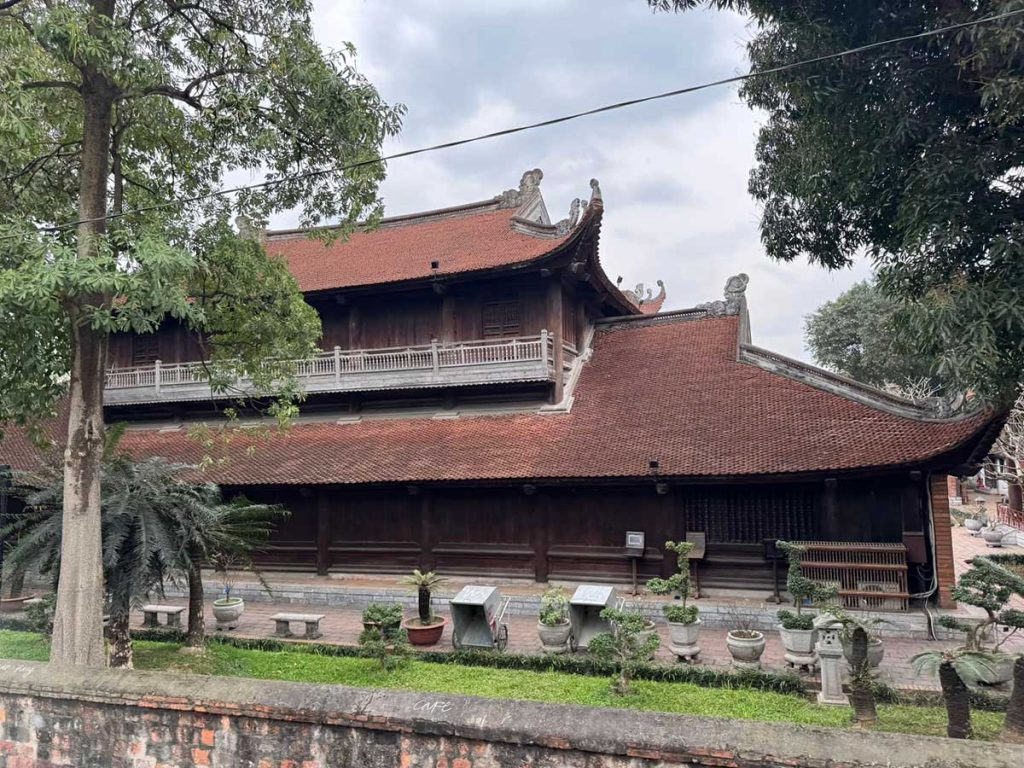
And well, by 5 PM, all the museums were closing, so we didn’t make it anywhere else. (We had a slow morning—had to check out of the hotel and find a place to store our luggage until the evening.) The only thing I truly regret is the Temple of Literature. We should have started there. As it was, we only saw it from above.
A street scene. Notice on the right, under the flower pot, a cylindrical aquarium with live fish! And oxygen bubbles are flowing inside! Imagine a craftsman “fixing a primus stove,” with fish kept for beauty and tranquility—like how offices have aquariums. Except his “office” is the street.
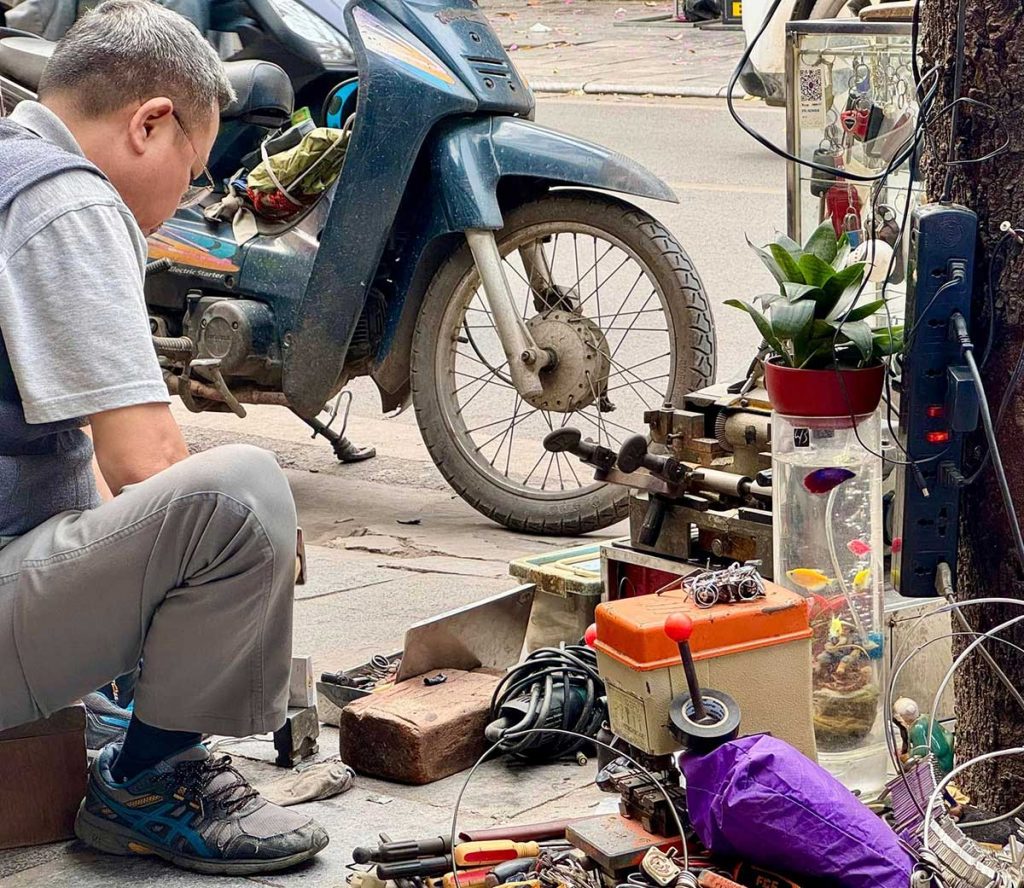
And that’s it for Vietnam. As sad as it is. Actually, it’s very sad! There was so much more we didn’t get to see. But the most important highlights we wanted—Halong Bay, Sapa with its rice terraces and Fansipan, and the Trang An river cruise—we did! And those memories will stay with us forever.

